2017 Chrysler Pacifica: What's It Like to Live With?
Read the latest updates in our long-term road test of the 2017 Chrysler Pacifica as our editors live with this minivan for a year.
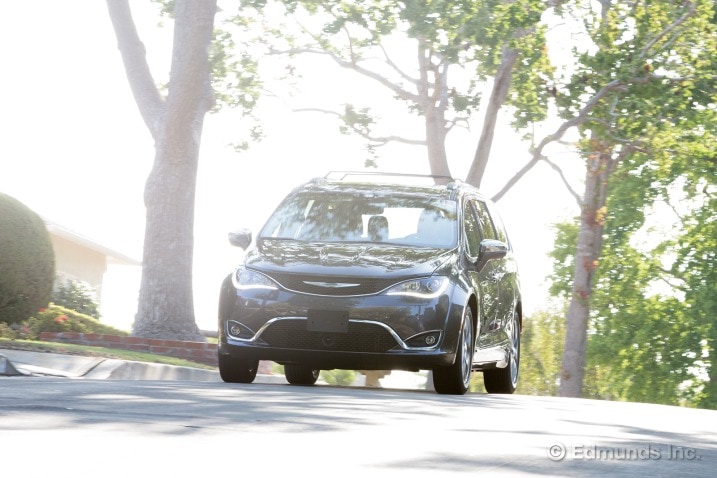
What do you want to know about?
- Introduction
- Going Camping to Get Acquainted
- Only the Teen-Driver KeySense Key Works
- Fuel Economy is Below EPA Average in its First Month
- Getting the Right Keys, Week 1
- Getting the Right Keys, Week 2
- Getting the Right Keys, Week 3
- Finally Getting the Right Keys, Weeks 4-6
- Monthly Update for October 2016
- Performance Tested
- Monthly Update for November 2016
- Monthly Update for December 2016
- Monthly Update for January 2017
- Monthly Update for February 2017
- Monthly Update for March 2017
- The Mindful Minivan
- Monthly Update for April 2017
- Monthly Update for May 2017
- Monthly Update for June 2017
- Monthly Update for July 2017
- Monthly Update for August 2017
- Wrap-Up
Introduction
What Did We Buy?
When Chrysler introduced the minivan in 1984 with its original Dodge Caravan, it was the ultimate family vehicle. It made the station wagons of the time look archaic in comparison, and the vehicles we now know as modern SUVs didn't even exist yet.
Now 30 years on, SUVs have taken over as the vehicle of choice for many families, but the minivan isn't dead just yet. The latest models have features that no SUV can match, and the new 2017 Chrysler Pacifica is the latest example. It has seats that disappear when they're not needed, an on-board vacuum for cleaning up after the kids and even a Wi-Fi hot spot for keeping everyone connected.
This new minivan has more than just a long list of available features. It also has a completely new design inside and out, a more powerful engine under the hood and even a hybrid option. Every element of the Pacifica has been redesigned to make it perfect for families who need a little bit of everything. We intend to see how close Chrysler got to its goal over the next 12 months as we put the Pacifica to the test in our long-term fleet.
What Options Does It Have?
Every Chrysler Pacifica comes standard with a 287-horsepower 3.6-liter V6, a nine-speed automatic transmission and front-wheel drive. The decision comes when it's time to pick a trim level as there are five to choose from: LX, Touring, Touring-L, Touring-L Plus and Limited. In order to experience everything the new Pacifica offers, we chose the top-of-the-line Limited model.
So what do you get with the Pacifica Limited? The features list is long, but here are some of the highlights: an 8.4-inch touchscreen interface with navigation, power sliding rear doors, dual sunroofs, a power liftgate, keyless ignition with remote start, a 13-speaker sound system with satellite radio, an on-board vacuum cleaner, rear parking sensors, blind-spot monitoring, rear-cross-traffic alert, heated and ventilated front seats, heated rear seats and a heated steering wheel.
When it came to options, we added two packages. The Tire and Wheel package adds larger 20-inch aluminum wheels and tires that look considerably better than the standard wheels and tires. We also specified the Advanced SafetyTec package so we could sample the Pacifica's most cutting-edge safety features. It added forward collision warning, forward collision mitigation with automatic braking, adaptive cruise control, automatic wipers, automatic high-beam headlight control, lane departure warning, lane departure intervention, a 360-degree top-down camera system and an automated parking system (parallel and perpendicular).
The KeySense programmable valet key was also on the options list for $175.
Pricing for the Pacifica begins at $29,590 for the base LX. Once you step all the way up to the Pacifica Limited, the base price starts at $43,490. After we added our options our Pacifica listed at $46,460. After discounts and rebates, we ended up paying $43,289 at Russell Westbrook Chrysler in Van Nuys, California.
Why We Bought It
This is Chrysler's bread and butter. If it can't make a good minivan anymore, then it should just pack up and go home.
Our initial test drives suggest that the Pacifica is in fact a top-notch minivan. It feels good from behind the wheel, offers all the latest features and incorporates design elements that separate it from the competition.
Now we're going to find out if all those things add up to a segment-leading vehicle over the long haul. Over the next 12 months we'll subject it to road trips, carpooling, traffic-clogged commutes, and a few things we haven't even thought of yet. And like any other family member, we'll figure out its strengths and weaknesses pretty quickly.
Follow along on our long-term road test blog to get the latest updates and impressions of this all-new minivan.
Edmunds purchased this vehicle for the purpose of evaluation.
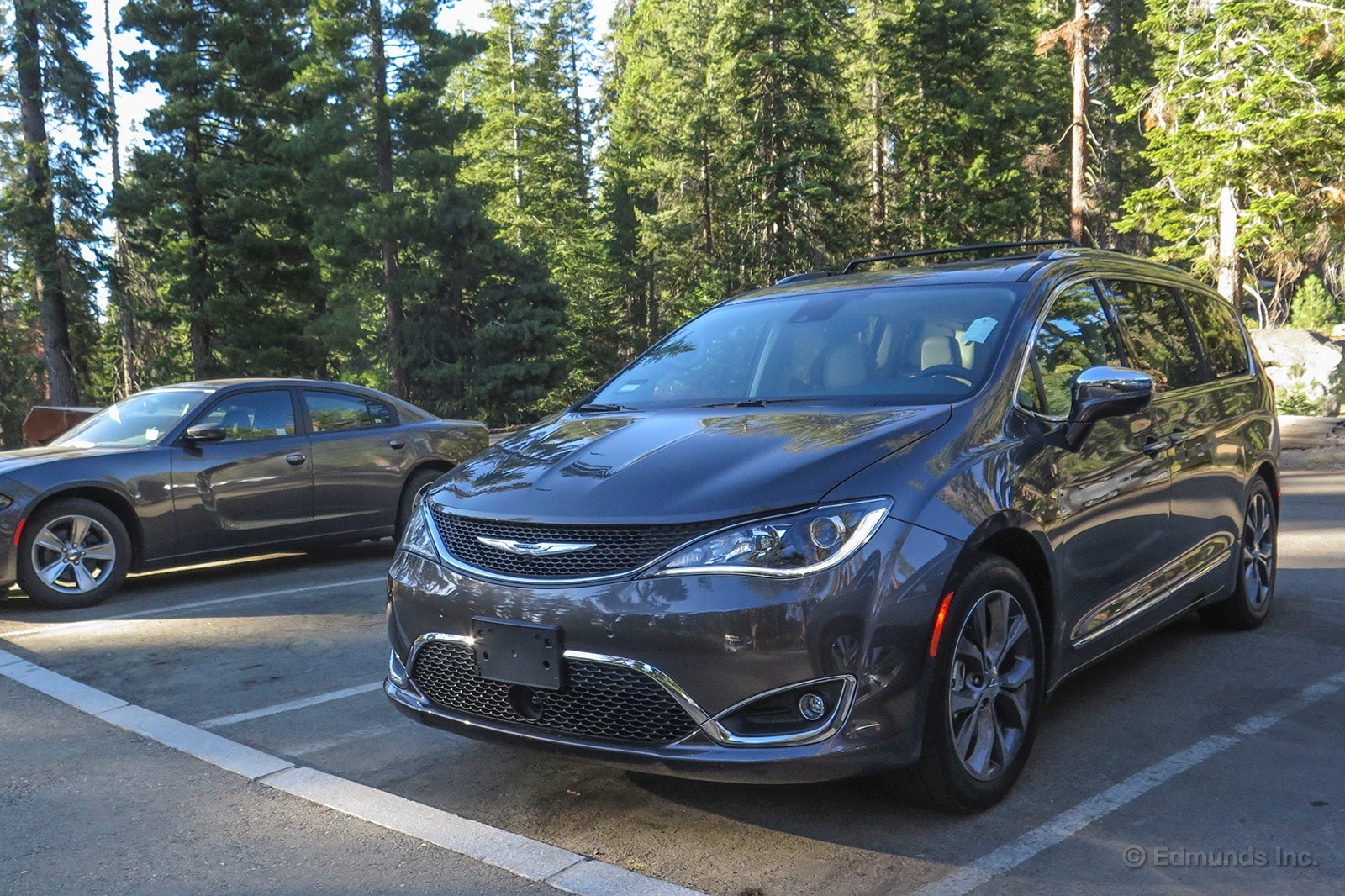
The 2017 Chrysler Pacifica wasn't in our fleet long before I put in my request for the keys. I needed something big, with lots of seating and storage space and our other minivan, the Kia Sedona, was on it's way out.
I was going backpacking with three friends and I needed to haul four days worth of gear. This meant four big backpacks ranging from 45 to 80 liters each. Add to the mix a few boxes with food for base camp, tents and hiking poles, and it was a heaping helping of cargo.
The Pacifica hardly noticed.
Even with all our stuff in the back, there was plenty of room for more. And, if we needed it, there was additional under-seat storage available, too. Oh, and don't forget about the roof racks. This thing has nearly endless small-item storage as well.
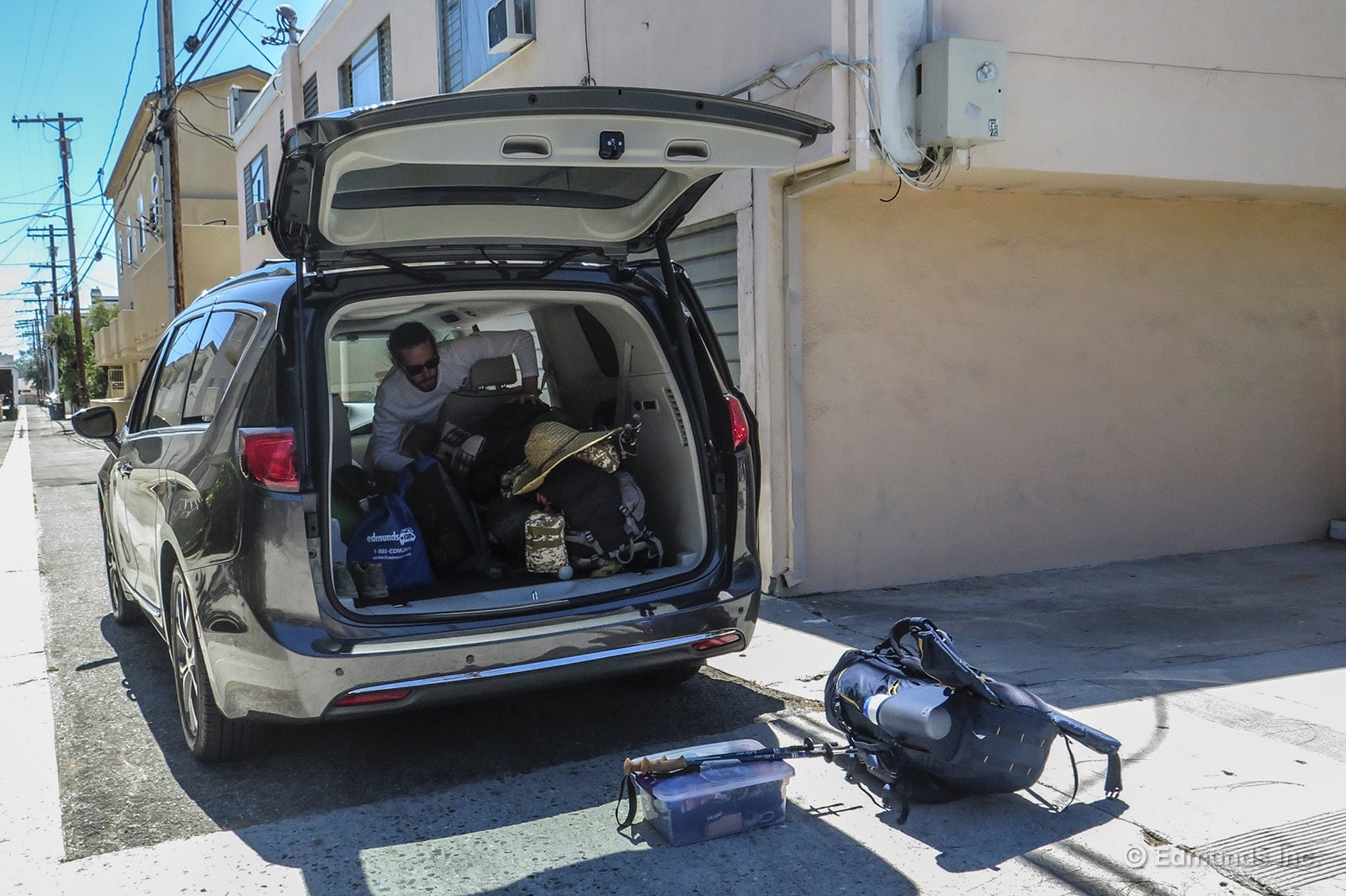
It was about 250 miles to the campground in Sequoia National Park, then another 250 back through the center of California. Temperatures ranged between 90 and 110 degrees on both legs of the trip, but we were all comfortable and cool the entire way.
One problem I did have, was with the Pacifica's nine-speed transmission. It hunted and searched for gears going uphill, and took quite a long time to downshift when I went to pass. I've had some time to drive the Pacifica since this first trip and I still get the impression that the nine-speed is to blame for poor throttle response and weird behavior when climbing a hill.
Mileage suffered a bit, thanks to the many hills, elevation gains and high-temps (constantly blasting A/C), so over 500 miles the Pacifica returned an average of 22.7 mpg (just above the EPA estimated 22 mpg combined), but there's plenty of time left to get it over the 28 mpg highway mark.
Aside from those two small gripes, the Pacifica performed extremely well. Every passenger had positive reviews about the seats, the visibility and the on-road comfort. This minivan has big potential.
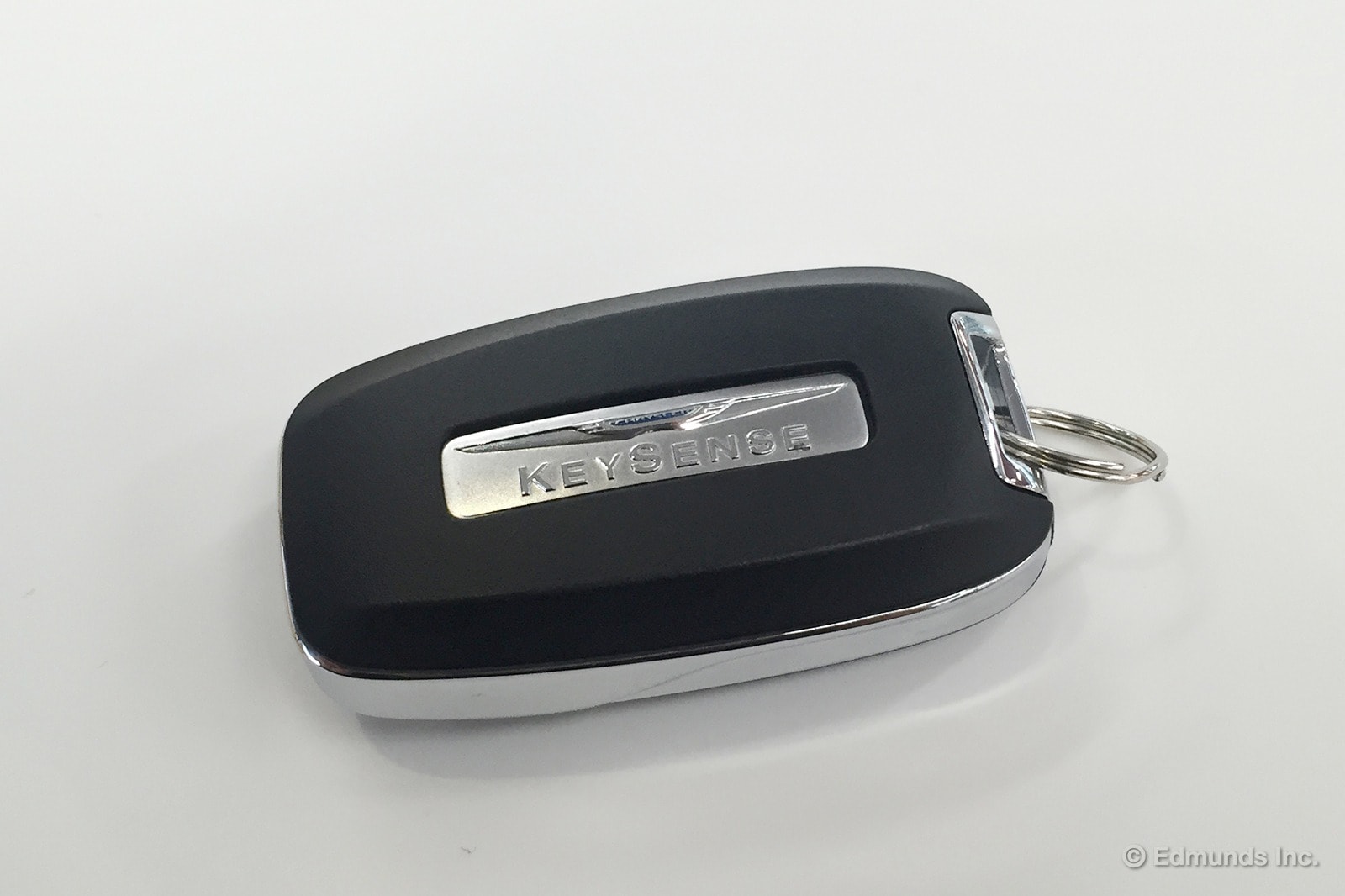
Three keys were included in the purchase of our 2017 Chrysler Pacifica. Two are standard keys, while the other is a "KeySense" fob, an add-on for which we paid $175. Think of it as a teen driver key. Parents are able to limit top speed, set emergency warning/intervention thresholds and restrict satellite radio channels through a PIN-locked menu. The settings are then activated whenever the car is started with the KeySense fob. It's not a bad idea, and in fact there are many vehicles on the market that offer similar watchdog applications.
But due to an oversight somewhere along the buying process, the KeySense fob is the only working key we received at delivery.
Even with the PIN-encoded menu unlocked, there are aspects of the KeySense system that cannot be altered past a certain point, or modified at all.The most annoying aspect is the volume limit, which cannot be increased. While the maximum volume is a decent level for low-speed driving, it's nearly impossible to hear dialogue-heavy podcasts or talk radio at highway speeds. The speed limit is also an issue, at least for us. The limit is adjustable from 65-85 mph, but we need to take our Pacifica to the drag strip as part of our normal vehicle testing process. We tested another Pacifica in the past, and we think our minivan should cross the quarter-mile at about 90 mph.
The Pacifica was initially delivered to our office by drivers from Russell Westbrook Chrysler, the dealership we purchased it from. I was the first to inspect the car to gather several bits of vehicle information and make sure it wasn't damaged before it entered the fleet. I must have used the KeySense key when I did this, otherwise I would have caught this problem sooner. In retrospect, I should have taken all the keys when I went to the parking garage to make sure they all worked, but I have never seen inoperable keys before. That being said, I'm surprised someone from the dealership didn't check for key operation before they handed the Pacifica off to us.
We'll make an appointment to resolve the issue.
Fuel Economy is Below EPA Average in its First Month
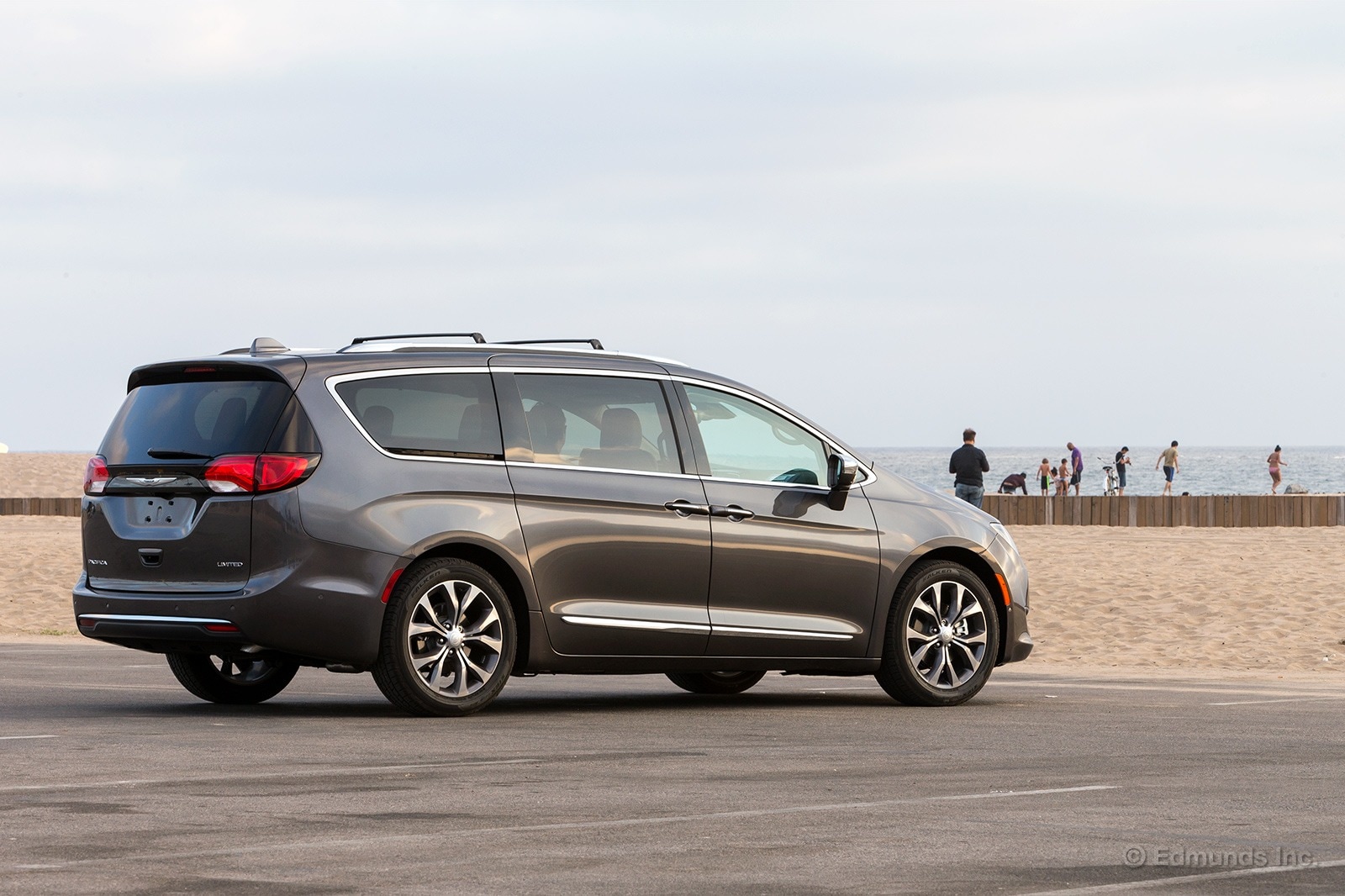
Our 2017 Chrysler Pacifica had a very busy first month, racking up nearly 2,000 miles on the odometer last month alone. It was checked out nearly every night of the month, but despite its packed schedule, we didn't get any fills that came close to the Pacifica's EPA Highway rating.
Our editors drove it primarily around town, picking up kids, groceries, and in my case, baseboards and door moulding.
Travis took it to Sequoia National Park, but the minivan was loaded with passengers and camping gear, with the A/C on full blast to combat the 110-degree exterior temperature. His best fill during the trip was 23.7 mpg, about 4 mpg less than the EPA rating.
As it stands, we have averaged a hair under 20 mpg, splitting the Combined and City rating. Our average will undoubtedly creep up as we use it for road-trip duty.
Worst Fill MPG: 17.0 mpg
Best Fill MPG: 23.7 mpg
Average Lifetime MPG: 19.8 mpg (5.1 gallons/100 miles)
EPA MPG Rating: 22 Combined (18 City/28 Highway)
Best Range: 372.6 miles
Current Odometer: 1,944 miles
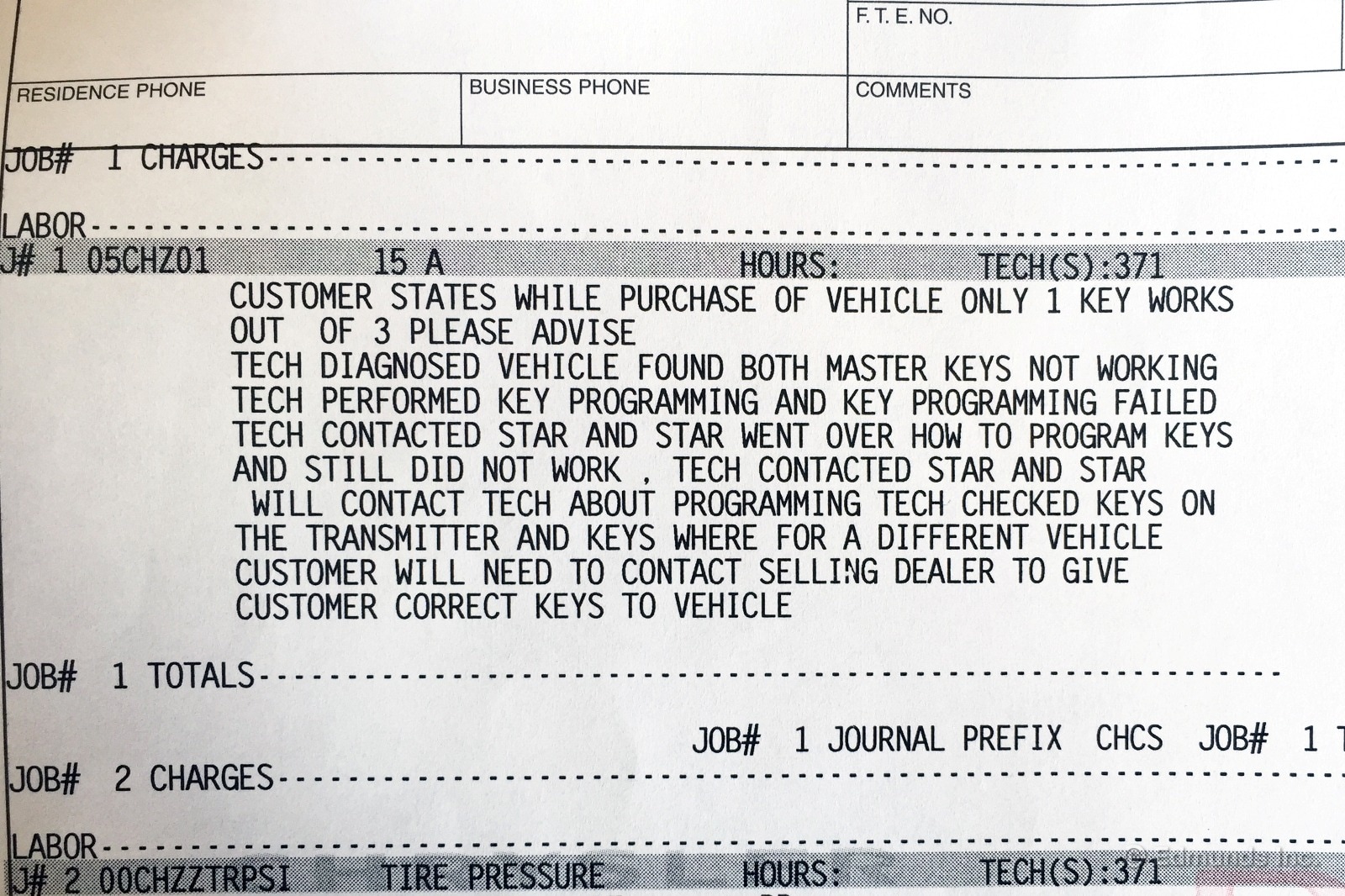
As I mentioned in my previous KeySense post, our 2017 Chrysler Pacifica was delivered to our office with two normal keys and one KeySense teen-driver/valet key that, among other parameters, limits the top speed and the audio system's maximum volume. Due to an error somewhere in the manufacturing or buying process, only the KeySense key worked with our car.
My first thought was that the keys had not been programmed. I needed to find a Chrysler dealer that could help me solve the problem. Little did I know that this would turn into a weeks-long saga (Week 2 | Week 3 | Weeks 4-6).
I grabbed the keys to the Pacifica one Thursday night and took it to my local dealer, the enticingly named Puente Hills Chrysler Dodge Jeep Ram. There was no service lobby, so I stood by my car and waited for an advisor to greet me. I made eye contact with about ten people over the course of five minutes before somebody stopped by and asked if I needed anything. I gave him a rundown of the situation and asked how long it would take to get the keys programmed.
He said about 45 minutes, but he wasn't sure if the technicians had time to take me that evening. He left to check the schedule, then returned and told me there wasn't an open slot until the following Wednesday. I left immediately and rang Santa Monica CDJR, a dealer just down the street from our office. They had an opening first thing Monday, and I booked a reservation.
I arrived at my 8 a.m. appointment and spoke to my advisor, a friendly guy named Arsen. It would take about 45 minutes to an hour to program the keys, so I opted to wait in the lobby. At 9:15 I checked in to see where they were in the process. For some reason, the OBD port was not properly placed and the technicians took longer than usual to locate it. The keys were currently being programmed, Arsen said.
I waited for another 45 minutes before returning to Arsen. He replied that the keys refused the programming attempts and nobody could figure out why. The technicians were contacting Chrysler tech support to see what could be done. I went back to the lobby. Arsen appeared 15 minutes later, explaining that an ETA could not be reasonably given now that the situation was more complicated than they initially believed. I accepted a shuttle ride back to Edmunds HQ.
Arsen called Tuesday afternoon. After multiple failed attempts, the technicians deduced that the keys had already been programmed and could not be reset. Just as our commenters theorized on my previous post, the dealership we bought the Pacifica from had given us another Pacifica's keys. I walked to Santa Monica CDJR Wednesday morning and brought the minivan back to the office.
I rang up Joe from Russell Westbrook CDJR; he is the dealership's sales manager and the agent who facilitated the sale of our Pacifica. Joe was flabbergasted by the mixup and promptly set out to determine what happened. He called back a few minutes later and informed me the vehicle was a trade from Scott Robinson CDJR in Torrance and the keys were likely swapped before everything was transferred to Russell Westbrook. He left a message for the sales manager at Scott Robinson and vowed to call back when he heard more.
Joe called me back on Thursday to tell me that the vehicle actually originated at Moss Brothers CDJR in Riverside, was sold to Scott Robinson and then sold to Russell Westbrook. A sales manager at Moss Brothers found keys that could belong to our Pacifica and mailed them to the Scott Robinson dealership. Joe requested that I email a picture of the physical key inside our KeySense key fob so the manager at Scott Robinson could visually match it with those inside the mailed fobs when they arrived.
I didn't hear back until the following week. More on that in the next post.
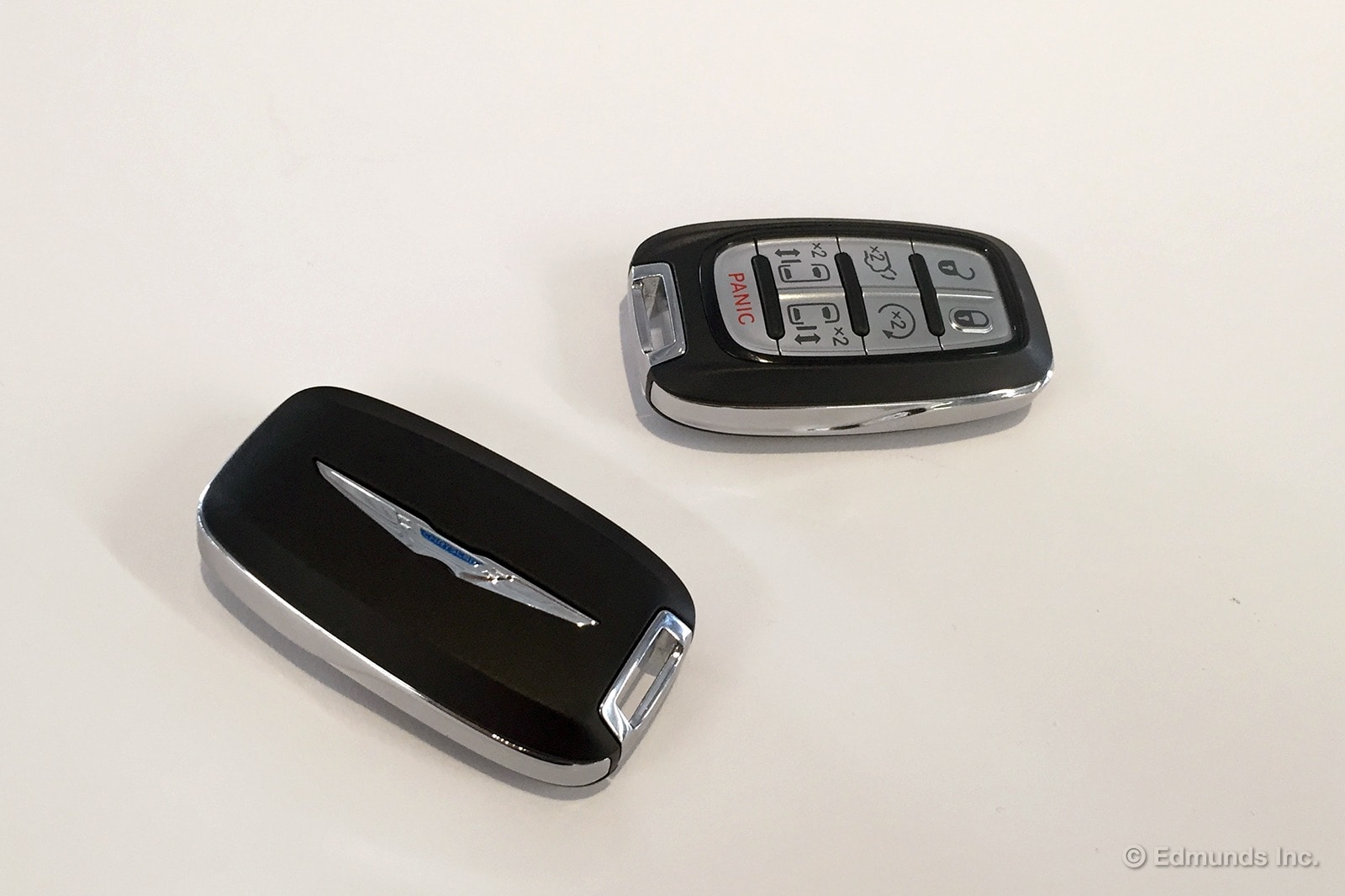
Our 2017 Chrysler Pacifica key saga entered its second week (Week 1 | Week 3 | Weeks 4-6). I heard back from Russell Westbrook CDJR Sales Manager Joe Najar, who told me the physical keys inside the fobs at the Scott Robinson dealership did not match the ones from our Pacifica. Joe agreed to pay for a new set of blank keys, which would be ready to be programmed and cut on Wednesday.
Vehicle Testing Assistant Mike Massey and Editorial Intern Cole Briggs volunteered to take the Pacifica to Russell Westbrook CDJR. Joe had the day off, so Mike and Cole would meet with an employee familiar with the situation.
My first coffee of the day hadn't quite kicked in when Mike rang on Wednesday morning. "Cole and I waited for 30 minutes for this guy to come back, and he just told me they don't have any blank keys. We're coming back."
I hung up and called Joe, who had thankfully given me his cell number. He hypothesized that the blanks had been sold to someone else, although Mike and Cole would later tell me that their advisor said the keys never arrived. Joe assured me that a new set could be overnighted to the dealership. I expressed my reservations about possibly sending staff members to Van Nuys again for no reason. We agreed that a porter from Russell Westbrook would pick the Pacifica up from our office, take it to the dealer and bring it back the same day. We set a pickup time for the following Monday.
Current key count: 3
Chrysler-branded keys (non-functional): 2
KeySense-branded keys (functional): 1
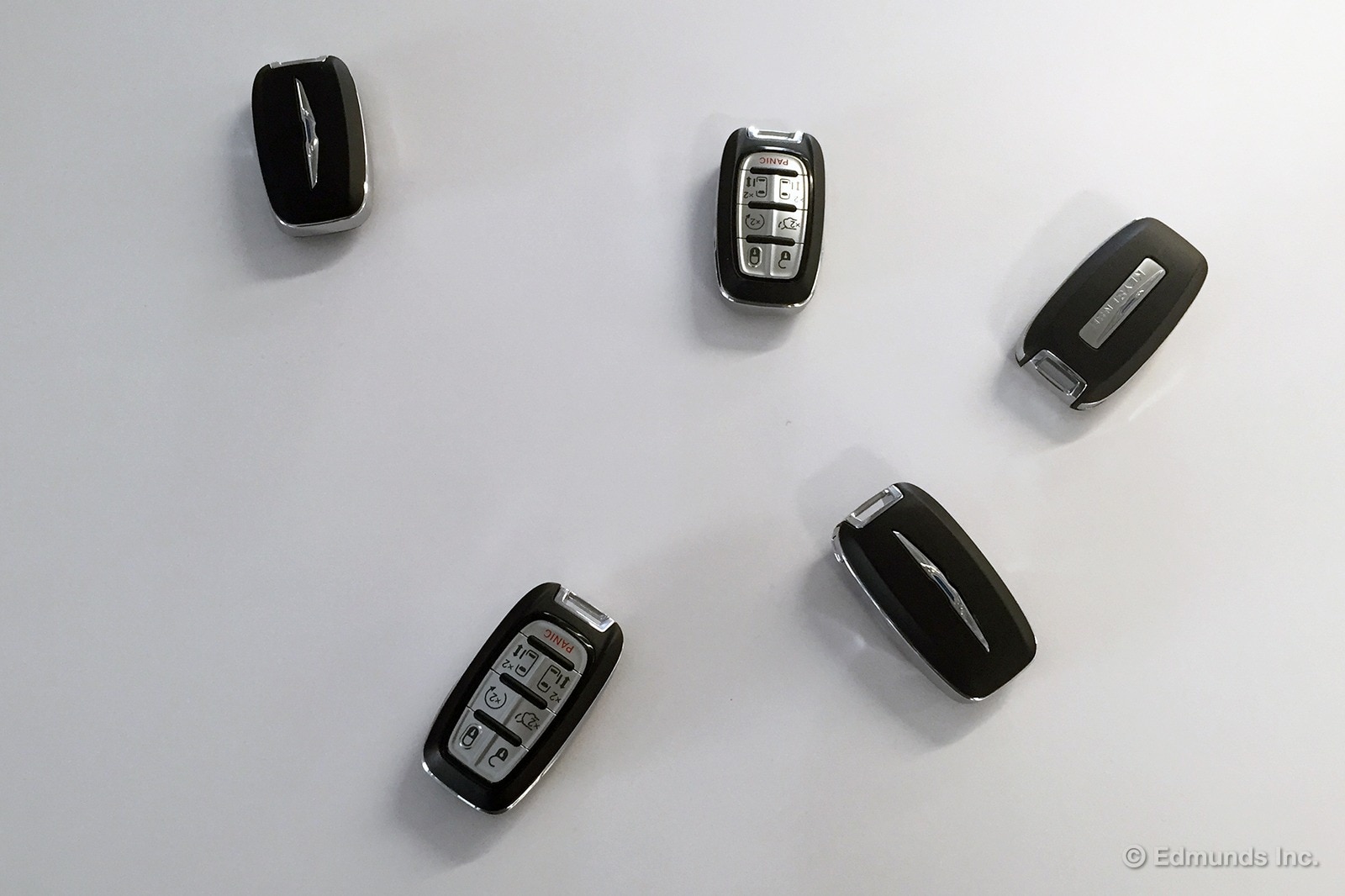
Our journey to get the correct keys to our 2017 Chrysler Pacifica entered its third week (Week 1 | Week 2 | Weeks 4-6) when a porter from Russell Westbrook CDJR picked up the Pacifica from our office at 10 o'clock on Monday morning and took it (and all three keys) to the dealer.
He returned a few minutes before my requested drop-off time of 3 p.m. and handed me three keys. They all said "KeySense" on the back. I sighed and buried my head in my hands.
The two of us went to the parking garage, and I tested the keys to make sure they worked properly. Sure enough, the new KeySense-branded keys started the car in its normal mode, while the true KeySense key started it up in KeySense (i.e., limited-functionality teen/valet) mode. When I got back to my desk, I attached tags to the keys to denote which ones were the "good" keys and which one was "bad." I grabbed one of the normal keys and took the Pacifica home.
When I went to the gym Tuesday night, I threw my wallet and house keys in the glovebox so I wouldn't have to lug them around. I removed the physical key from the fob to lock the glovebox. The cylinder wouldn't turn. I tried several more times to no avail. I stepped out of the car and inserted the key into the driver door lock, praying as I turned it.
Nothing.
I jumped back into the car and, to my surprise, found the two inoperable fobs in the central console. I removed their physical keys in hopes that the techs at the dealership had somehow cut the right keys but put them in the wrong fobs. Those also did not work.
On Wednesday morning, I grabbed the two remaining keys from Schmidt's desk (the fake, "good" KeySense fob and the real, "bad" KeySense fob) and attempted to unlock the door and glovebox with their keys. Those also didn't work.
I called Joe, who again expressed his incredulity at the situation and again was on his day off. He vowed to get back to me on Friday when he was back in the office. On Friday, Joe emailed me to make sure I had tried all five keys, as the service advisor that handled everything on Monday insisted the keys were cut to match the car. I assured him that all five keys were tried. He told me that Moe, the service advisor in question, would get in contact with me by the end of the day to move forward. I said that was fine.
Moe didn't call back by the end of the day. He called on Saturday. Moe said he would order new blanks and they would be at the dealership on Tuesday.
Current key count: 5
Chrysler-branded keys (fobs don't work, keys don't work): 2
KeySense-branded keys (fob works in KeySense mode, keys don't work): 1
KeySense-branded keys (fob works in Normal mode, keys don't work): 2
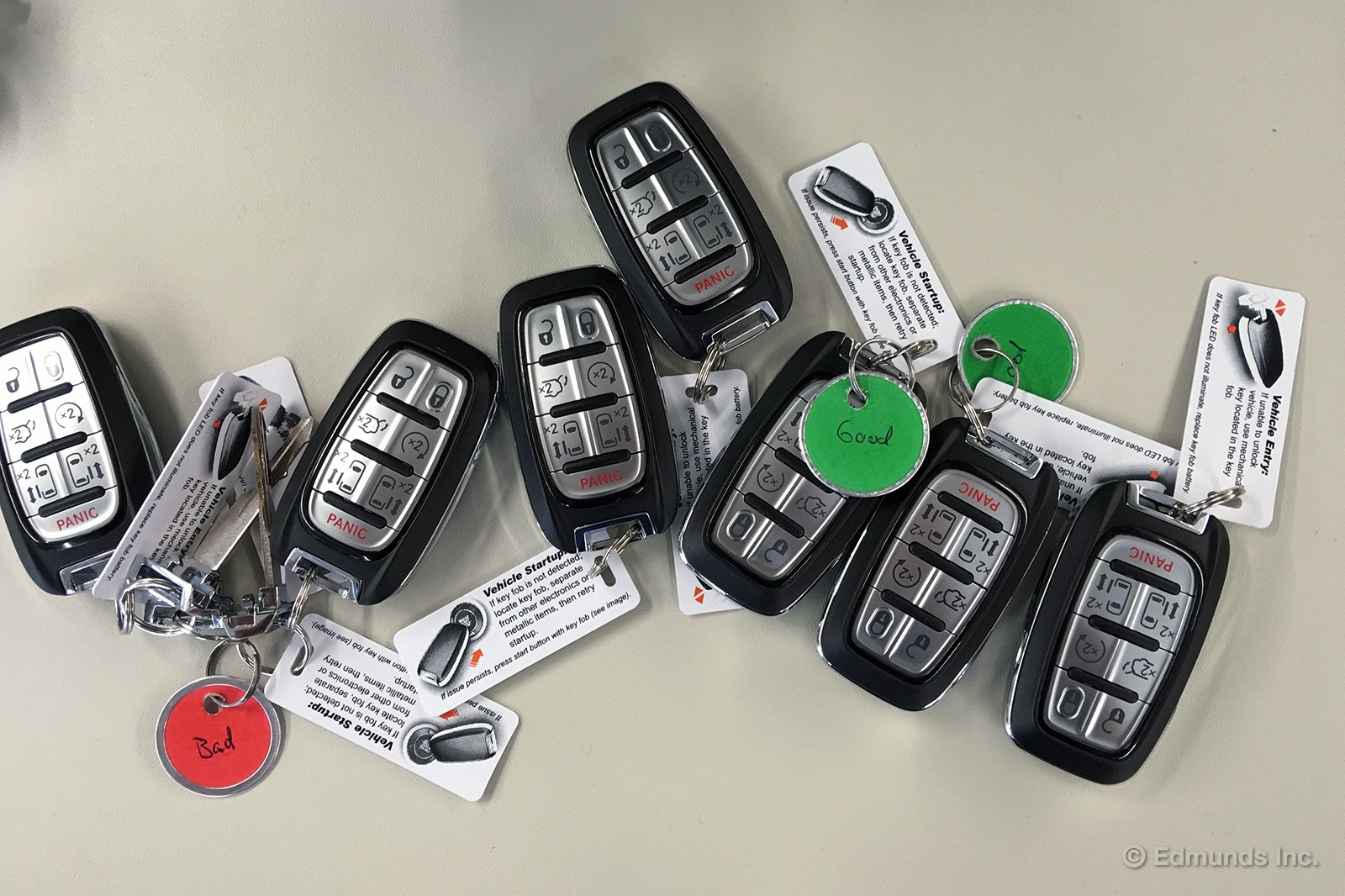
The fourth week of our epic 2017 Chrysler Pacifica key saga (Week 1 | Week 2 | Week 3) began when I called Moe at Russell Westbrook CDJR on Tuesday afternoon to ask about the blank physical keys. He replied that between the time he placed the order on Saturday and today, the new blanks had been relegated to backorder status by Chrysler. There was no way of knowing when the keys would be sent to the dealer. Because the existing physical keys were not matched to our car, if the battery in the fob happened to fail, the driver would be out of luck.
I called Joe on Friday (his next working day) to follow up. I expressed my concerns about waiting indefinitely, and floated another idea. If at least three of our existing keys were cut the same way (as I believed they were), would it be possible to have somebody at the dealership remove the tumblers and set the pins to match the keys? Joe said he would look into it and call me back by the end of the day.
The call never came. I attempted to reach Joe throughout the following week and finally got ahold of him on Friday afternoon. He apologized and explained that Moe was supposed to call me back earlier in the week. I then talked to Moe, who confirmed the blanks were still on backorder from Chrysler, but the dealer could source a locksmith who could set the pins to match our keys.
The Pacifica was out of town through the weekend and would return the following Wednesday, so I set the appointment for Thursday morning. Vehicle Testing Assistant Mike Massey volunteered to return to the dealership, as it's between his house and the office.
Massey arrived at 8 a.m. and was informed of a slight change of schedule. The dealer had two blank physical keys on hand. Moe looked up the VIN and had the keys cut according to the schematic or code (which is what should have happened the first time, as the keys in our faux-KeySense keys appeared to match the one in the KeySense fob that didn't work). With that, Massey left the dealer with a fresh set of perfectly working physical keys fitted into the faux-KeySense fobs.
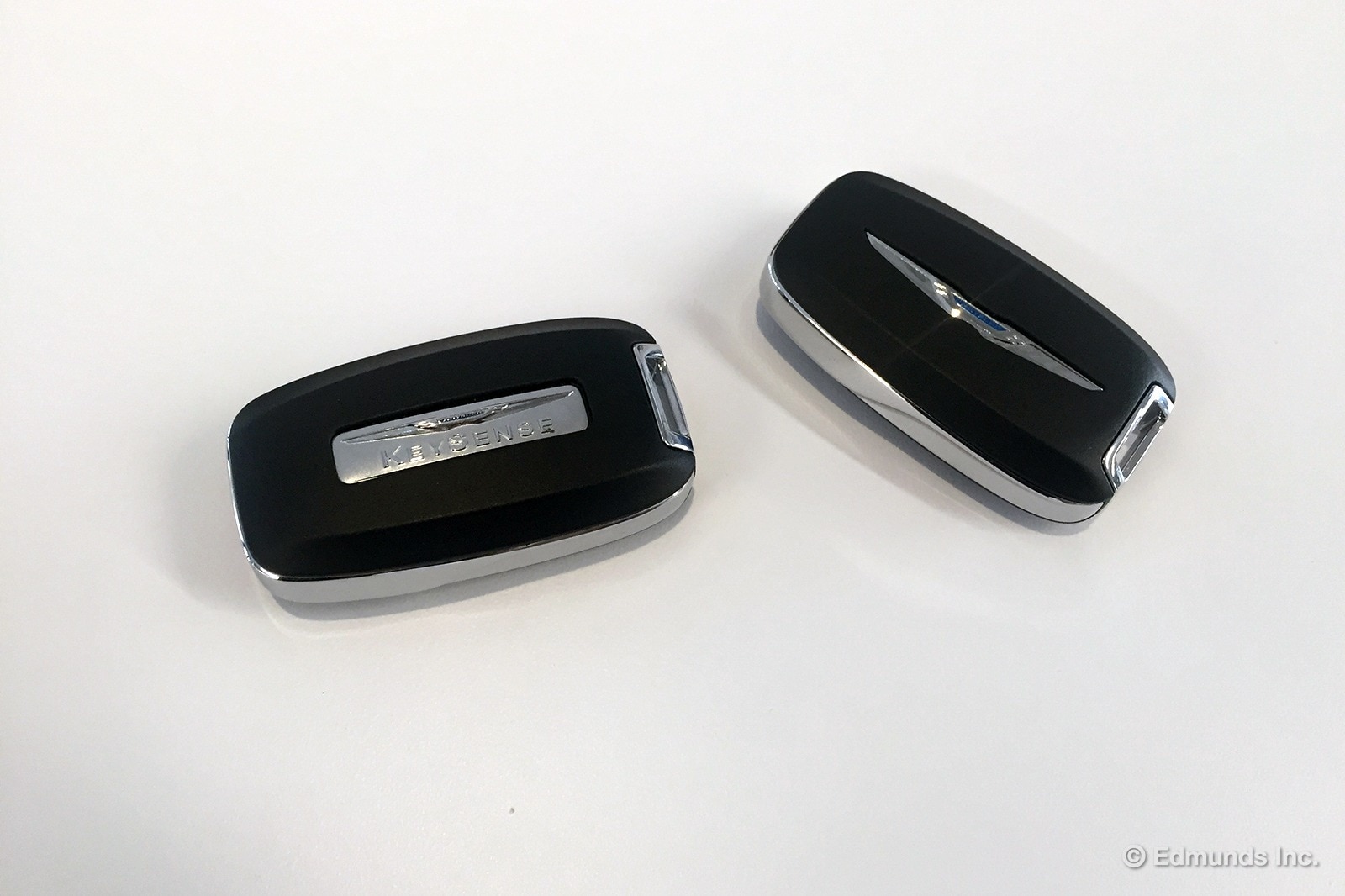
He called Schmidt to check in. They talked things over and agreed it would be difficult to explain the vast number of KeySense-branded keys to whoever buys the Pacifica after its time in our fleet is over. Plus, just on principle, the keys should be exactly how they would have been if everything hadn't been mixed up in the first place. They decided to ask Moe to do us a solid and get two Chrysler-branded keys that functioned normally.
Massey went back to Russell Westbrook and brought his request to Moe. Moe didn't hesitate and said he could fulfill our wish. They had one such fob on hand, but a second would have to be sourced from a nearby supplier. Moe put in the order and had the second fob the next day. Massey arrived bright and early, waited for the key to be programmed, and that was it.
After six weeks, the Pacifica saga was finally over. We now have two fully functional standard Chrysler fobs, one KeySense fob that works as intended and more keys in various states of operation. Here's the full breakdown:
Current key count: 7
Chrysler-branded keys (fobs don't work, keys don't work): 2
KeySense-branded keys (fob works in KeySense mode, key works): 1
KeySense-branded keys (fob works in Normal mode, keys don't work): 2
Chrysler-branded keys (fob works in Normal mode, keys work): 2
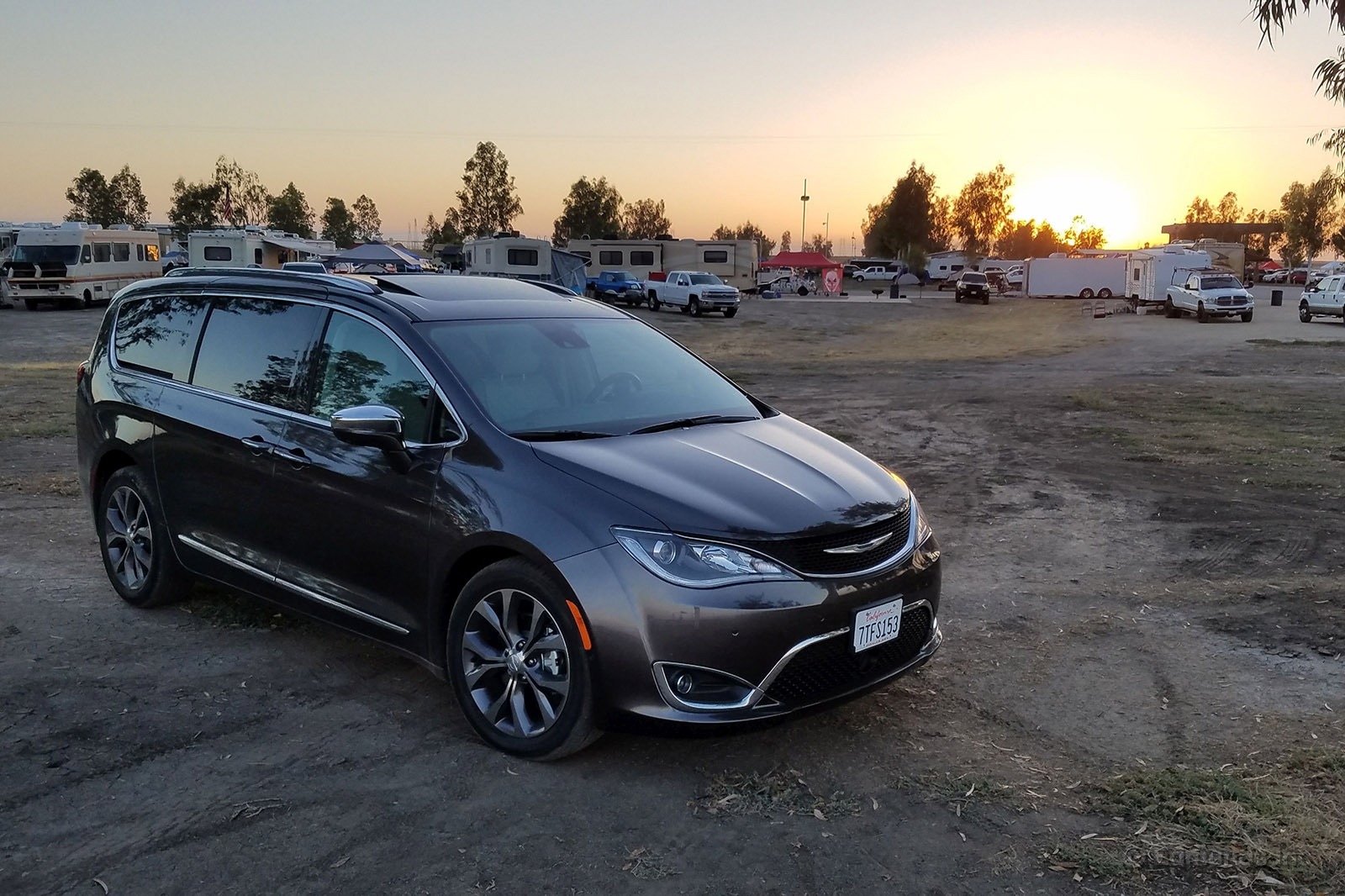
Where Did We Drive It?
Much like the month before, our 2017 Chrysler Pacifica spent most of its time ferrying kids to and from school before our editors headed to work. There were a few detours along the way, however, and not all of them included kids.
Dan Edmunds used the Pacifica as an impromptu camper during a LeMons race on one lonely weekend in Central California. It worked well except for the fact that he forgot a few key pieces of equipment. On another occasion, the Pacifica transported four adults to a local NHL game at the Honda Center in Anaheim, a short trip of about 15 miles each way. Our Pacifica also hauled a floor jack to a driveway oil-change session and swallowed an Ikea dresser during a move.
What Kind of Fuel Economy Did It Get?
We notched our best full month so far, achieving 19.9 mpg over 1,433 miles. Considering that many of those miles were rolled up in urban settings, a 10 percent improvement on the EPA's city rating isn't too shabby. We'll see if we can edge closer to the 22 mpg combined figure with some road trips in the coming months.
Average lifetime mpg: 18.5 mpg
EPA mpg rating: 22 mpg combined (18 city/28 highway)
Best fill mpg: 25.0 mpg
Best range: 424.6 miles
Current odometer: 6,723 miles
Maintenance and Upkeep
None.
Logbook Highlights
Interior
"These vans might be designed for hauling kids, but they're equally adept at carrying adults in perfect comfort. Drove with another couple to an Anaheim Ducks game, and they were pleasantly surprised with the interior of the Pacifica. 'This looks and feels like a luxury car' was just one of their comments from the trip. 'The navigation screen in this car makes my BMW's system look ancient' was another." — Ed Hellwig, Executive Editor
Technology-Audio
"As much as I like the crisp and clear navigation display on the Pacifica, the touchscreen controls are a little too slow to respond for my taste. I often zoom the display screen in and out to see what kind of traffic is up ahead. The '+' and '-' buttons are sometimes hard to hit just right. I always prefer a hard button or knob for that function." — Ed Hellwig
Cargo
"Our Pacifica has a roof rack with stowable crossrails. It only takes a minute or two to change it from full crossbars to no crossbars at all. And no tools are required because it's all done with thumbscrews. Also, note the molded-in tie-down hooks. Well done." — Dan Edmunds, Director of Vehicle Testing
"Only one thing prevented me from getting a good night's sleep in our Chrysler Pacifica... the air mattress I forgot to bring. Spacewise, it's a great minivan for car-camping because of its Stow 'n Go middle-row seats." — Dan Edmunds
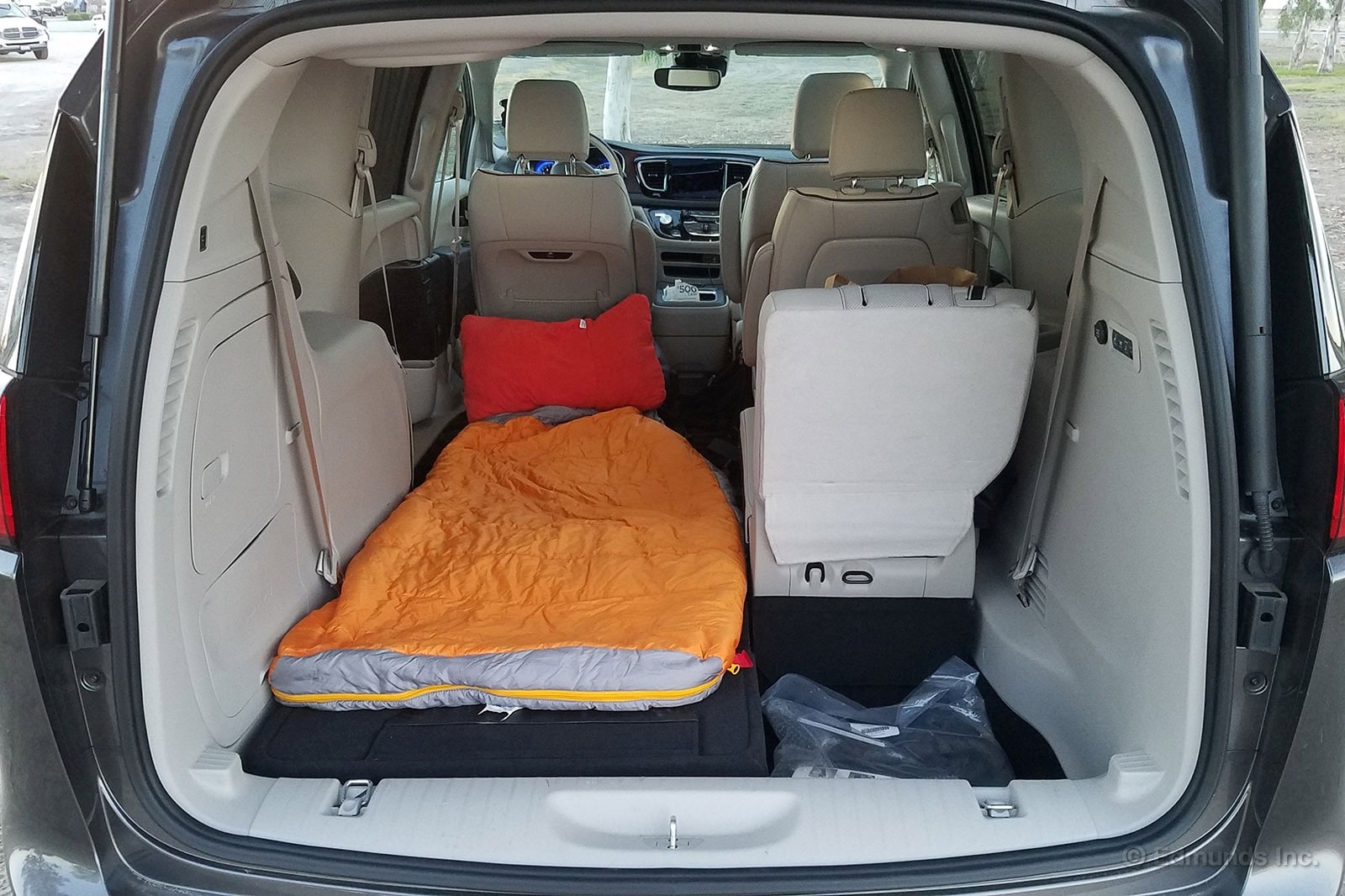
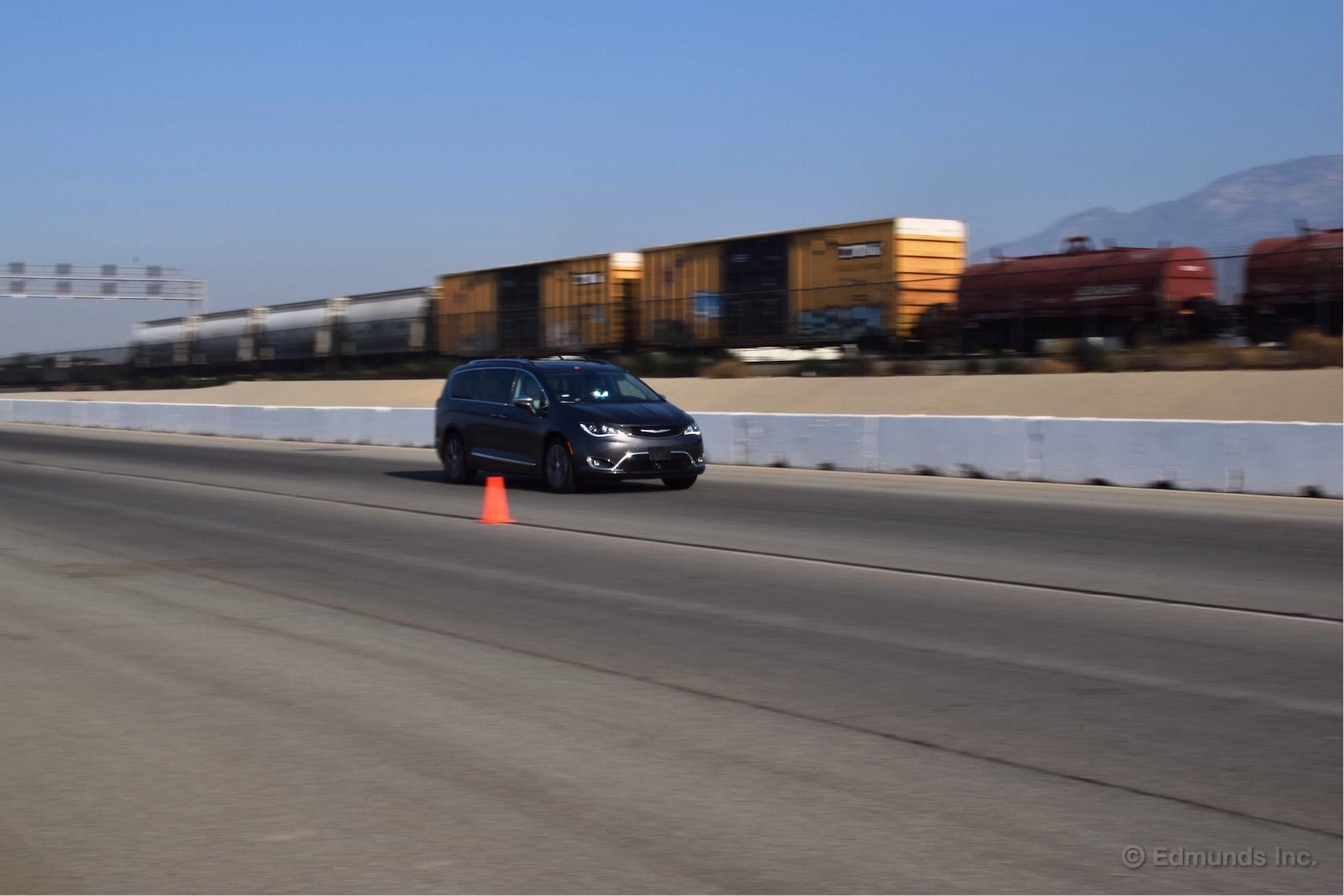
Previously known as a wagon-like crossover from the Daimler-Chrysler era, the Chrysler Pacifica has been reinvented as a minivan, taking the place of the venerable Town & Country. It carries over popular features like Stow-and-Go seating while adding an in-car vacuum cleaner and a much more contemporary look and feel. Our long-term 2017 Chrysler Pacifica has made a favorable first impression, but now it's time to see how it performs at our test track.
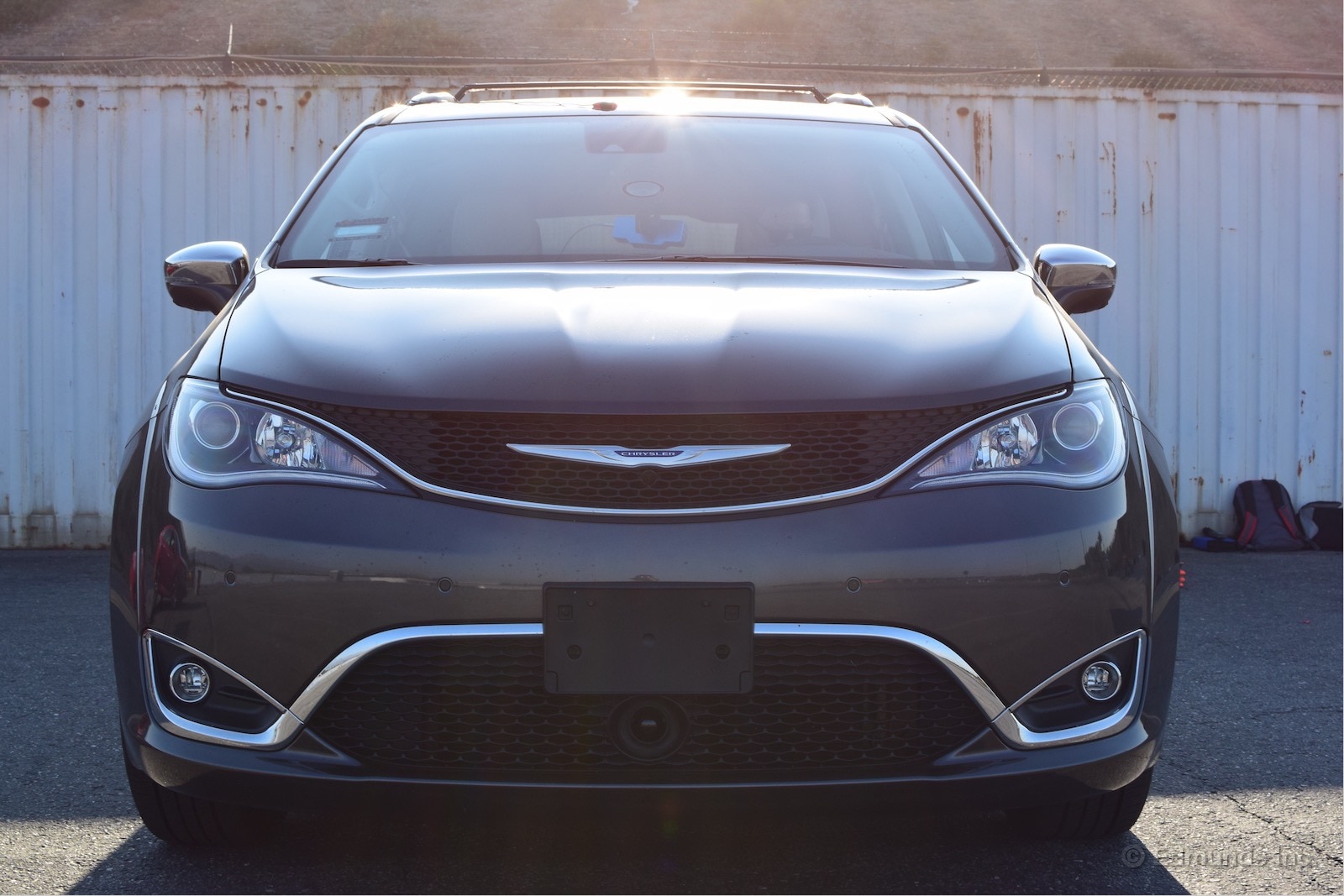
Vehicle: 2017 Chrysler Pacifica
Odometer: 3,165
Date: 8/23/2016
Driver: Jonathan Elfalan
Price: $46,460
Specifications:
Drive Type: Front-Wheel Drive
Transmission Type: Nine-speed automatic
Engine Type: 3.6 liter V6 naturally-aspirated
Displacement (cc/cu-in): 3600/219
Redline (rpm): Not Indicated
Horsepower (hp @ rpm): 287 hp @ 6400 rpm
Torque (lb-ft @ rpm): 262 lb-ft @ 4000 rpm
Brake Type (front): One-piece ventilated discs with two-piston sliding calipers
Brake Type (rear): One-piece solid discs with one-piston sliding calipers
Suspension Type (front): Independent MacPherson strut, coil over gas-charged shock absorbers, stabilizer bar with hydroformed steel perimeter cradle.
Suspension Type (rear): Independent twist-blade with coil springs, twin-tube shock absorbers with integrated rebound springs.
Tire Size (front): 245/50R20 102V
Tire Size (rear): 245/50R20 102V
Tire Brand: Falken
Tire Model: Ziex CT50 A/S
Tire Type: Standard regular all-season
Test Results:
Acceleration:
0-30 (sec): 3.0 (w/TC on: 3.2)
0-45 (sec): 5.2 (w/TC on: 5.4)
0-60 (sec): 7.8 (w/TC on: 8.0)
0-60 with 1-ft Rollout (sec): 7.4 (w/TC on: 7.5)
0-75 (sec): 11.6 (w/TC on: 11.9)
1/4-Mile (sec @ mph): 15.8 @ 89.6 (w/TC on: 15.9 @ 89.1)
Braking:
30-0 mph (ft): 29.9
60-0 mph (ft): 120.5
Handling:
Skidpad Lateral Acceleration (g): 0.82 (0.79 w/ESC on)
RPM @ 70 mph: 1,900
Acceleration comments:
The Pacifica isn't in a hurry to leave the line, even with the accelerator floored. This could be due to transmission shift calibration or a lack of low-end torque, but below 3000 RPM there isn't much shove. Above 5500 rpm is where the engine feels strongest and the transmission shifts smoothly and acceptably quickly. Which is surprising considering this is the same ZF 9-speed automatic that has driveability issues in nearly every other application. The available drive modes are "drive" and "low" so there is no way to select gears or induce a downshift to test whether the engine matches revs. It will not hold gears because of this either. With traction control on or off, the Pacifica will not get wheelspin leaving the line or at any point during the run. Our quickest run was achieved with "low" mode selected and just a moment of power braking (overlapping the brake and throttle) letting the engine rpms rise to about 1250 RPM, versus going directly from brake to throttle like on the key up run.
Braking comments:
Nosedive is mild, less than we'd expect from a minivan. Pedal effort is on the soft side, but not mushy, and remained consistent after several runs. ABS emits plenty of noise, but it's not startling or overly "crunchy".
A subtle wiggle from the tail was noticed on a couple of runs, but not to the point where steering input was required. Stops straight and is controllable. (MT)
Handling comments:
Overall the Pacifica has a moderate to heavy amount of understeer, which means it wants to carve a wider line than you intend.The steering has good on-center feel but that's about it. There is a lack of feedback and precision at the front wheels. The assist level is consistently light throughout the steering range, but not feathery. It's an appropriate amount of assist. The body rolls softly and to a moderate degree, but it doesn't feel sloppy. It's a good balance between comfort and composure. Skidpad speed seems to be more controllable in low gear. Also, in low gear the Pacifica seems to have help turning in from the brakes.
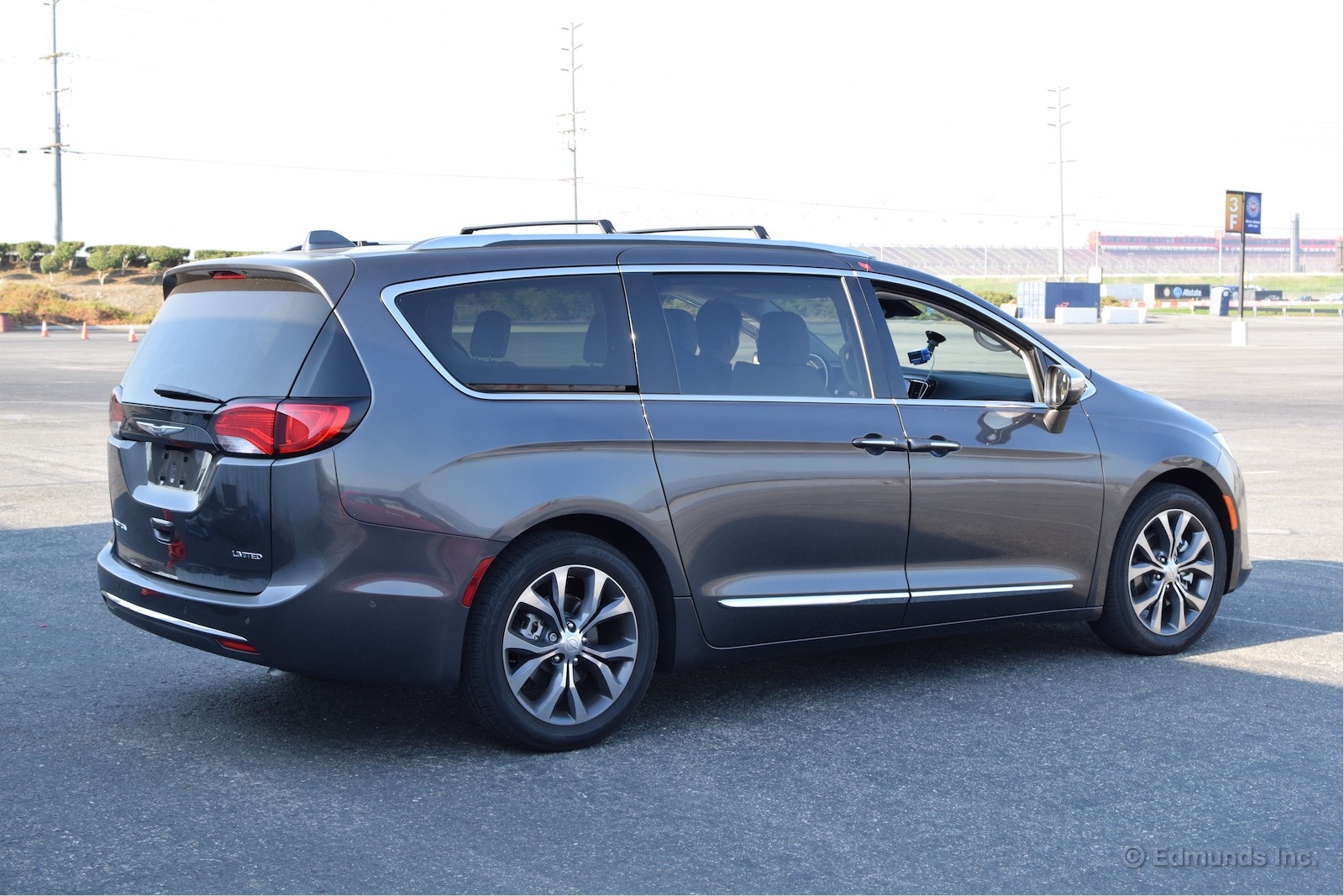
Monthly Update for November 2016
Where Did We Drive It?
Unlike in previous months, our 2017 Chrysler Pacifica spent more time on the open highway than it did on school duty or in commuter traffic. In the month of November, the van was largely hogged by me. And in typical minivan fashion, it spent its days shuttling our crew to and from family gatherings.
I initially snagged the Pacifica for a trip to meet relatives in Yosemite National Park. It was during these 700 miles that I gathered most of my driving impressions. But after the big trip we also took day trips all over Southern California to hang with family, including over the long Thanksgiving weekend. Almost three weeks' worth of adventures spanned the counties of Fresno, Kern, Los Angeles, Madera, Mariposa, Orange, Santa Barbara, Tulare and Ventura.
What Kind of Fuel Economy Did It Get?
The Pacifica covered nearly 1,600 miles this month. Many of these were on the highway, so it wasn't a huge surprise that we increased our lifetime fuel economy by 0.5 mpg and recorded our highest range on a single tank, though it beat the previous record by just two miles. Our most efficient tanks for November were 24.4 and 24.3 mpg.
Average lifetime mpg: 19.0 mpg
EPA mpg rating: 22 mpg combined (18 city/28 highway)
Best fill mpg: 25.0 mpg
Best range: 426.6 miles
Current odometer: 8,190 miles
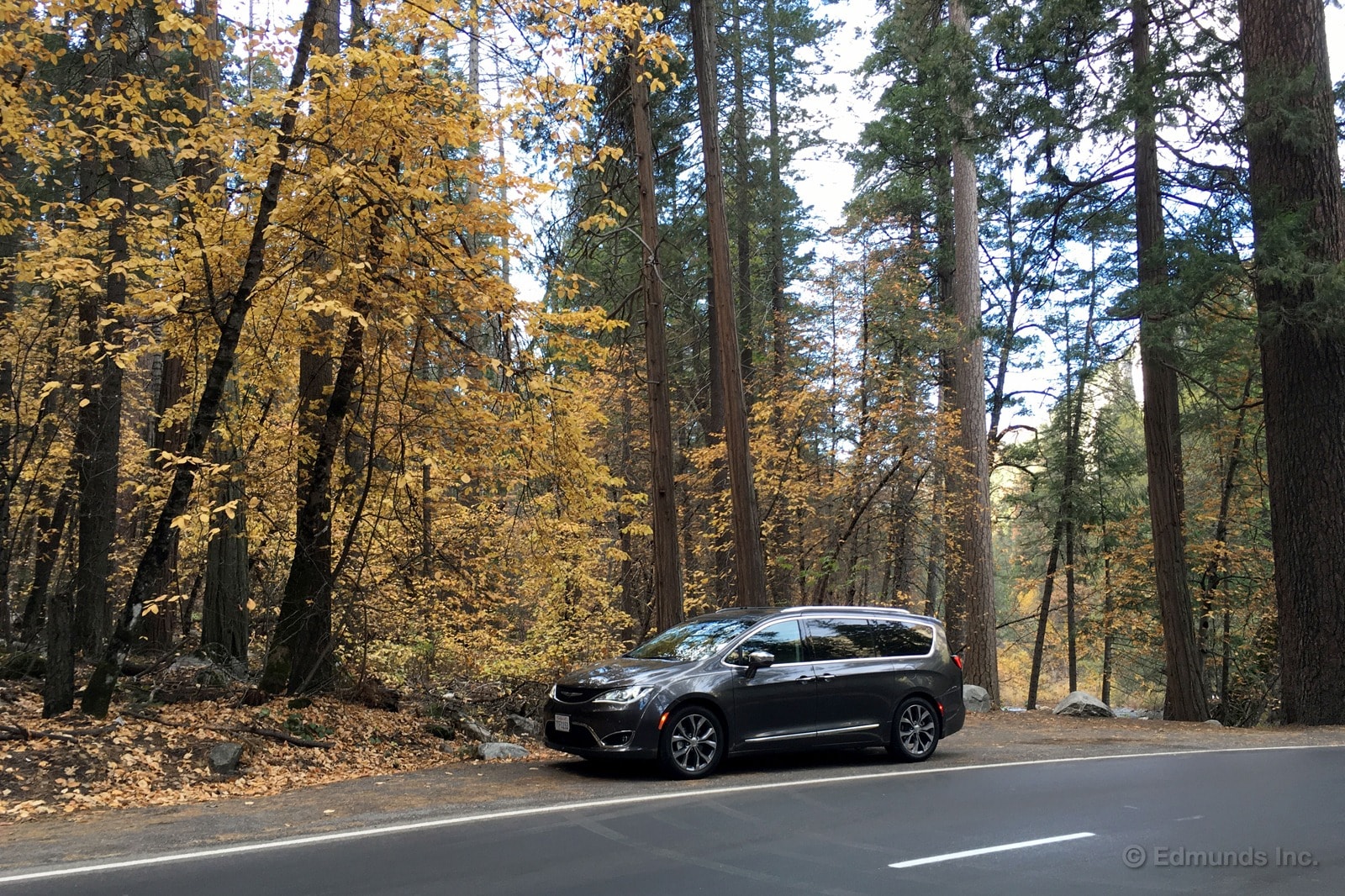
Maintenance and Upkeep
None.
Logbook Highlights
Interior
"Drove the Pacifica to Yosemite National Park last weekend. One feature of our Pacifica Limited that added a special element to the trip was its dual sunroof. So much of the scenery down in the valley is vertical, so the ability to look through the roof rather than crane our necks to see out of the side windows made the views that much more memorable." — Mike Schmidt, Senior Manager, Vehicle Testing
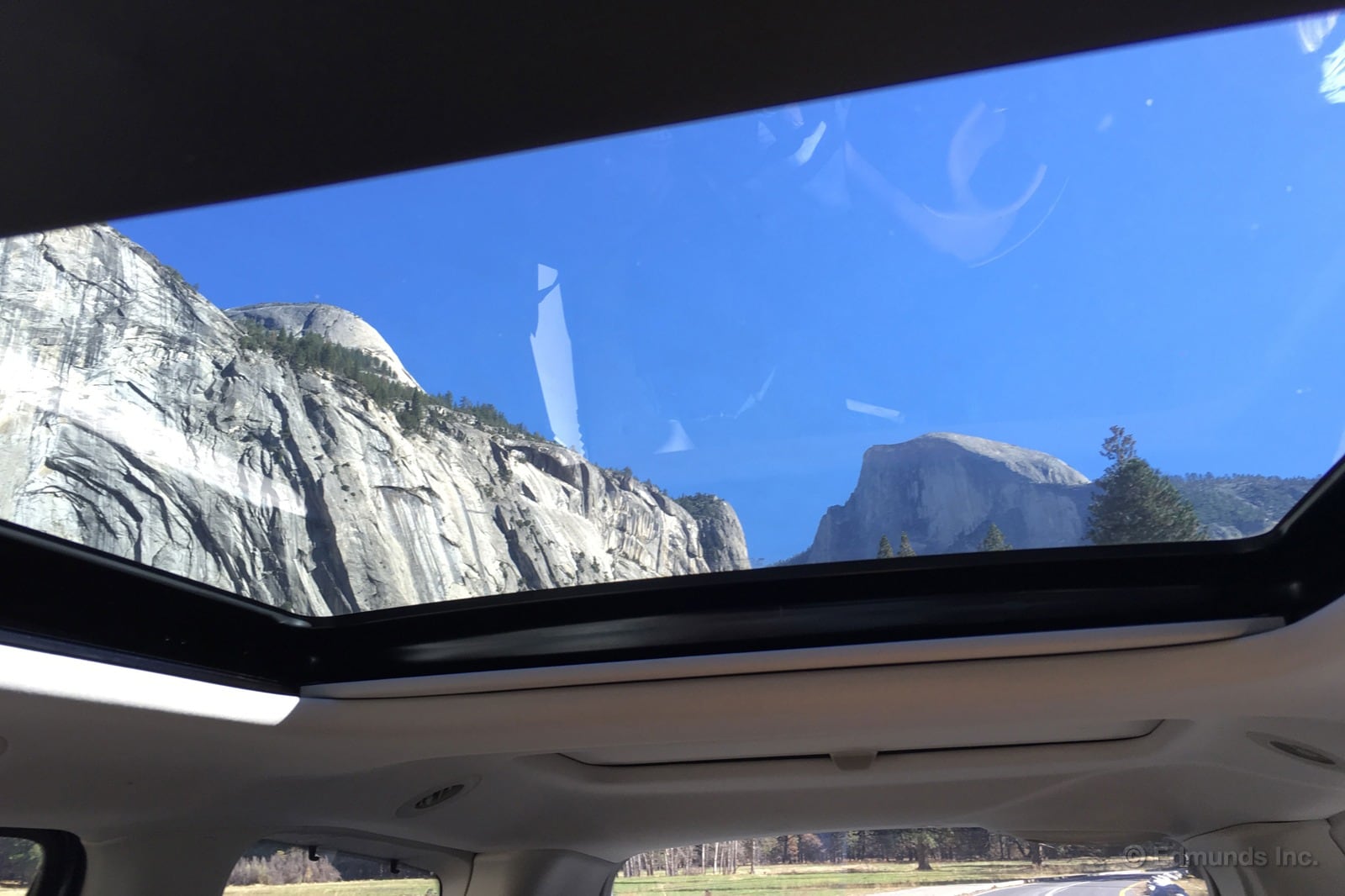
Comfort
"After two six-hour stints in the driver seat of our Pacifica, I can confidently say that it is not comfortable. The seat bottom does not angle upward enough to allow my legs a chance to relax. And the resulting position keeps my right foot at such an angle that the top of my ankle cramps up. The awkwardly firm seat padding seals the deal. This is not my favorite road-trip minivan." — Mike Schmidt
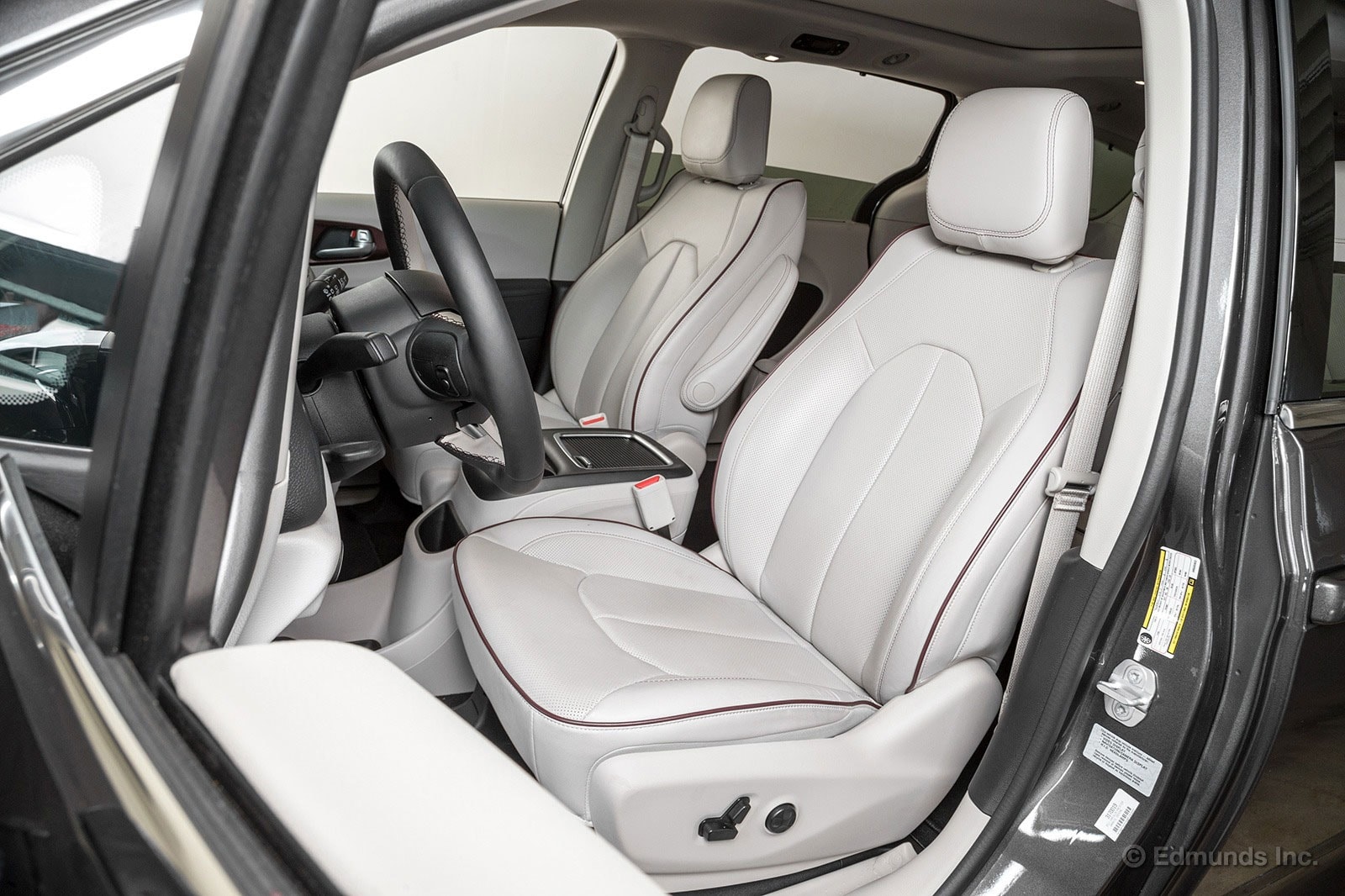
Technology-Audio
"This is not a refined adaptive cruise control system. It's as if it slows down in two stages. Stage one is smooth. It reacts well to the vehicle ahead and initially squeezes the brakes lightly. Stage two is frantic. As the car ahead continues to slow, the Pacifica waits too long and then grabs the brakes heavily to compensate. It uses a similar logic when accelerating back up to speed. It waits a bit too long then surges abruptly." — Mike Schmidt
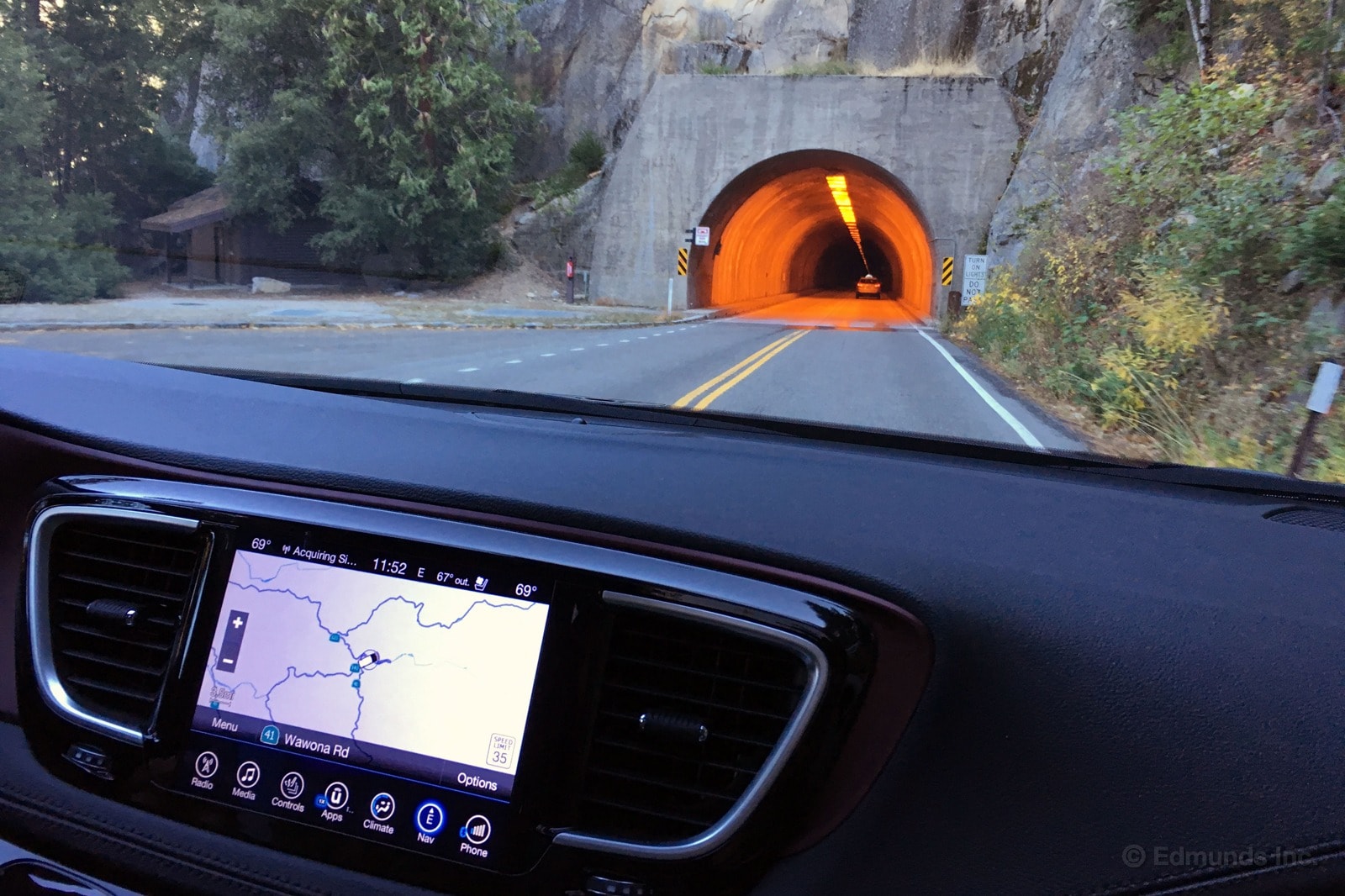
"I tried the automatic high-beam headlight control for the first time along Highway 41 entering Yosemite. On gradual sweeping turns, it worked OK. It dimmed the lights a bit later than I would have, but it did so before blinding oncoming traffic. But on tighter turns, it failed so frequently that I turned it off. I could see the lights of oncomers illuminate the trees before we entered a turn, but the van had no idea. It would dim the beams way too late, if at all." — Mike Schmidt
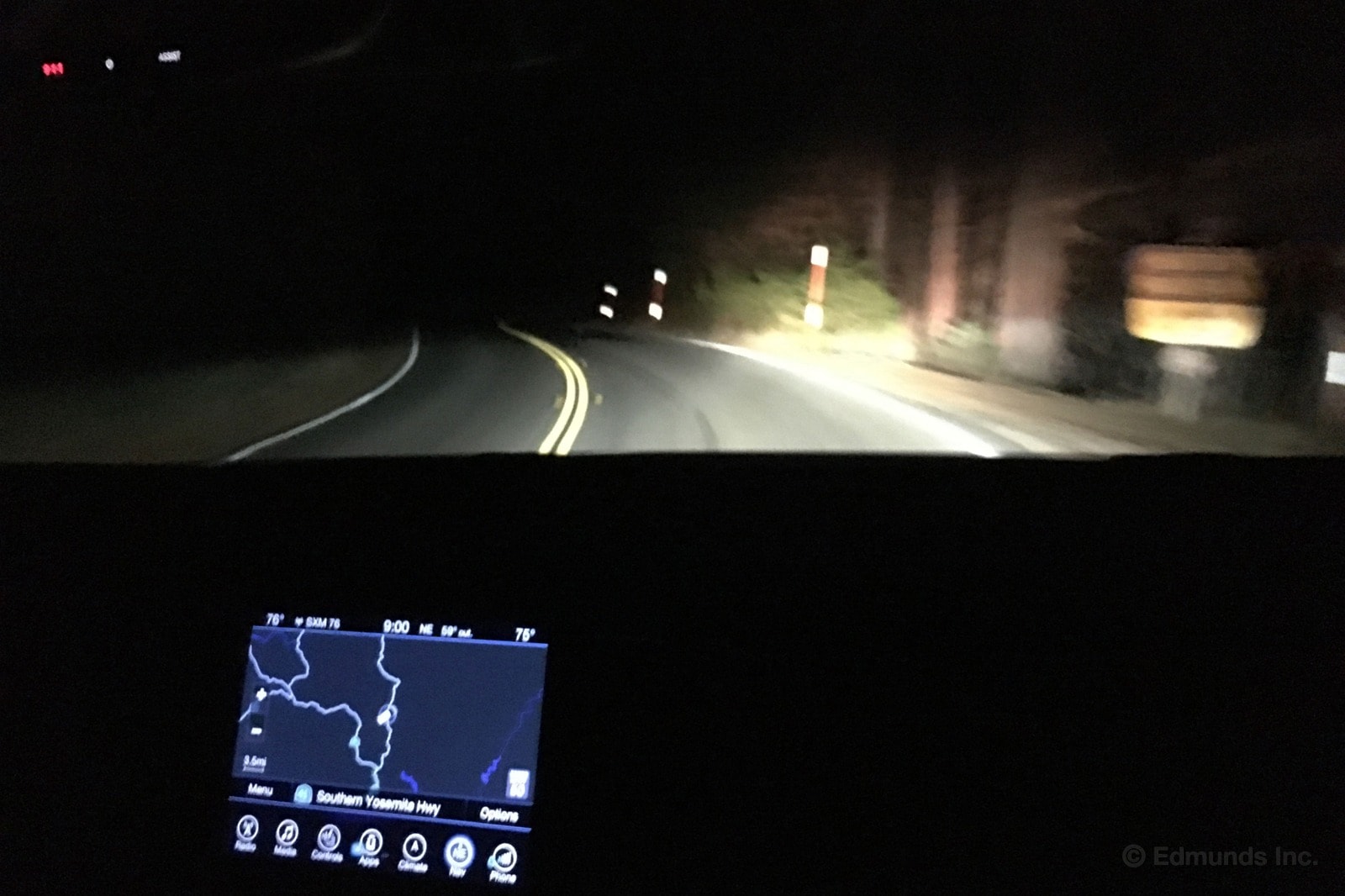
"The Advanced SafetyTec package includes lane departure warning and lane departure intervention. Both drive me nuts. If I don't signal when changing lanes, the Pacifica thinks I am wandering in my lane. It will fight my steering input, nudge the wheel back to where it thinks I should be and center me in the lane, if I allow it. Maybe that's forgivable on the rare occasion I fail to signal. But it also tugs the wheel near poorly painted lane markers or if I swerve gently to avoid an obstacle in the road ahead. It can be desensitized but not deactivated. I appreciate what it's trying to do. It just isn't good at it." — Mike Schmidt
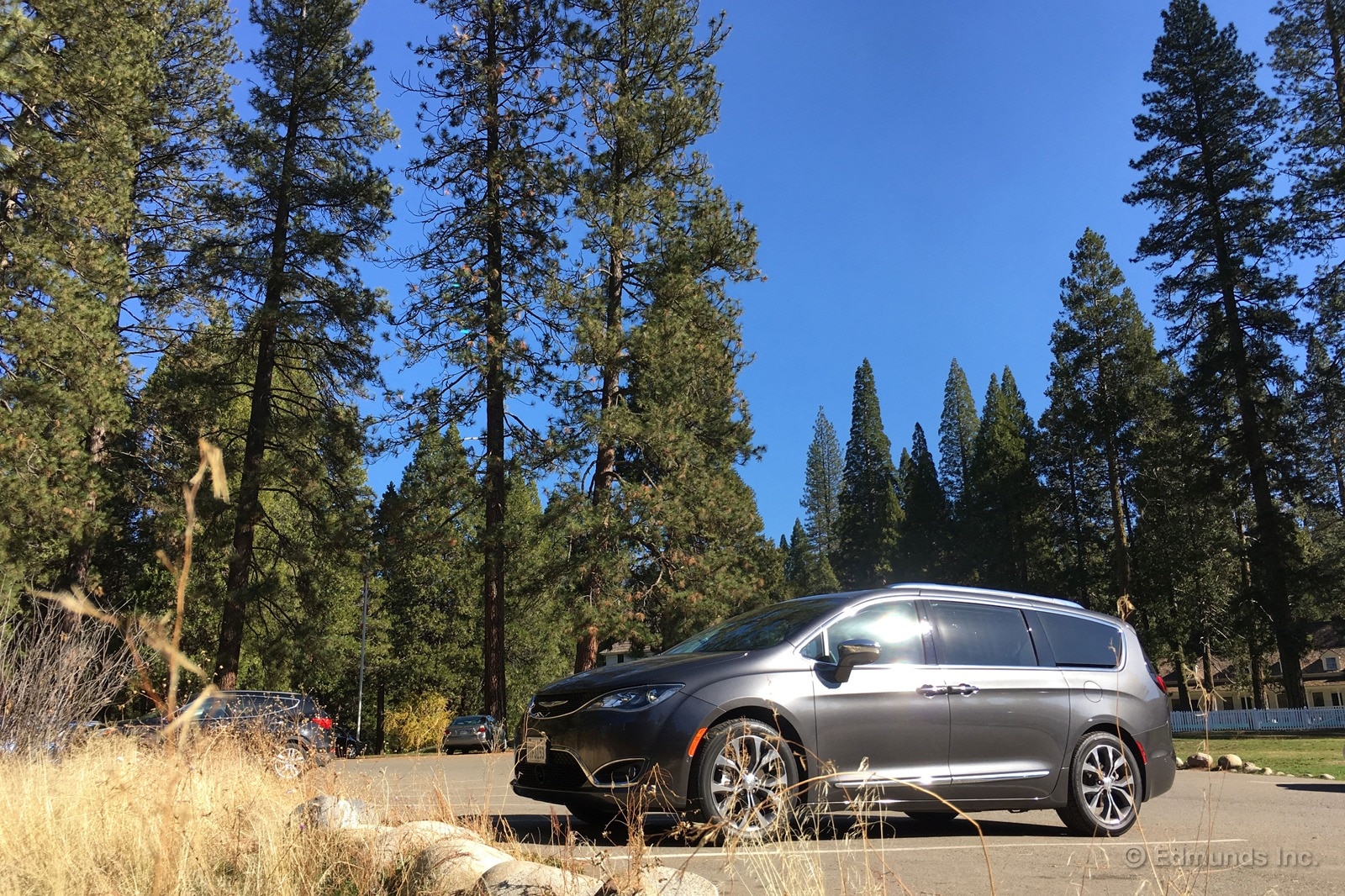
Monthly Update for December 2016
Where Did We Drive It?
The month of December slipped quickly into holidays as it always does, which means vacations were underway and people were traveling to various locations to spend time with family. Edmunds Chief Revenue Officer George Kang was able to spend some quality time and log miles in our 2017 Chrysler Pacifica, which included a trip up to the snowy peaks of Mammoth Mountain in Mammoth Lakes, California.
During his round-trip drive spanning 12 or so hours, he came away impressed with the ride quality and handling (he owns a 2007 Honda Odyssey Touring). He also lauded the Pacifica's stowaway middle row for its uncanny ability to swallow, with ease, four pairs of rental skis and a snowboard, greatly simplifying transport to and from a local ski shop.
Minivans are still the ultimate road-trip vehicles.
What Kind of Fuel Economy Did It Get?
With over 1,400 miles traveled during the month of December, the odometer is the only thing that budged on the Pacifica's fuel spreadsheet. Average lifetime mpg stays at an even 19.0 mpg, which isn't surprising after seeing our monthly average mpg clock in at 19.2, a dip from the previous month's highway-heavy figure. We're still a ways from matching the EPA highway target of 28 mpg, but we have six more months to try.
Average lifetime mpg: 19.0 mpg
EPA mpg rating: 22 mpg combined (18 city/28 highway)
Best fill mpg: 25.0 mpg
Best range: 426.6 miles
Current odometer: 9,626 miles
Maintenance and Upkeep
None.
Logbook Highlights
Performance
"Try as I might, I can't get the Pacifica's ZF-built nine-speed automatic to behave badly. It was equally difficult to get the same transmission in our long-term Acura TLX to act right. Ditto the ZF nine-speed in our Jeep Renegade. I was convinced that this transmission compromised every car it ended up in. Not sure what Chrysler did to tame it, but it feels just fine in this application, upshifting smoothly from a stop and not really drawing attention to itself." — Josh Sadlier, Content Strategist

Interior
"I can't believe nobody's hooked up the vacuum in our Pacifica yet. I just did. And it works great. I guess that obligates me to clean up this disgusting carpet." — Mike Schmidt, Senior Manager, Vehicle Testing
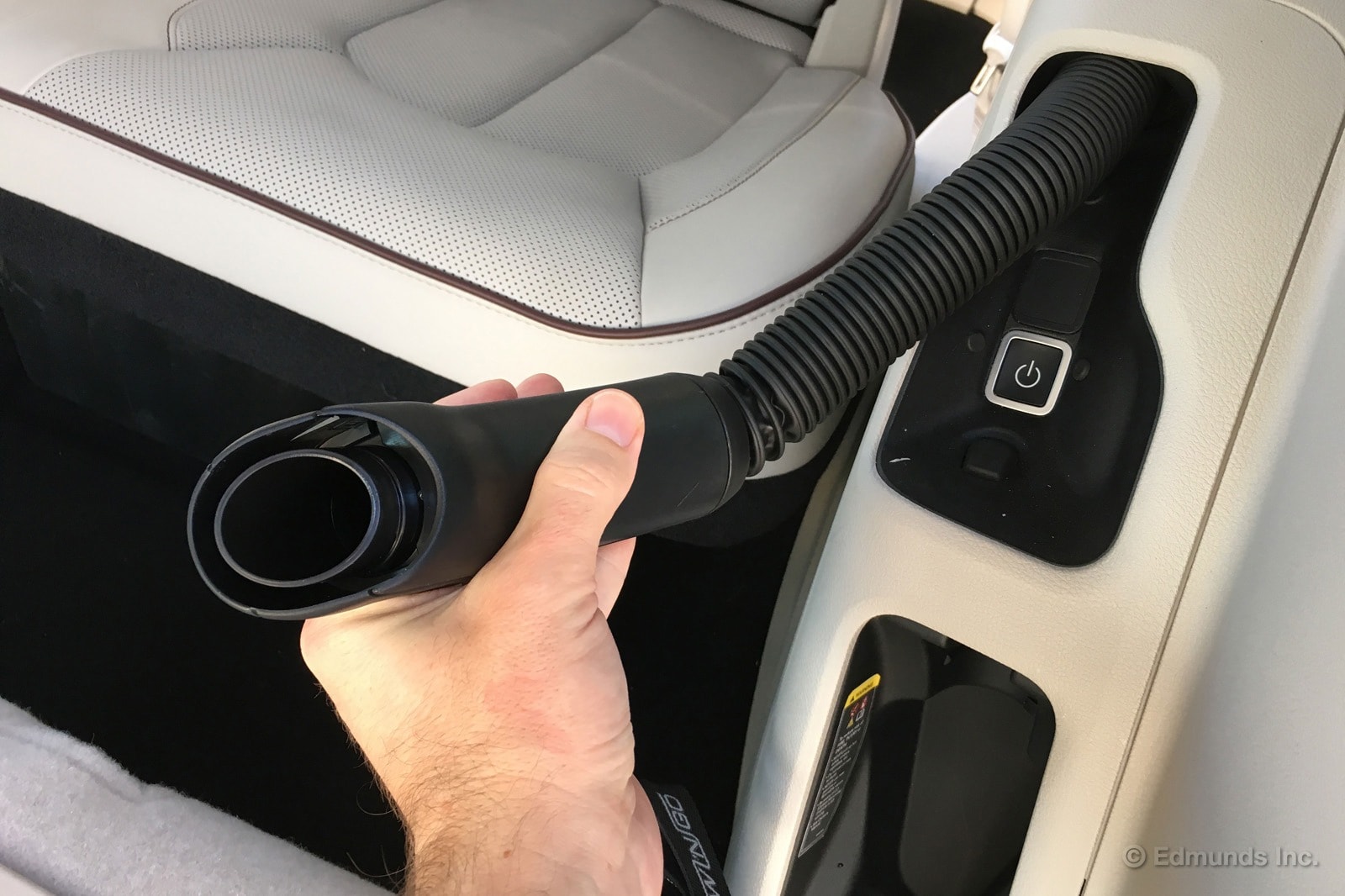
Comfort
"The steering wheel in our Pacifica has an unusually thick rim, and the prominent plastic housings for the fingertip tuning and volume controls — located on the rear of the horizontal spokes — make it even more of a handful. Not ideal for a 9-and-3 grip."— Josh Sadlier

Monthly Update for January 2017
Where Did We Drive It?
A ski trip over the holidays and a month's worth of commuting duties put our long-term 2017 Chrysler Pacifica over the 10,000-mile mark this month. The Pacifica has been in our fleet for about six months now and we've had the chance to take it near and far, with lots of positive feedback about its versatility and initial quality. This far into the test, though, we are still falling short of the EPA's highway fuel economy estimates and the Pacifica has developed a few squeaks and rattles.
What Kind of Fuel Economy Did It Get?
Despite a 700-mile road trip that included significant time on the highway, our Pacifica returned only 17.2 mpg during the month of January. This brought its lifetime fuel economy rating down from 19 mpg to 18.8 mpg. It's going to take some light-footed driving to get this van anywhere near the EPA's combined rating of 22 mpg by the end of the test.
Average lifetime mpg: 18.8 mpg
EPA mpg rating: 22 mpg combined (18 city/28 highway)
Best fill mpg: 25.0 mpg
Best range: 426.6 miles
Current odometer: 11,015 miles
Maintenance and Upkeep
None.
Logbook Highlights
Sometimes we toss the keys to Edmunds colleagues outside of our department to get their perspectives. This month's comments are from a colleague with a growing family who gave the Pacifica an extended test drive.
Technology-Audio
"One favorite part of the car was the quality of the infotainment system. Specifically, the color screen was vibrant and bright, and the fonts were crisp and clean. The only confusing thing is that when you put the system into navigation mode, the maps have a definite change in look and feel, and the crisp and vibrant color is no longer there. Also, the multiple USB charging ports, especially the ones located behind the driver and front passenger seats, were invaluable on a five-hour drive."
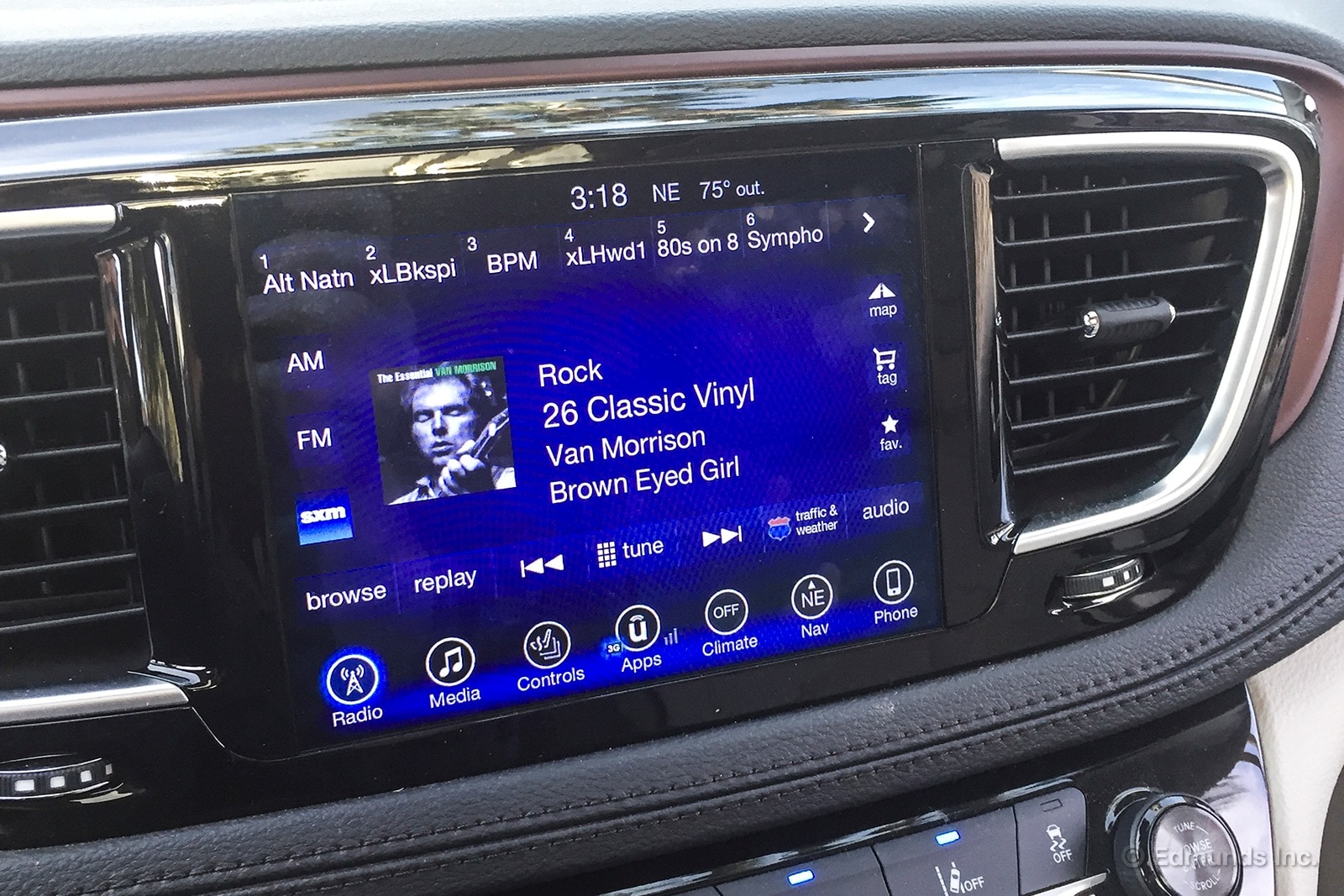
Cargo Space
"In regards to the Stow 'n Go seats, I initially thought that this was gimmicky unless I needed to haul a full sheet of plywood (which meant never). Wow, was I wrong, because when I took my family to Mammoth, we had to pack four pairs of skis and a snowboard. Sure, I could have played Tetris and stuck everything in the back, but it was 10 times more convenient to simply stow away the second-row middle seat and comfortably lay down all the gear."

"The storage compartments that the Stow 'n Go seats would normally fold into were great. I ended up putting in my tire chains, a case of Snapple and several ski helmets. Warning: I did notice that these items were warm when I pulled them out, so if you have anything that could melt (e.g. chocolate), this is not a good place for that."
Comfort
"Speaking of the seats, the power-reclining third row was another big hit. It was interesting to see the kids literally fight to be in the third row since they loved the power-recline feature."

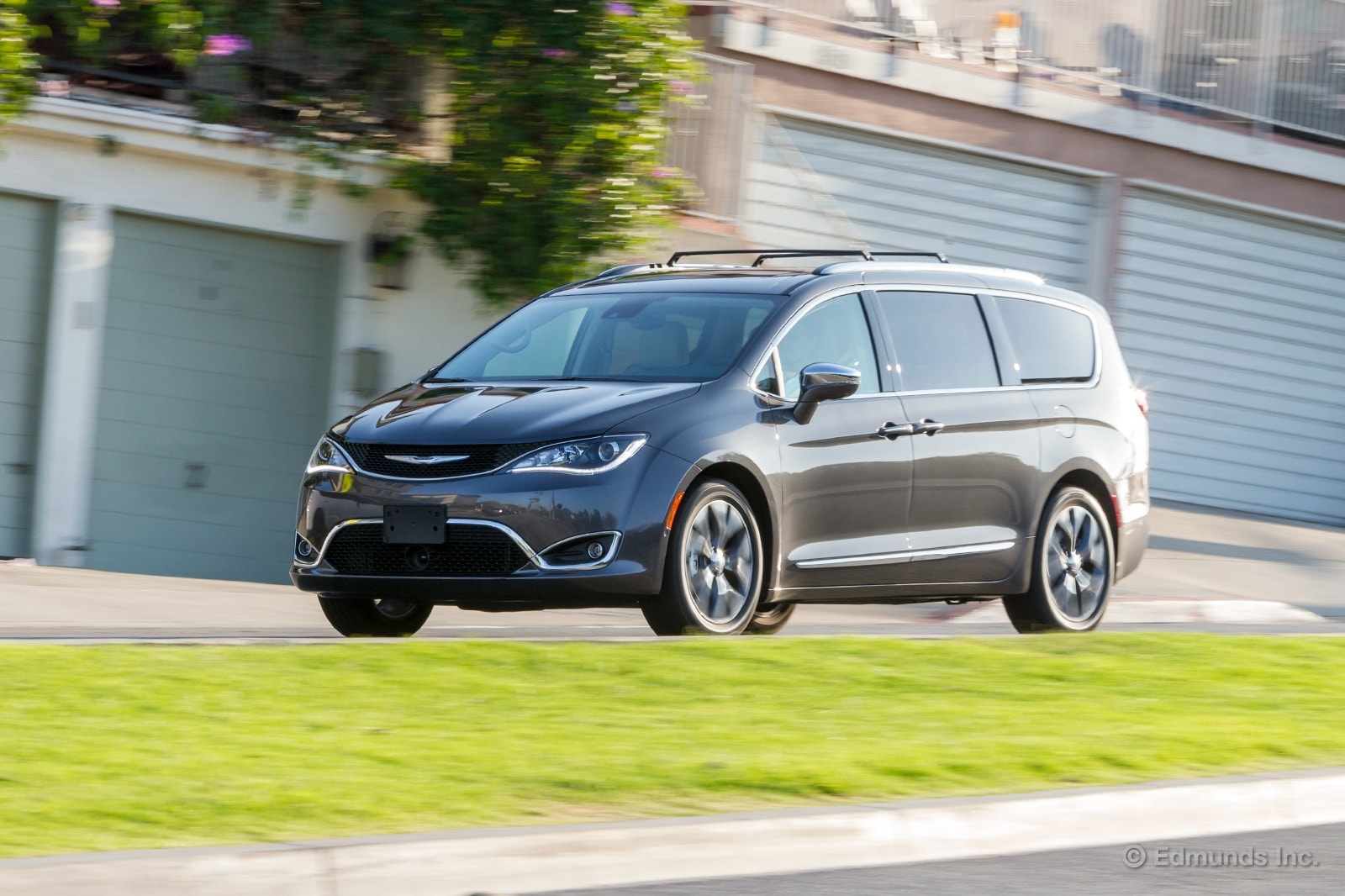
Where Did We Drive It?
Every now and then, we lend one of our long-term test vehicles to an Edmunds employee outside our department so we can take a look at it through a new set of eyes. Our 2017 Chrysler Pacifica has been in our fleet for a little while now, and we found the perfect person to take it for an extended test drive.
Our director of product management, Alison Anziska, loves her 2014 Honda Odyssey. It's always going to be tough to sway an owner of what many consider the king of the minivan hill. But we've been impressed with the Pacifica so far, and we thought she might be, too, so we handed her the reins for three weeks.
What Kind of Fuel Economy Did It Get?
The Pacifica's February was mostly spent driving around town with kids in tow. Overall fuel economy continued on its downward trend, falling from 18.8 mpg to 18.3 mpg. We're about halfway through our long-term test, and it's apparent we'll have to send the Pacifica on a few road trips if we want our overall average to get anywhere close to the EPA's combined rating. We have yet to approach the highway number on any tank.
Average lifetime mpg: 18.3
EPA mpg rating: 22 combined (18 city/28 highway)
Best fill mpg: 25 mpg
Best range: 426.6 miles
Current odometer: 11,806 miles
Maintenance and Upkeep
"Our Pacifica was due for its first scheduled service, which included an oil change, tire rotation and multipoint inspection. I called Santa Monica Chrysler on February 6 but was told the next appointment it had was after the 14th. Maybe there's an influx of people treating their vehicles like Valentines? I had better luck with the Van Nuys dealership we purchased the Pacifica from. I made an appointment for the next morning at 8:30.
"After I arrived and met with my service tech, he alerted me to a few technical updates. On the list were a sliding-door module reflash/enhancement, a couple Rapid Response Transmittals (Chrysler-speak for high-priority TSBs) for the air-conditioning, and an RRT for missing vacuum warning labels. These things required a specialized technician, which meant the dealership would need the Pacifica all day versus the previously agreed-upon two hours. 'All day' subsequently turned into 'First thing tomorrow morning.' I headed back to the office in a dealer-provided rental car and returned the next morning to retrieve our freshly serviced Pacifica. Total cost for the experience was $122.82." — Michael Massey, Vehicle Testing Assistant
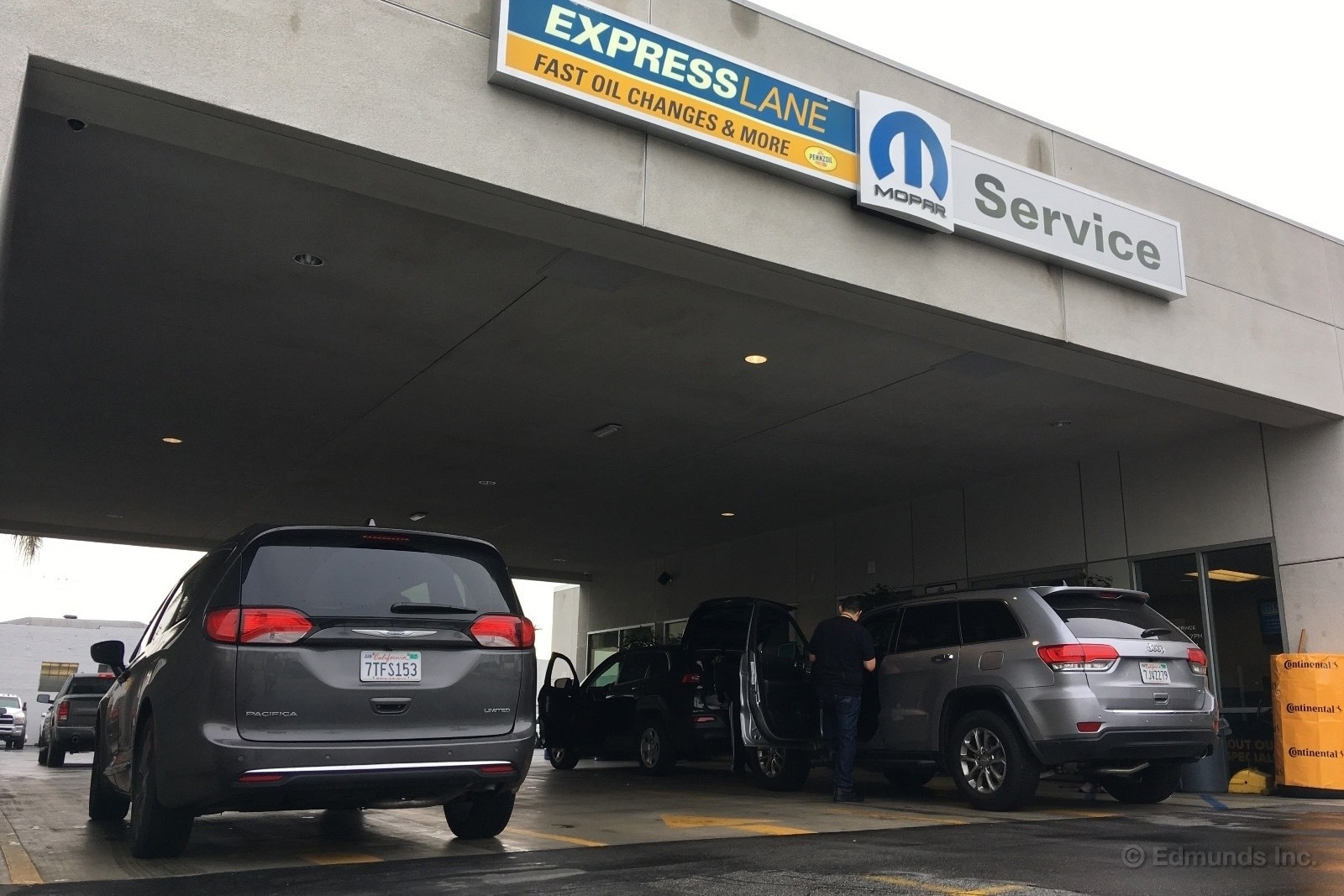
Logbook Highlights
Performance
"As an Odyssey driver, I did not expect to be particularly impressed with Chrysler's minivan offering. Years ago the Town & Country felt uninspired and basic compared to the luxurious Odyssey. Things are quite different today. The Pacifica has wowed me with its intelligent finish, useful rear and top-down cameras, easy-to-use dashboard control system, and sleek look and feel. I've come to expect the bulkier ride of the Odyssey and assumed that's minivan life, but the Pacifica manages to feel zippy and sporty, with great pickup, easy handling and a smaller, sleeker profile. It drives like a sedan." — Alison Anziska, Director of Product Management
Interior
"The round transmission selector dial is the one interior design element that wasn't immediately user-friendly. I often mistook it for the volume knob, and turning it to Park didn't feel like a natural behavior. I got used to it over time." — Alison Anziska
Miscellaneous
"The Pacifica feels narrower than it is and is easy to park, especially with the park-assist capability. The inside design is clean and comfortable, while backseat passengers have lots of nice features to make them feel like they're part of the action." — Alison Anziska
"Overall, I'd highly recommend the Pacifica to any friend considering a new minivan. It doesn't have the longstanding name recognition of the Odyssey, but its newer sheet metal helps it stand out in the school carpool line." — Alison Anziska
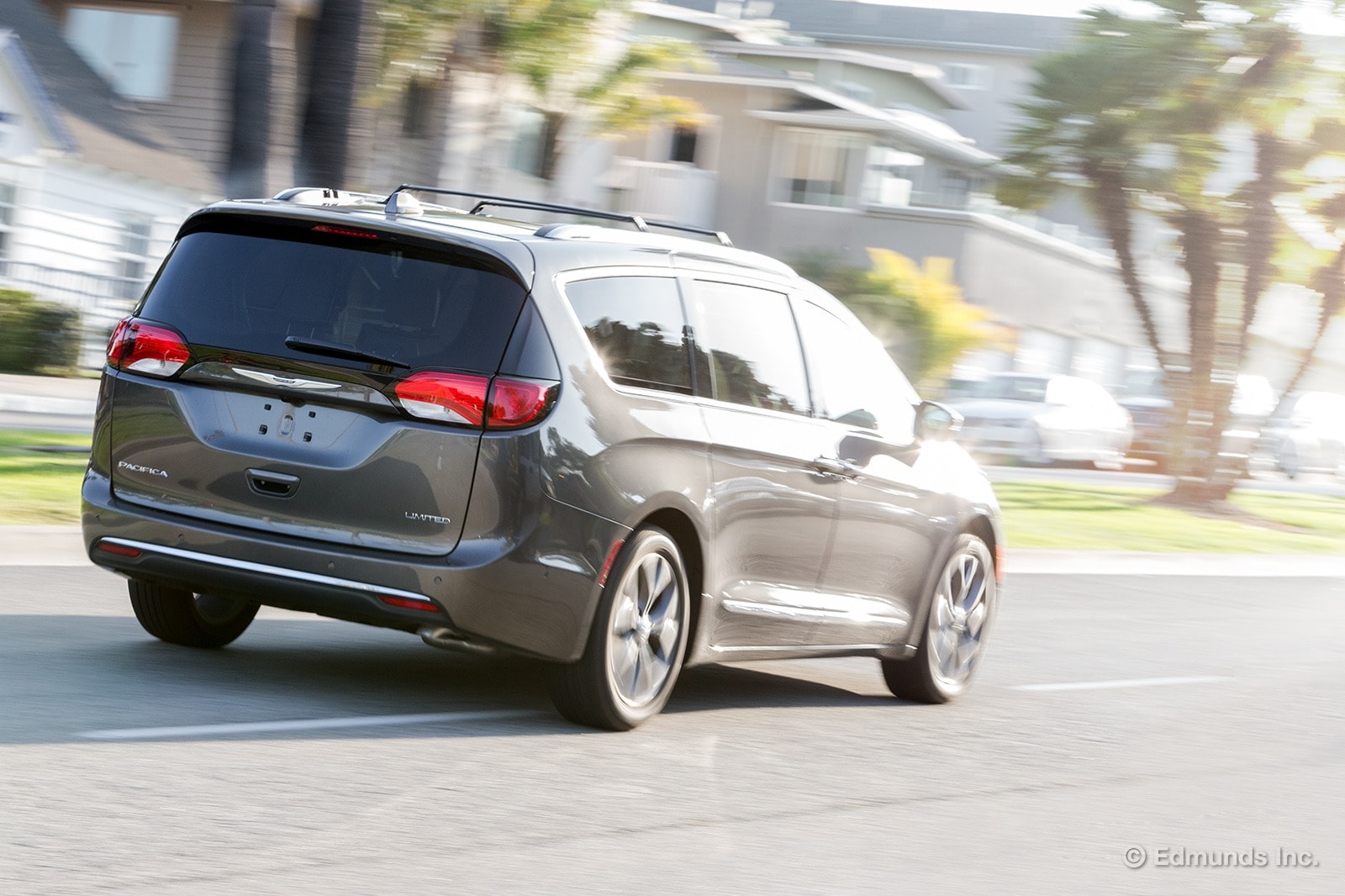
Monthly Update for March 2017
Where Did We Drive It?
It was a light mileage month for our 2017 Chrysler Pacifica. We added 1,181 miles to the odometer, short of our usual average (we aim for 1,600-1,700 a month), mostly on longer commutes to and from the office. This gave us a heightened sense of the Pacifica's livability, and that feeling only improves the more we spend time in the van. Whether it's the second-row USB charging ports, reclining third-row seats or rear headrests that the driver can fold down at the press of a button, the Pacifica makes a convincing case as a homegrown alternative to the Asian vans that dominate the segment.
Of note, we achieved the best fuel economy of our test so far in March, averaging 26.2 mpg on one tank in mixed driving. That kind of performance nudged our lifetime fuel economy up to 18.5 mpg, which still seems woefully underachieving. We want a modern minivan than can clear 20 mpg all day, not one that hovers around the fuel economy of a full-size truck. This makes us all the more curious to see what the forthcoming Pacifica Hybrid brings to the table.
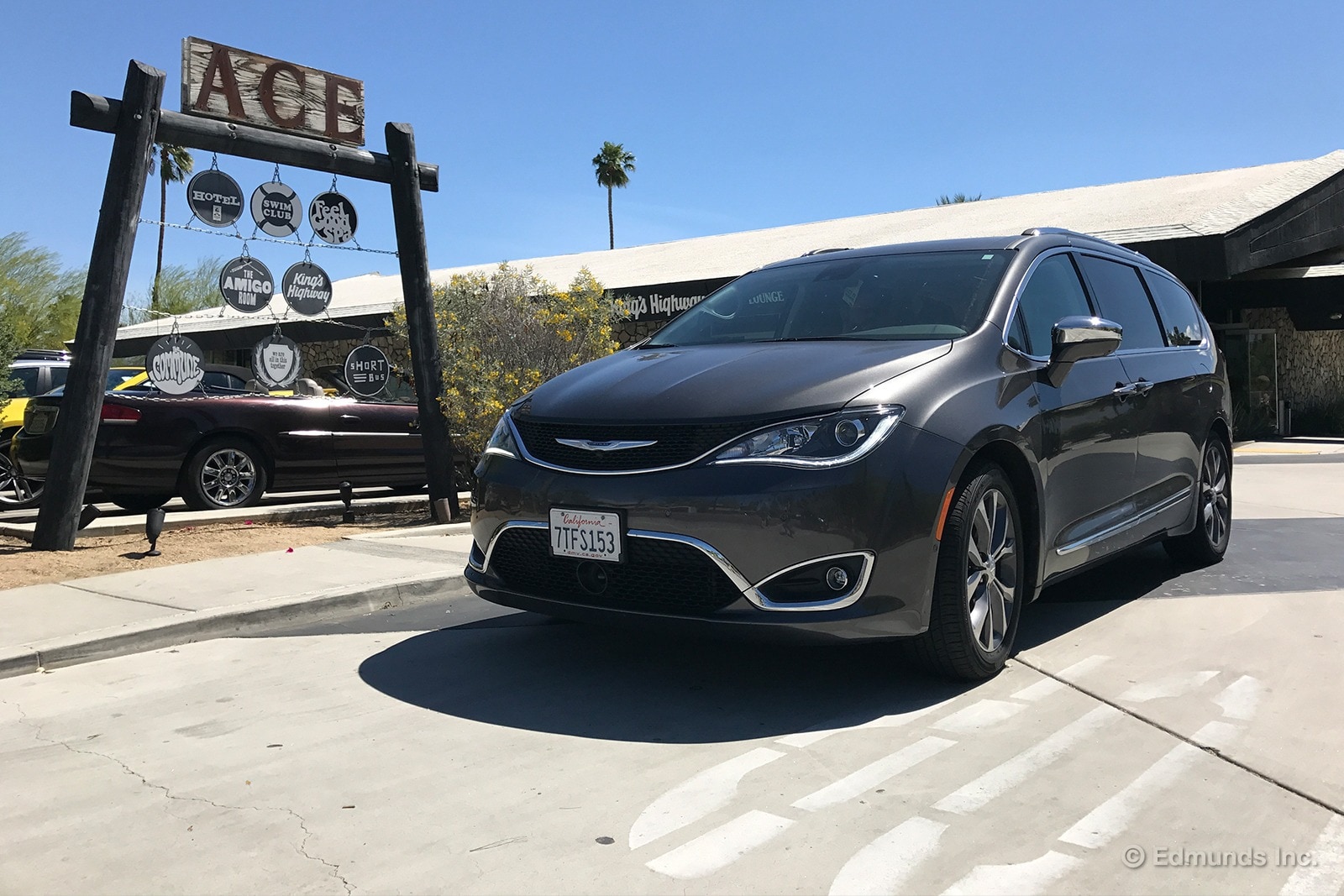
What Kind of Fuel Economy Did It Get?
We added 1,181 miles to the Pacifica's odometer (trying to average 1,600-1,700 per month), using 57.3 gallons of 87-octane fuel over four fill-ups to do it. That worked out to a tidy average of 20.7 mpg, which boosted the lifetime average of our test by 0.2 mpg.
Average lifetime mpg: 18.5
EPA mpg rating: 22 combined (18 city/28 highway)
Best fill mpg: 26.2
Best range: 426.6 miles
Current odometer: 13,167 miles
Maintenance and Upkeep
None.
Logbook Highlights
Miscellaneous
"When using adaptive cruise control to crawl along in rush-hour traffic, the brakes produce a grinding noise, like you've worn the linings down to the bare metal. The system functions fine, but it sounds unhealthy." — Jonathan Elfalan, Senior Road Test Editor (**this issue is also mentioned in at least one owners' forum)
Comfort
"I can't get comfortable in the front seat. It's certainly not the worst, but the backrest is built in a way that made it hard for me to find a balance between too upright and too reclined. My upper back was starting to ache a little by the end of my 1.5-hour commute, and I can't think of a worse feature in a minivan than giving Dad a backache a few hours into the family road trip to the Grand Canyon." — Will Kaufman, Automotive Editor
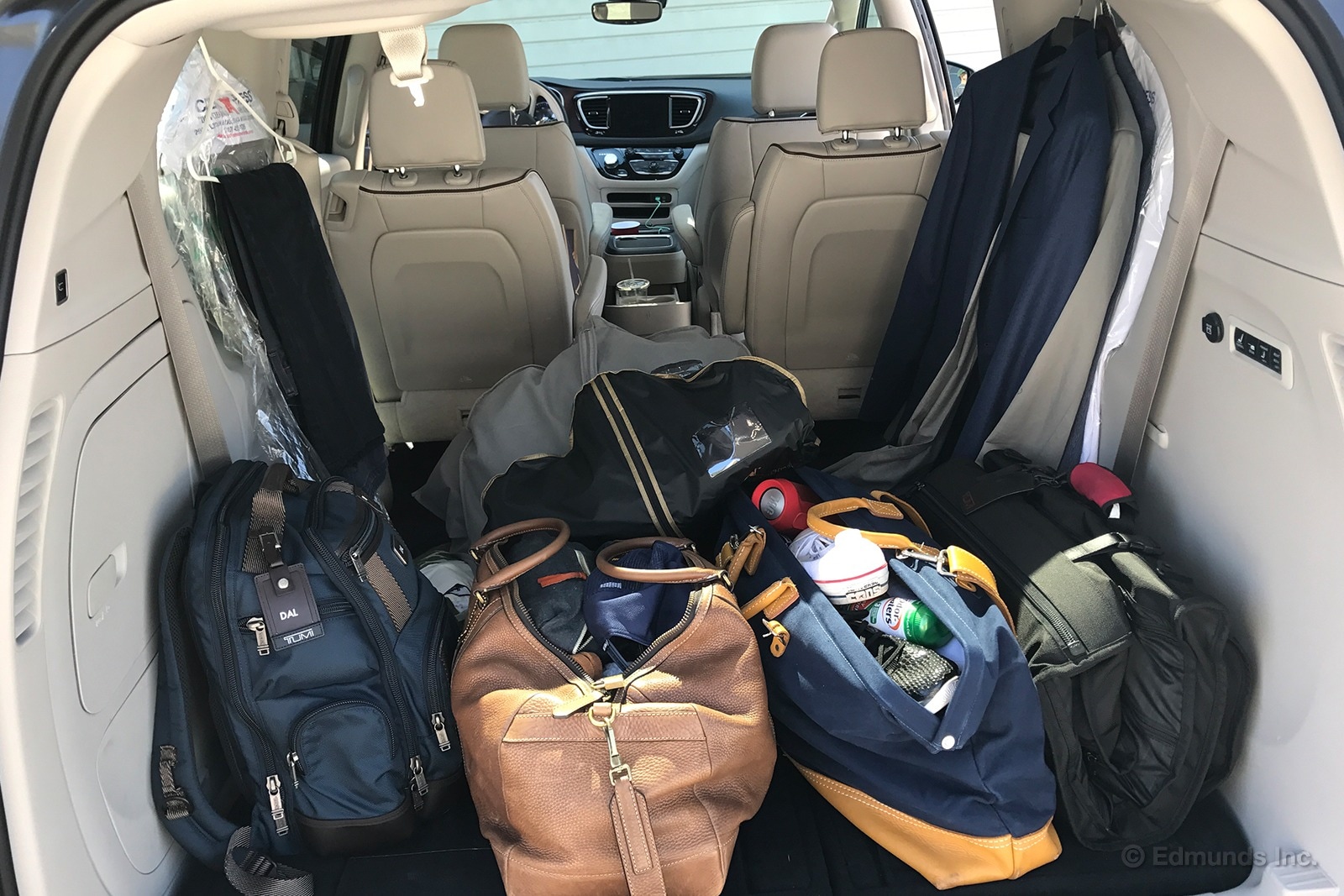
Interior
"I like that they ran a seam along the fake leather padding under the head unit. When I go to use the touchscreen, I automatically place my fingers on the seam to stabilize my pointer finger. The 'leather' trim itself feels very plasticky, but the seam is a nice texture." — Will Kaufman
Performance
"From the driver's seat, the sound this engine makes over 5K rpm is addictive. It also goes pretty well. I'm also impressed that the transmission will hold revs for a moment if you've been giving it the beans — no Sport mode needed." — Will Kaufman
"Agreed, engine sounds great when you lay into it. Has a nice growl with more teeth than vans from Honda, Toyota or Kia." — Dan Frio, Automotive Editor
"I appreciate how well the automatic cruise control handles stop-and-go traffic. Not all ACC systems accelerate from a full stop, but the Pacifica's will. It doesn't inspire a lot of confidence when someone changes into your lane, however. It only recognizes the merging car when it's square in front of you and will continue accelerating until the car is full in your lane, then brake hard. There were definitely a few moments I felt I had to step in or risk a collision." — Will Kaufman
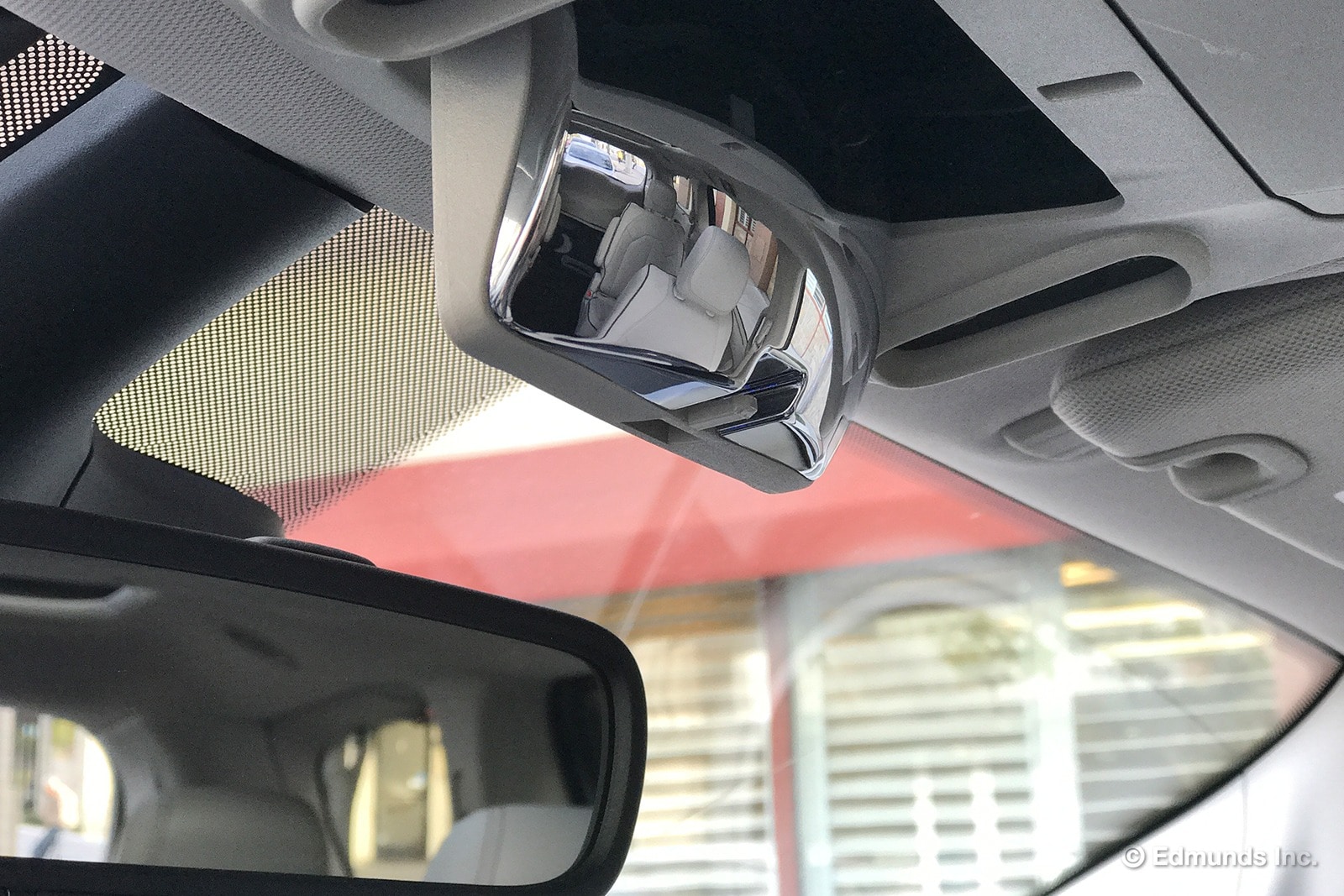
Technology-Audio
"I second other editors' thoughts that the shift dial is placed too close to the volume dial, and I prefer turning a dial instead of pressing a steering wheel button. Your hand naturally wants to turn the large shift dial. If I owned this van, I'd probably have to learn to use the steering wheel buttons." — Ron Montoya, Senior Consumer Advice Editor
"The nav map is laughably sluggish when trying to manually scroll around. Dragging doesn't really work at all, and tapping new positions is a lot of inputs. If I keep a finger on the screen, the reticle will keep moving toward my finger, but with a tremendous amount of lag. The map will keep scrolling for 10-15 seconds after I remove my finger." — Will Kaufman
"Couldn't play music from my iPhone via USB. I tried plugging it in different ports, but the Uconnect system never recognized it, nor my girlfriend's iPhone. Bluetooth audio worked great, but as many audiophiles know, you get better sound quality over a wired connection." — Ron Montoya
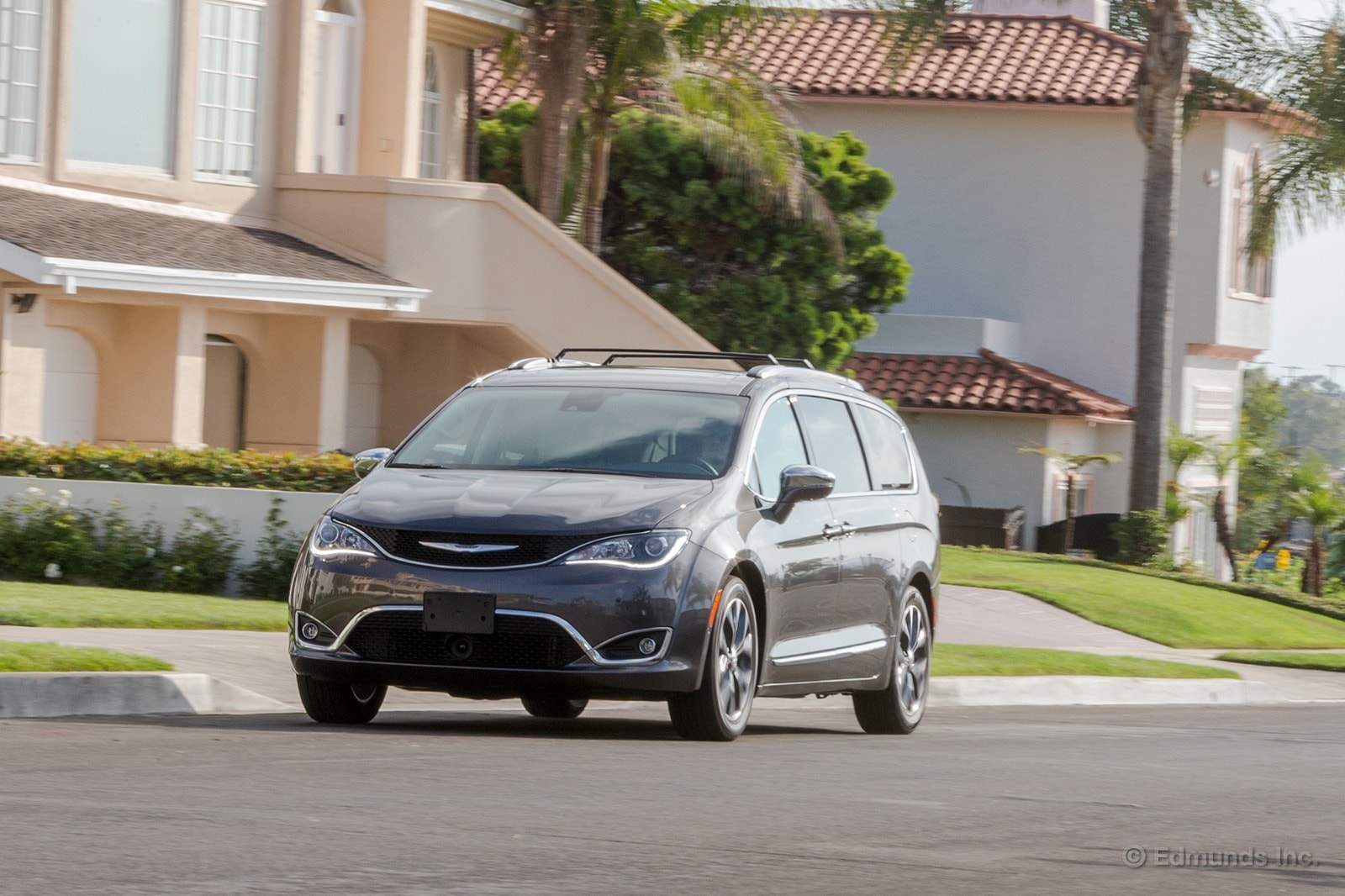
With adaptive cruise control that can slow to a halt and lane keeping assist, our 2017 Chrysler Pacifica has the basic ingredients for semi-autonomous driving. Slap a few more cameras and LIDAR sensors on there and you can even have your own Waymo. But as is, the Pacifica doesn't quite feel ready for semi-auto primetime.
The lane keeping system is pretty aggressive, for example. Drift to the edge to make room for a passing motorcycle or a road crew and you'll receive a forceful pulse from the steering wheel bumping you back to the center of the lane. It'll do the same if you casually drift over the line without signaling a lane change. It's as if you've got a strong fish at the end of the steering system.
We also noticed that the lane keeping system can be inconsistent. Several times it allowed me to pass over the lines, then it intervened late or not at all. It's also prone to some uncertainty and a resulting ping-pong effect. I'm sure the system's exaggerated adjustments made me look like a drunken driver on the road.
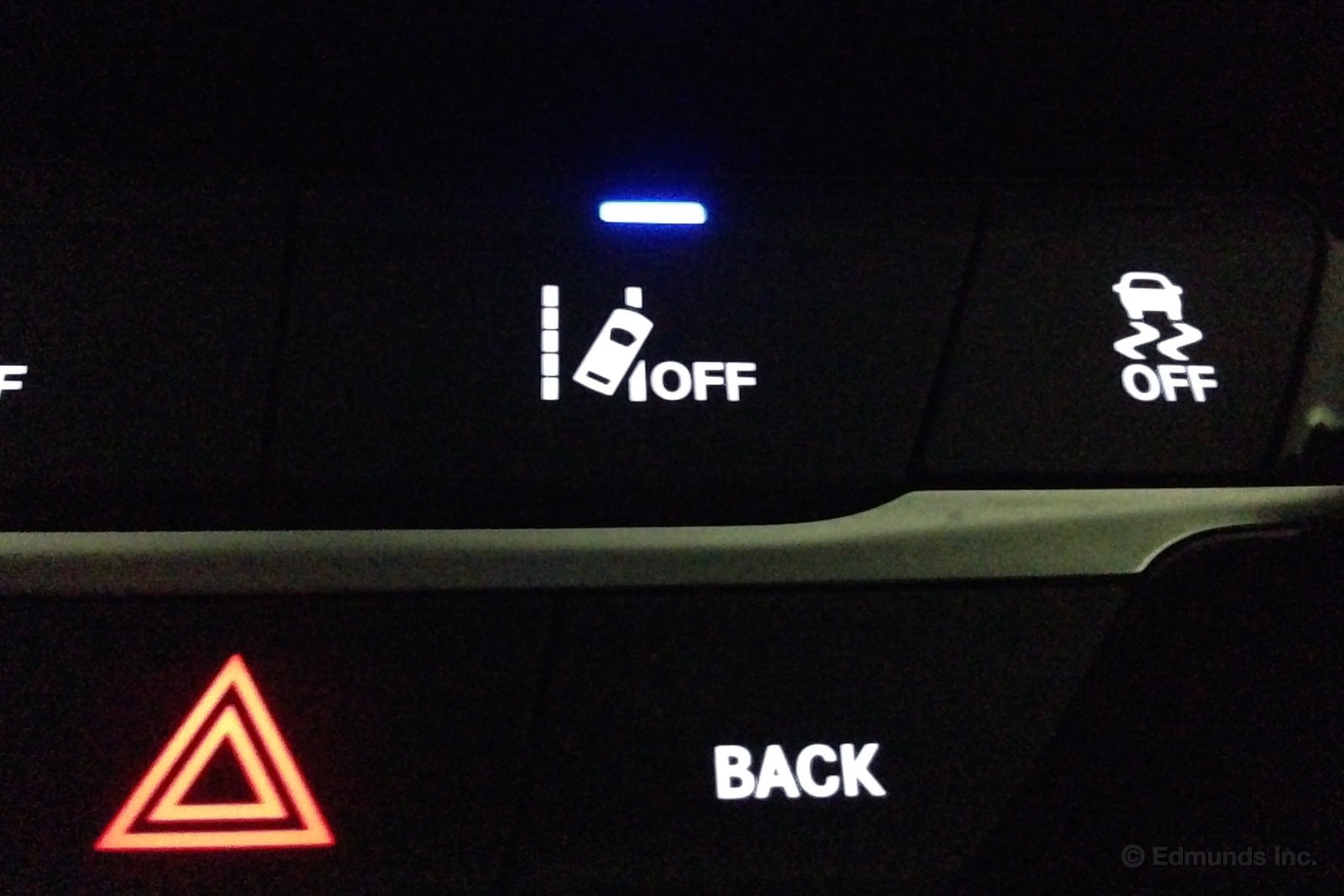
Adaptive cruise is a bit better. Most of the time it brakes with a measure of graceful deceleration. It maintains a good margin of error from the car in front while still following closely enough to discourage most courteous drivers from sneaking in. Key word: most. The inevitable traffic gnat will always find a way in front of you, and when he does, ACC is prone to panic and forceful braking.
It also seems unable to discern when initiating a pass, even with the turn signal engaged and adding throttle and steering. It still sees the lead car, even when clear of half its bumper, as an obstacle. Then it panics and brakes hard, scrubbing speed and making you no friends as traffic approaches quickly from behind.
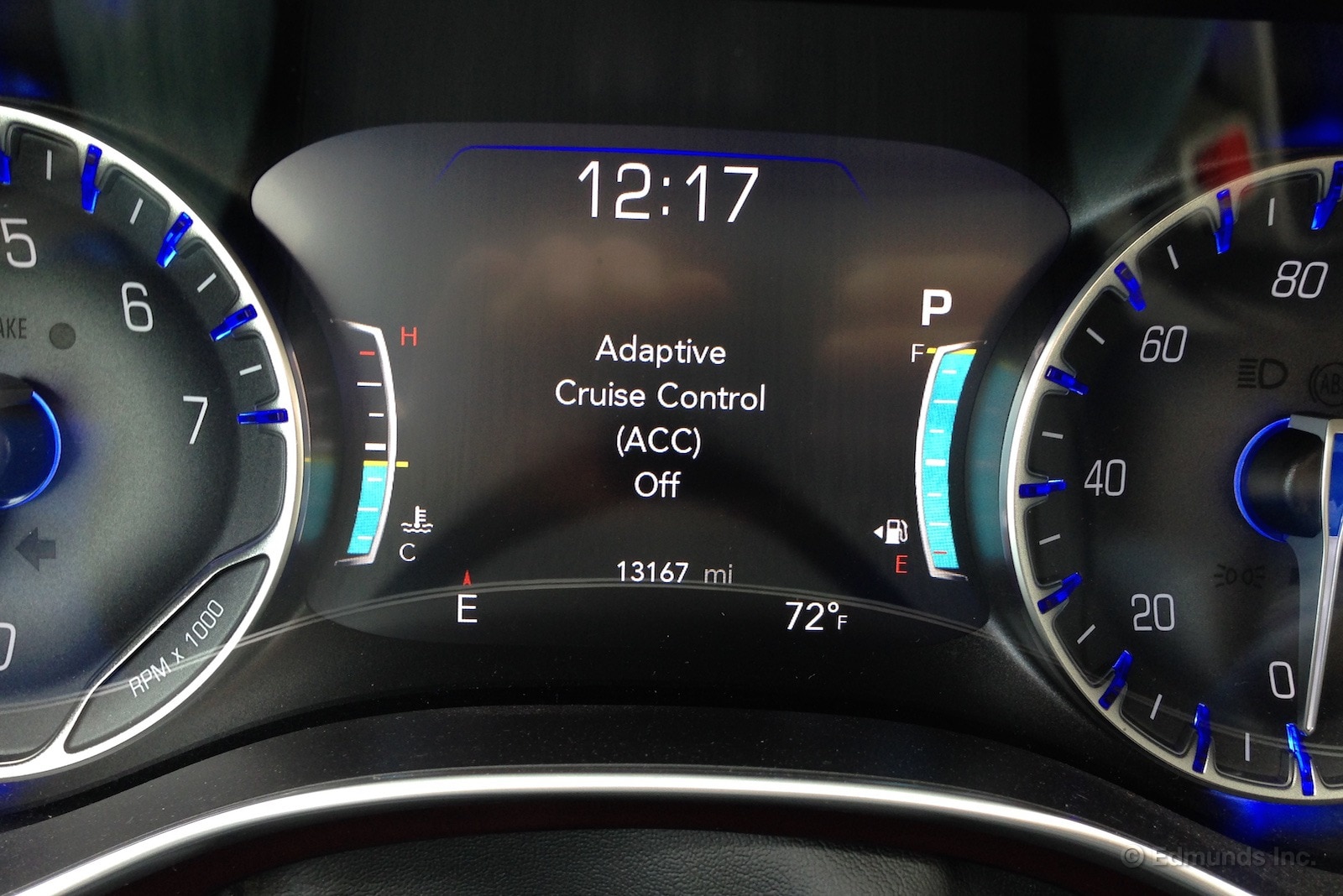
All that said, it's better the Pacifica has these tools than not. They're useful on a car of this size, especially a car driven by parents in varying states of inattention. I'm thinking of lane keeping assist as something more like "text protect assist." When Soccer Mom's eyes and thumb are busy coordinating pickup times, she's less likely to broadside you as the Pacifica can push her back into her lane (this of course just emboldens bad behavior, but that's for another day).
Chrysler hasn't made a big pitch for the Pacifica's semi-autonomy, but a spokesman did mention its potential during its debut at the Detroit Auto Show in 2016. I'd say it still needs time in the oven before making it a talking point. It's still very far behind benchmark semi-auto systems from Mercedes-Benz and Volvo, for example. But given how much family-stuck-in-traffic time a minivan is likely to see in its service life, I'd venture a semi-autonomous minivan is a promising and welcome development.
Monthly Update for April 2017
Where Did We Drive It?
This month our 2017 Chrysler Pacifica handled the usual commuting, including some school carpool duties, but also two road trips. One was a drive to Palm Springs for a guys' weekend; the other was a family trip to Bryce Canyon and Zion national parks in Utah. These journeys put the van's interior space and general ease of use in the spotlight, which is as it should be: Hauling families and their belongings from A to B is sort of the minivan's "raisin detra," as the French say.
As a special treat Mike Schmidt, Edmunds vehicle testing senior manager, pampered the Pacifica with a hand wash. Make sure to look for his meditation on bathing the car below.
Also in April, Automotive Editor Dan Frio took time to post a more in-depth look at how the Pacifica's semi-autonomous features, such as adaptive cruise control, work in the real world. Spoiler alert: They're not the best, but they're better than nothing.
All in all, our Chrysler won some friends this month, even if we do see room for improvement.
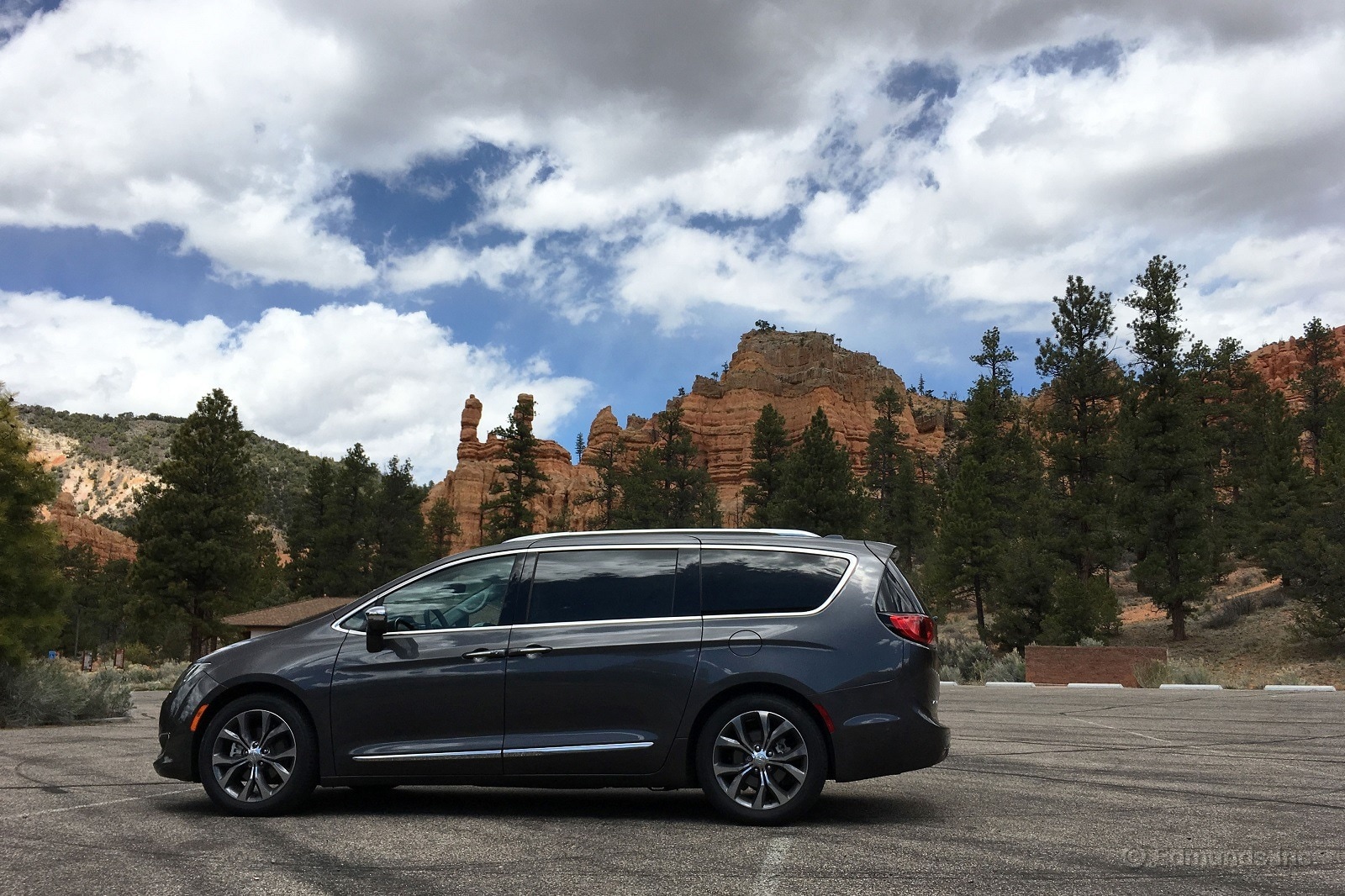
What Kind of Fuel Economy Did It Get?
We put almost 1,500 miles on the Pacifica in April. The long highway drives were good for economy, with every fill this month averaging better than 20 mpg — a first since we bought the Pacifica. In fact, for April the Pacifica averaged 23.6 mpg, which is better than the EPA combined estimate of 22 mpg.
This exceptional showing only bumped our lifetime average up by 0.5, to 19 mpg. That's still well short of the EPA estimates.
Average lifetime mpg: 19
EPA mpg rating: 22 combined (18 city/28 highway)
Best fill mpg: 26.2
Best range: 430.6 miles
Current odometer: 14,660 miles
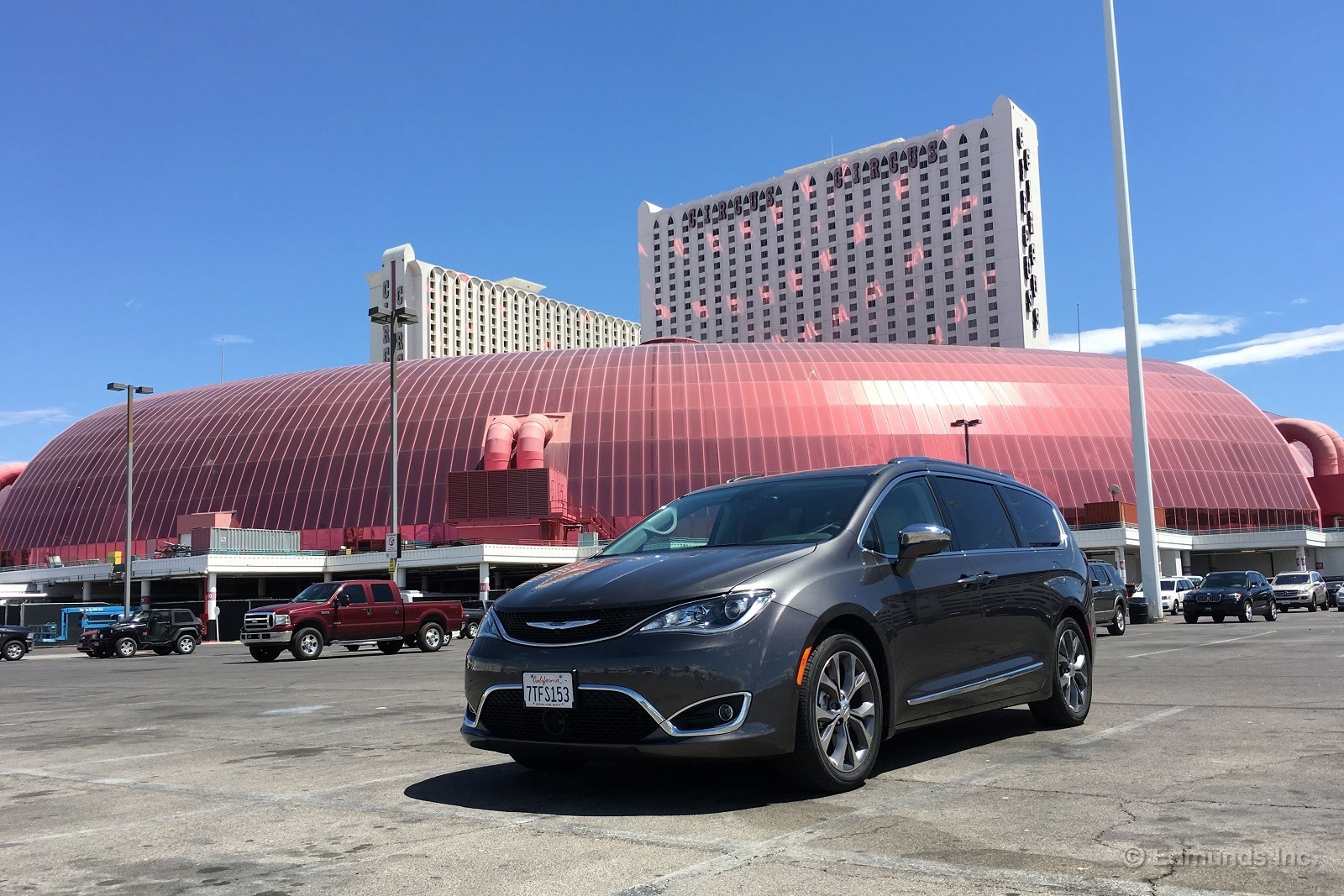
Maintenance and Upkeep
None.
Logbook Highlights
Comfort
"Maybe the seat is breaking in. I did not notice the long-distance seat discomfort on this road trip that I noticed on my last long drive with this van. That was a seven-hour drive to Yosemite National Park. I drove it 1,100 miles over the past week, with my longest leg at five hours." — Mike Schmidt, senior manager, vehicle testing
Interior
"My buddies, both over 6 feet tall, had no issues with the amount of space offered." — David Landsness, head of video
"I love the panoramic sunroof for enjoying the sights of these parks. It was great for our last vacation to Yosemite, and it was stellar for the drives through both Bryce and Zion. I can't say that I'd ever recommend a sunroof prior to these road trips." — Mike Schmidt

Technology-Audio
"Road tripping is always fun in a minivan and the Pacifica is no exception. We enjoyed the Uconnect technology, which made it simple to sync our phones and take turns as the DJ. Sound quality was good, except when certain DJs would start multitasking and switch their focus to emails or texts. Noticeable interference could be heard through the sound system." — David Landsness
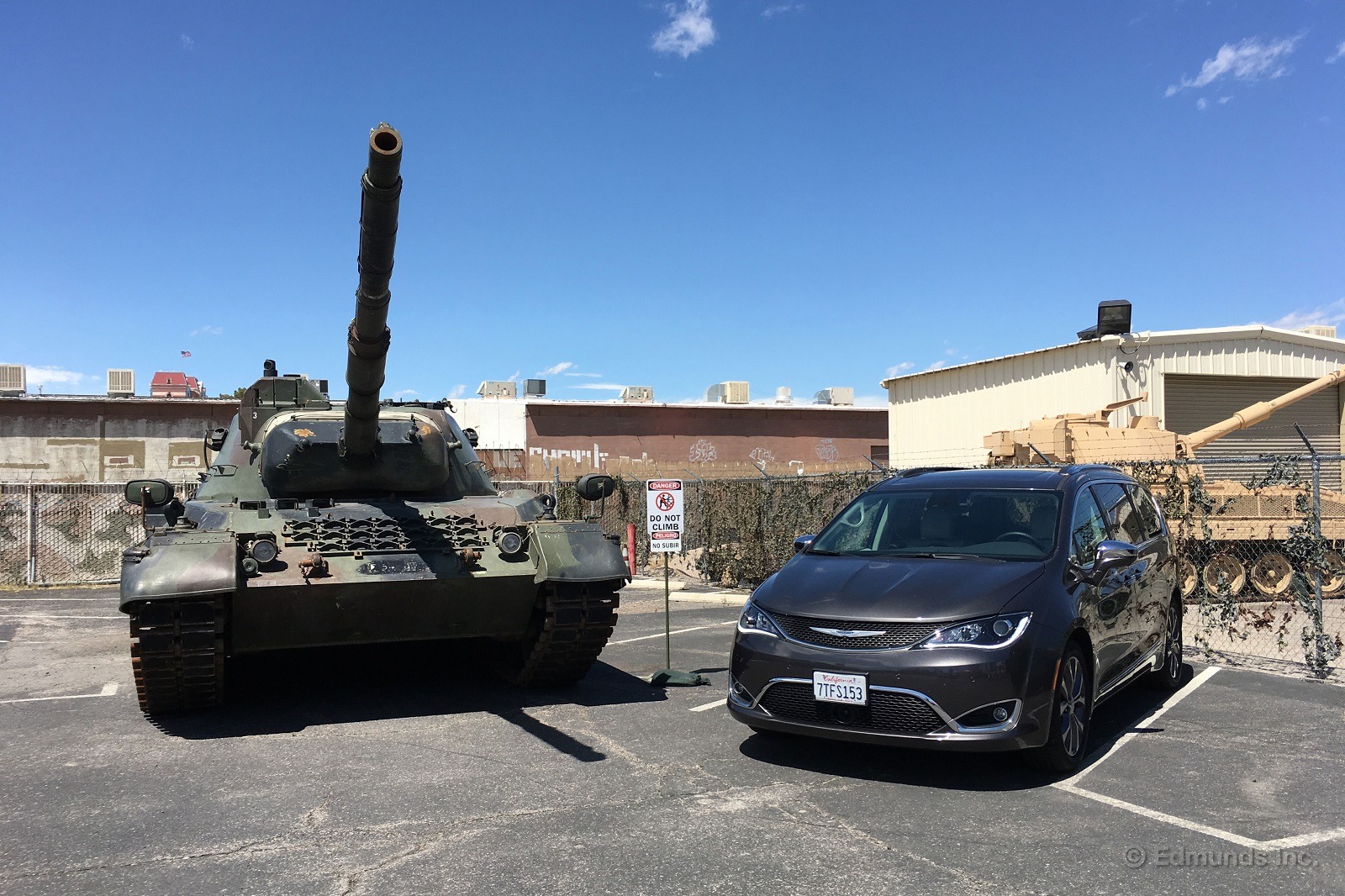
"It's funny to see what kids latch onto in cars these days. While picking up two of the grommets from school the other day, the 11-year-old neighbor boy hopped into the second row and proclaimed, 'Whoa, USB in the seat!' referring to the USB ports in the Pacifica's front seatbacks. Amusing. Maybe a little sad?
"Granted, it's a bit much to expect kids to get pumped on minivan design or whatever six-cylinder is under the hood. But, hey, the promise of uninterrupted power to your tablet is a powerful draw for a kid, I suppose." — Dan Frio, automotive editor
Cargo Space
"The power Stow 'n Go rear seats made it super easy to store luggage for a quick road trip from L.A. to Palm Springs with friends." — David Landsness
"When minivans excel: Your brother calls and says he's taking his new (used) boat out for a shakedown. Bring a ski and any other water toys and meet him in Long Beach in an hour. Stash the third row, toss it all in in under three minutes, and go.
"Sure, you could do this in a crossover, a Suburban, even a Golf SportWagen. But a minivan is so massive, the liftover height so agreeable, you don't even need to think. You just load. Which frees your mind to think of other things: Hope the water's not too cold. Did I grab sunscreen? When was the last time I did a deepwater start?" — Dan Frio
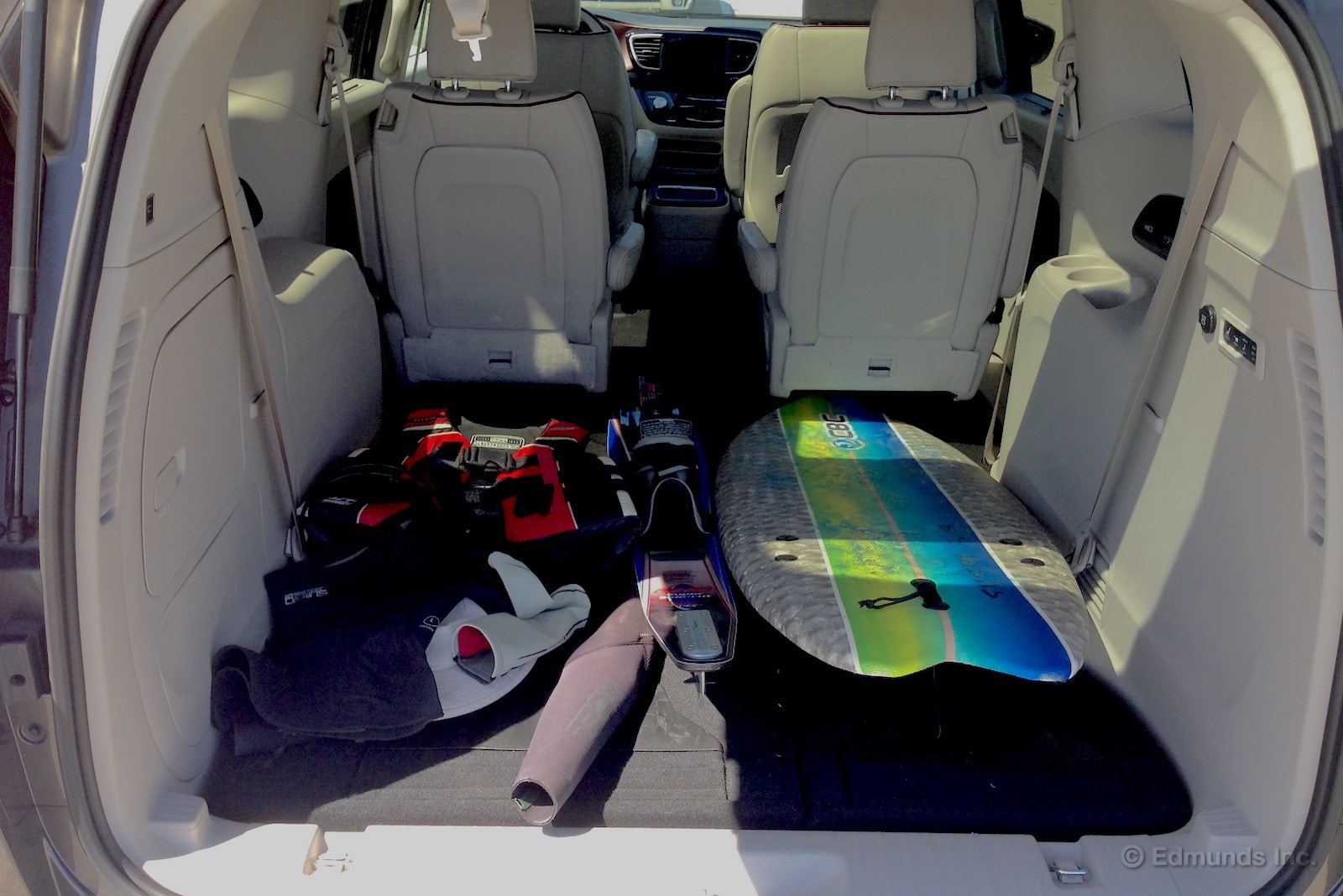
Miscellaneous
"I've also experienced the grinding brake sound during adaptive cruise mode that Jonathan Elfalan mentioned earlier. To me, it sounds a bit like a motor: a flappy, flatulent motor. An ABS motor maybe? Maybe the ACC brain is sending a message requesting excessive braking force? The effect behind the wheel feels less dramatic than the sound.
"Oddly, I also noticed the noise simply when lifting off the throttle with ACC enabled but not engaged." — Dan Frio
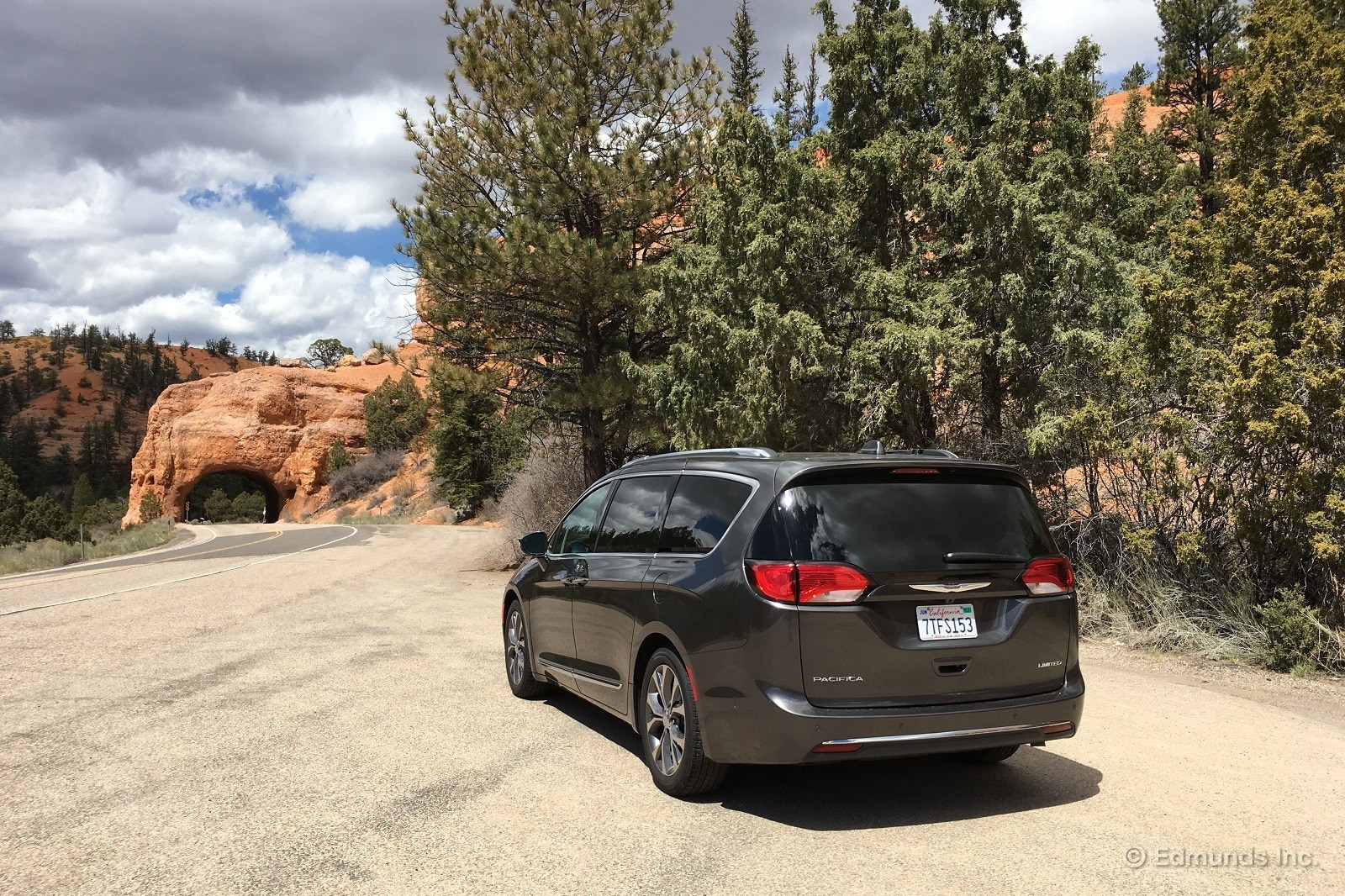
"It still amazes me how informative it can be to simply wash a car by hand in my driveway every once in a while. I just finished a deep-clean of our Pacifica and somewhere amidst the grime, we grew a little closer.
"I saw things that I just had not paid attention to before: like how that little tab helps hold the rubber front cupholder insert in place and keeps debris from getting past its edges. And how the vacuum extension hose doesn't quite fit in the bin it was designed for, without some finesse. Or just how easy Stow 'n Go makes vacuuming the carpet. Also the anguish of discovering new paint nicks on the quarter panel and edge of the door handle. Still more, how light the hood release lever is to pull, and even though the hood itself latches securely at the center, its edges wiggle.
"It is easy to get caught up in the flurry of life. But I learned a lot today by just slowing down and giving the car a bath." — Mike Schmidt
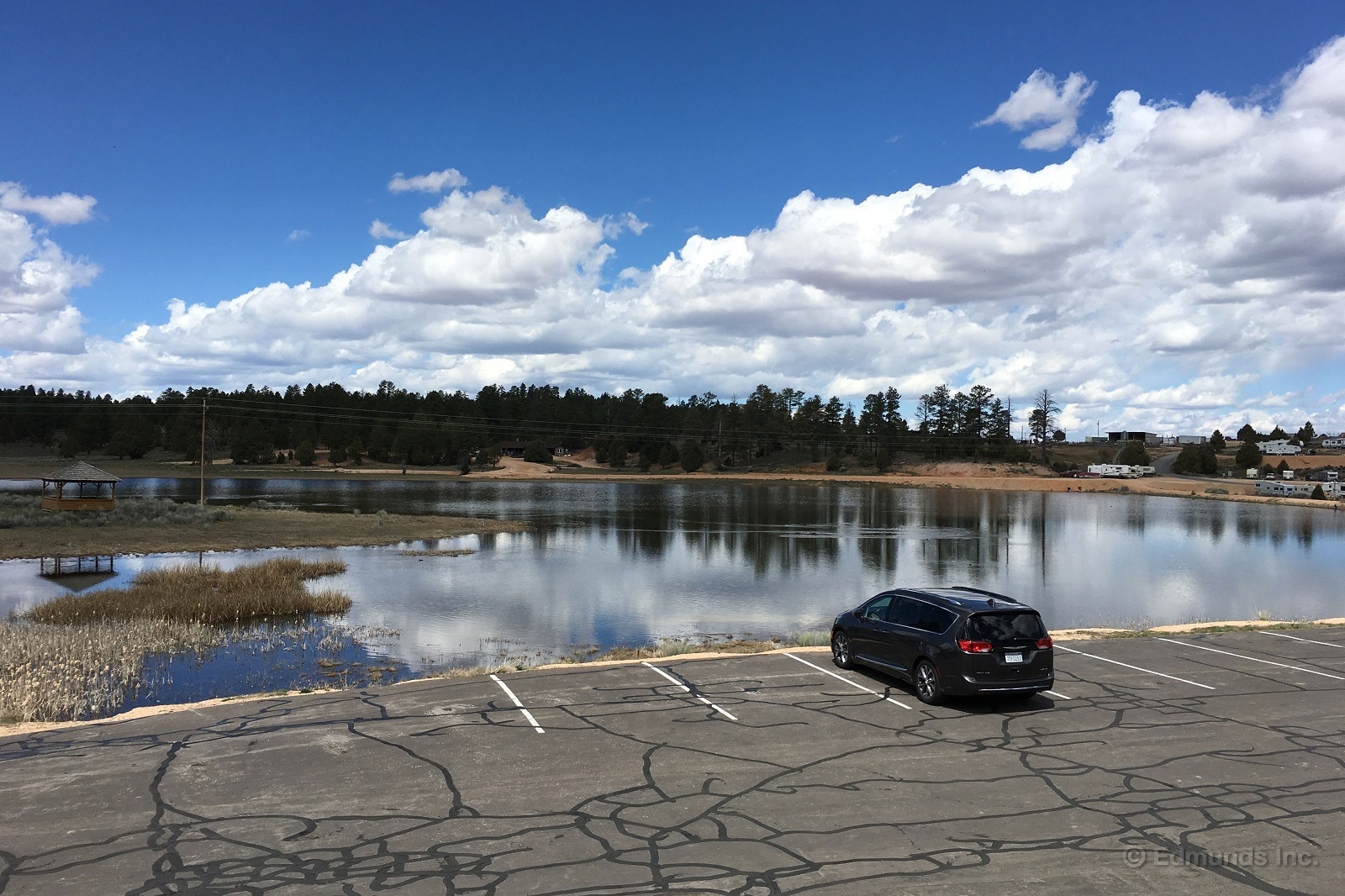
Monthly Update for May 2017
Where Did We Drive It?
For most of May, the Edmunds long-term 2017 Chrysler Pacifica spent its time in the wilds of Fresno, California, at the hands of Senior Automotive Editor Brent Romans. As one of the parents on staff, this pairing made perfect sense, and if you read his comments below, the Pacifica seemed to agree with him.
Click on through to see what kind of dad stuff Brent did in our dad van.
What Kind of Fuel Economy Did It Get?
We logged 1,245 miles in the month of May and poured 59.5 gallons of 87-octane fuel into the tank in the process. That pencils out to 20.9 mpg, which pushed our overall average up by 0.2 mpg. We're still well short of the EPA's combined estimate and have yet to meet the highway estimate, too. Our yearlong test is set to end in June and we're still some 4,000 miles short of our 20,000-mile target, so I get the feeling a long road trip is in order.
Average lifetime mpg: 19.2
EPA mpg rating: 22 combined (18 city/28 highway)
Best fill mpg: 26.2
Best range: 430.6 miles
Current odometer: 15,905 miles
Maintenance and Upkeep
None.
Logbook Highlights
Performance
"We've had our Pacifica in our long-term fleet for about nine months now. As Josh Sadlier noted in our December update, the nine-speed automatic transmission, though potentially suspect, works just fine. Maybe there are others on our staff who are more critical and just haven't voiced their complaint. But in my opinion the tranny upshifts smoothly in normal driving and downshifts when I need it to." — Brent Romans, senior automotive editor
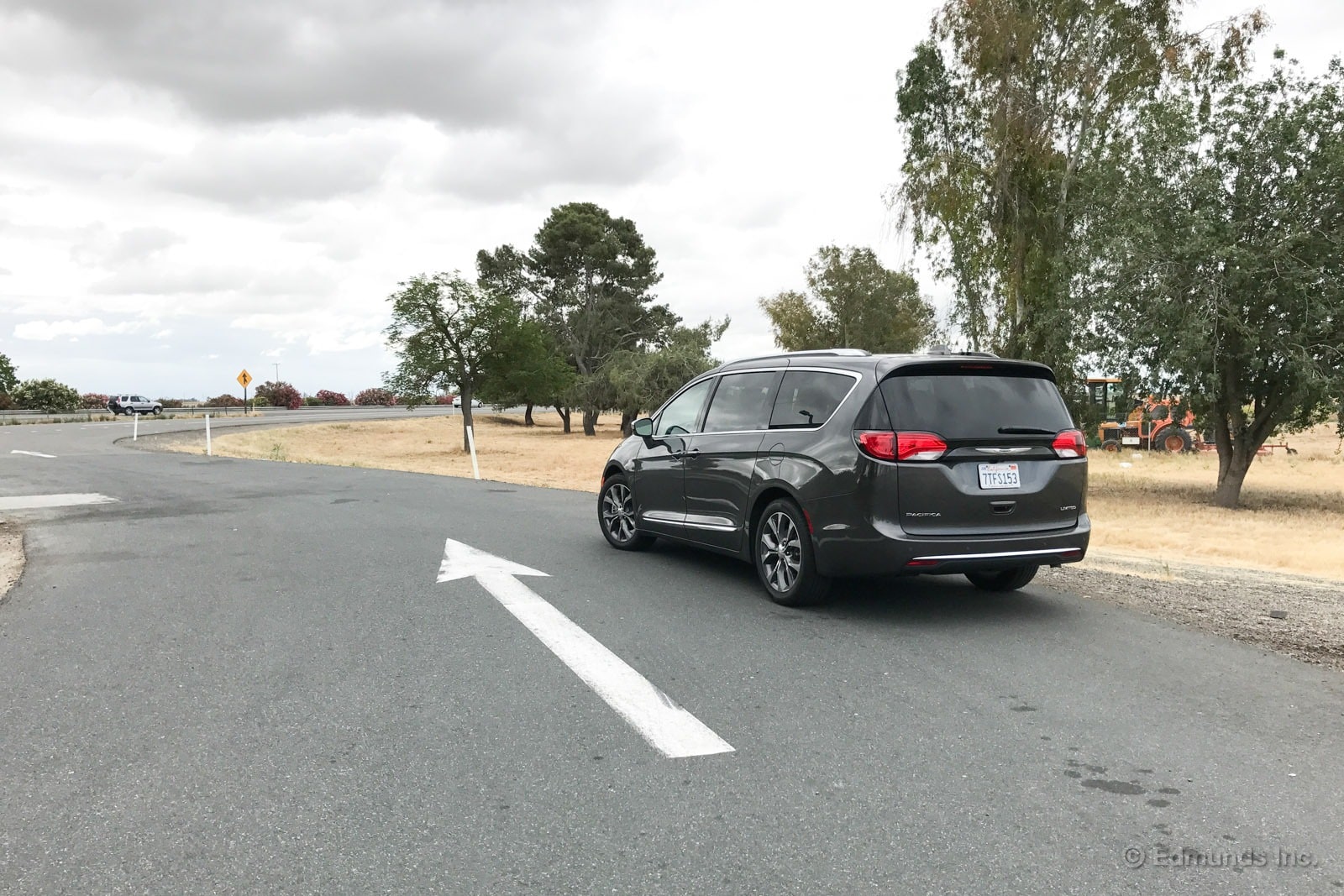
Interior
"My 20-year-old self would be greatly disappointed to hear this, but I enjoy driving our long-term Pacifica. Well, to clarify, it's more about how the Pacifica fits into my life than it is about the 'driving.' While I do appreciate the V6's power and the van's stable handling, the Pacifica's sliding rear doors, thoughtful interior storage areas, easily configurable seating and full boat of tech are what get 46-year-old Brent thinking, 'Yeah, this is cool.' My wife thinks minivans are lame, but I'd be fine driving a Pacifica every day." — Brent Romans
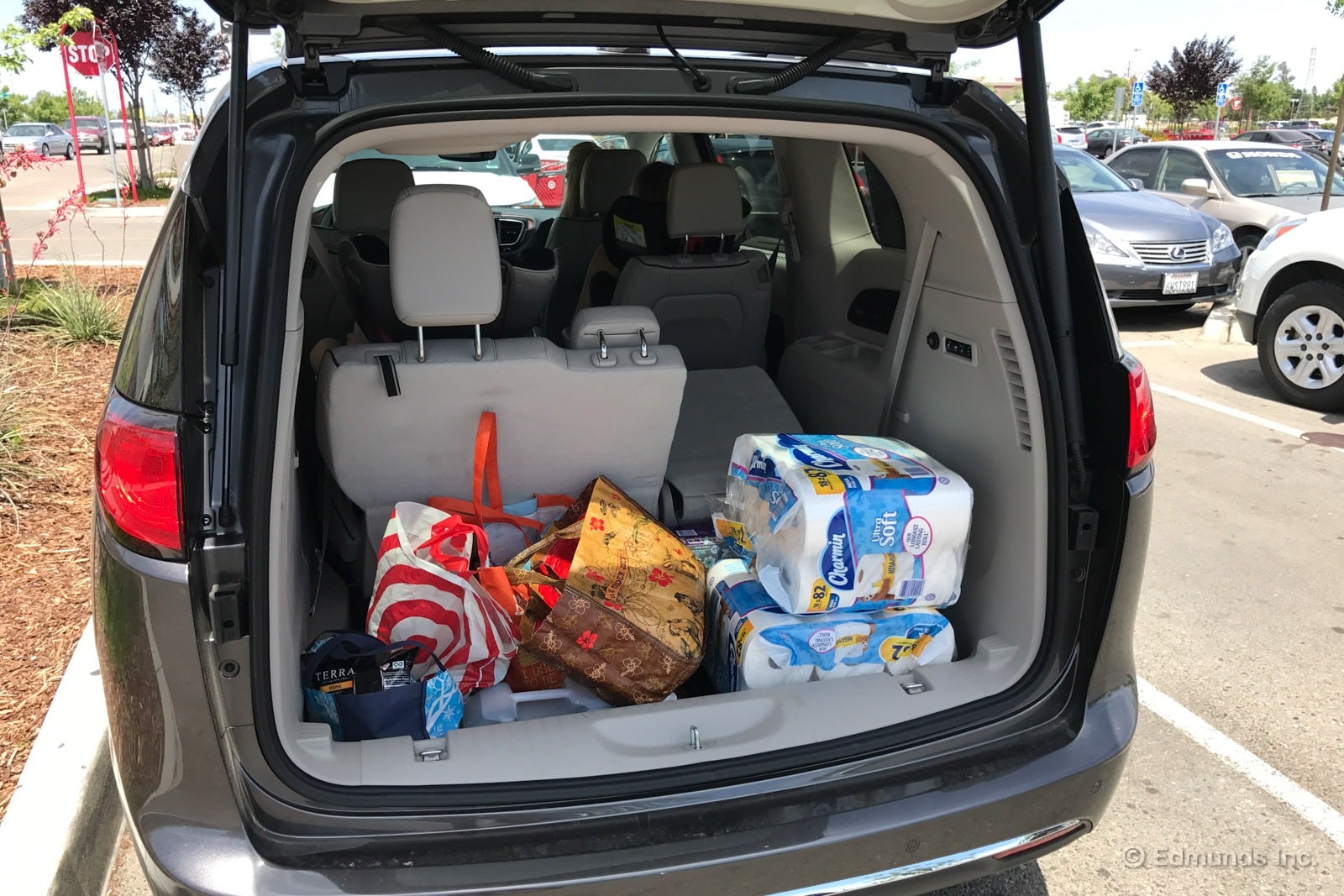
Technology-Audio
"There was a comment from Ron Montoya in an earlier update about the main USB port in our Pacifica. I've encountered the same issue. It doesn't connect or even charge my iPhone. I've also tested an Android device. Same problem." — Brent Romans
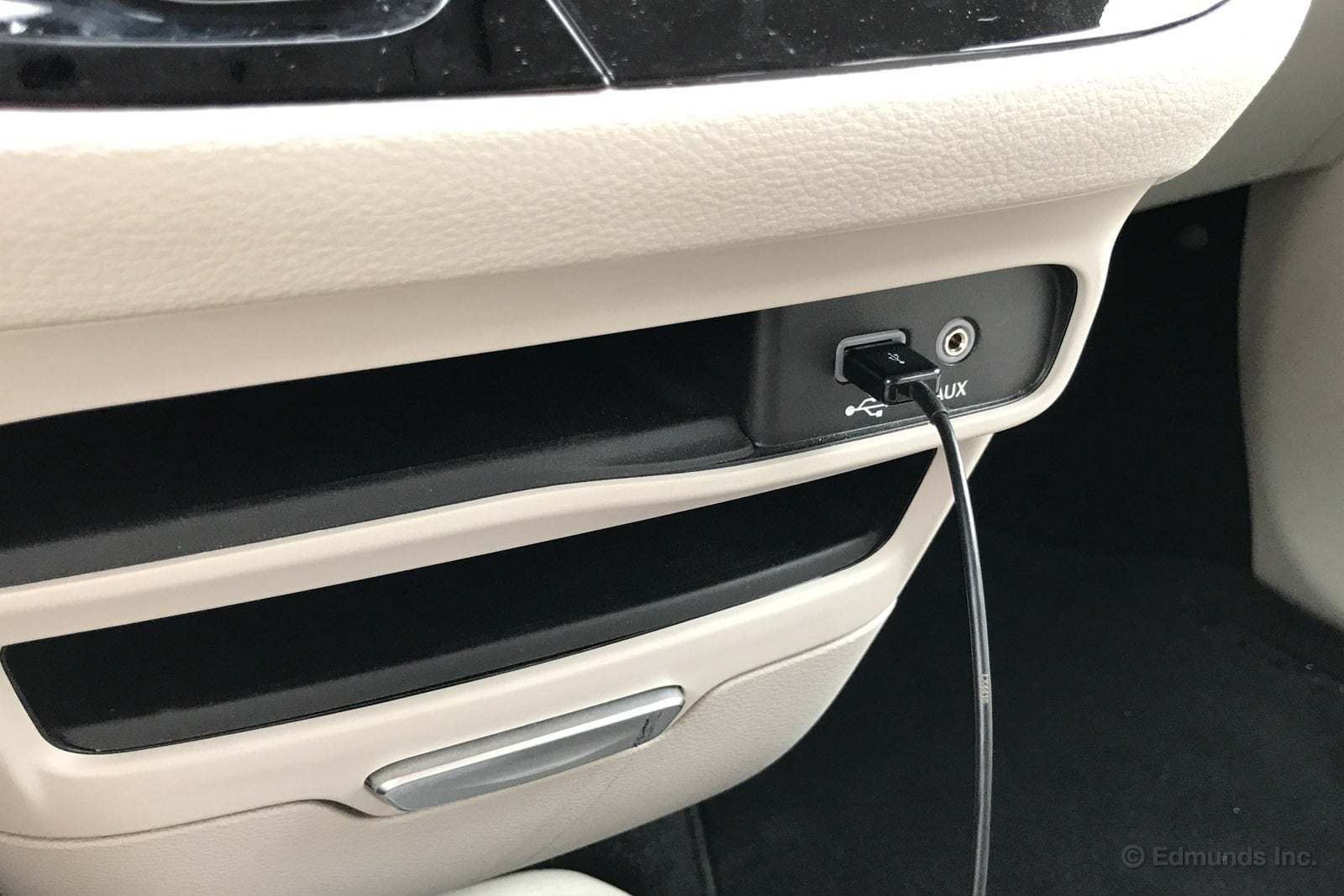
Miscellaneous
"Just a small observation: The Pacifica has a capless fuel filler. This feature is slowly making its way onto more cars, and it's nice to see it on our van. You just open the flap and insert the gas pump nozzle. It just works, and you no longer have to mess around with a cap. Win." — Brent Romans
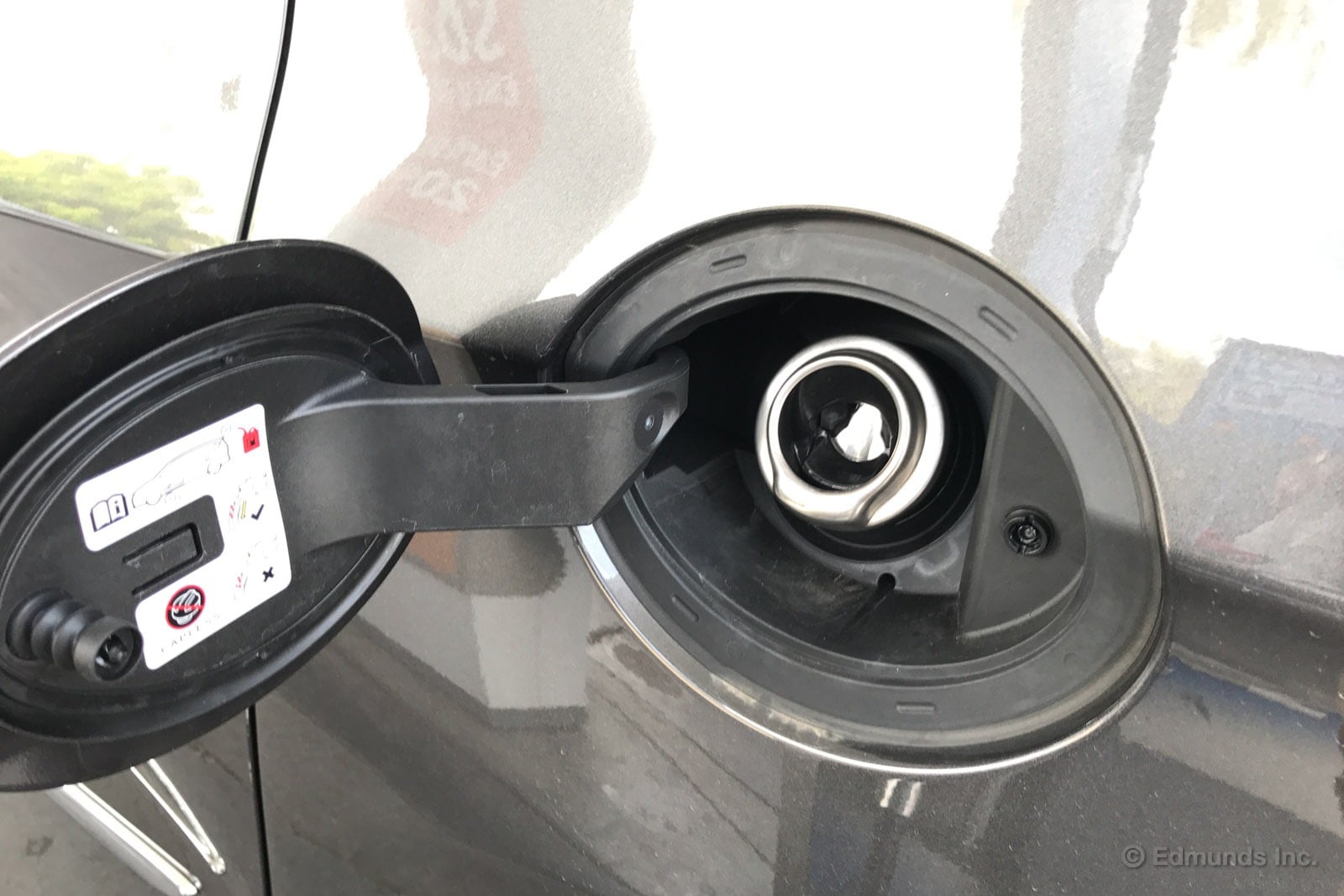
Monthly Update for June 2017
Where Did We Drive It?
June marked 12 months with our long-term 2017 Chrysler Pacifica. We spent the past four weeks doing what the minivan has shown us it does well: Haul stuff. The Pacifica acted as a support car for multiple photo and video shoots. It also carried people and gear to the track for instrumented testing. Additionally, we used the van to transport drywall from the local home supply store.
This was the month editor Josh Sadlier volunteered to spend an entire day in the third row of the Chrysler, considering it a far cry better than the Caravan it replaced. It was in that same moment he also pledged his support to the Pacifica in any minivan-or-crossover debate. Additionally, a run to Home Depot gave me an opportunity to learn something new about the van's cargo area.
What Kind of Fuel Economy Did It Get?
We accumulated just under 1,600 miles on the Pacifica in June. The mix of driving situations must have been just right because our lifetime stats were virtually unchanged from May.
Average lifetime mpg: 19.1
EPA mpg rating: 22 combined (18 city/28 highway)
Best fill mpg: 26.2
Best range: 430.6 miles
Current odometer: 17,498 miles
Maintenance and Upkeep
None.
Logbook Highlights
Comfort
"Really impressed by the third-row accommodations in this van. Legroom, under-thigh support, headroom, you name it. That's pretty much expected of a modern minivan of course, but, man, I could ride back here all day and feel pampered the whole time. In the Pacifica, even the third row is first-class." — Josh Sadlier, senior manager, content strategy
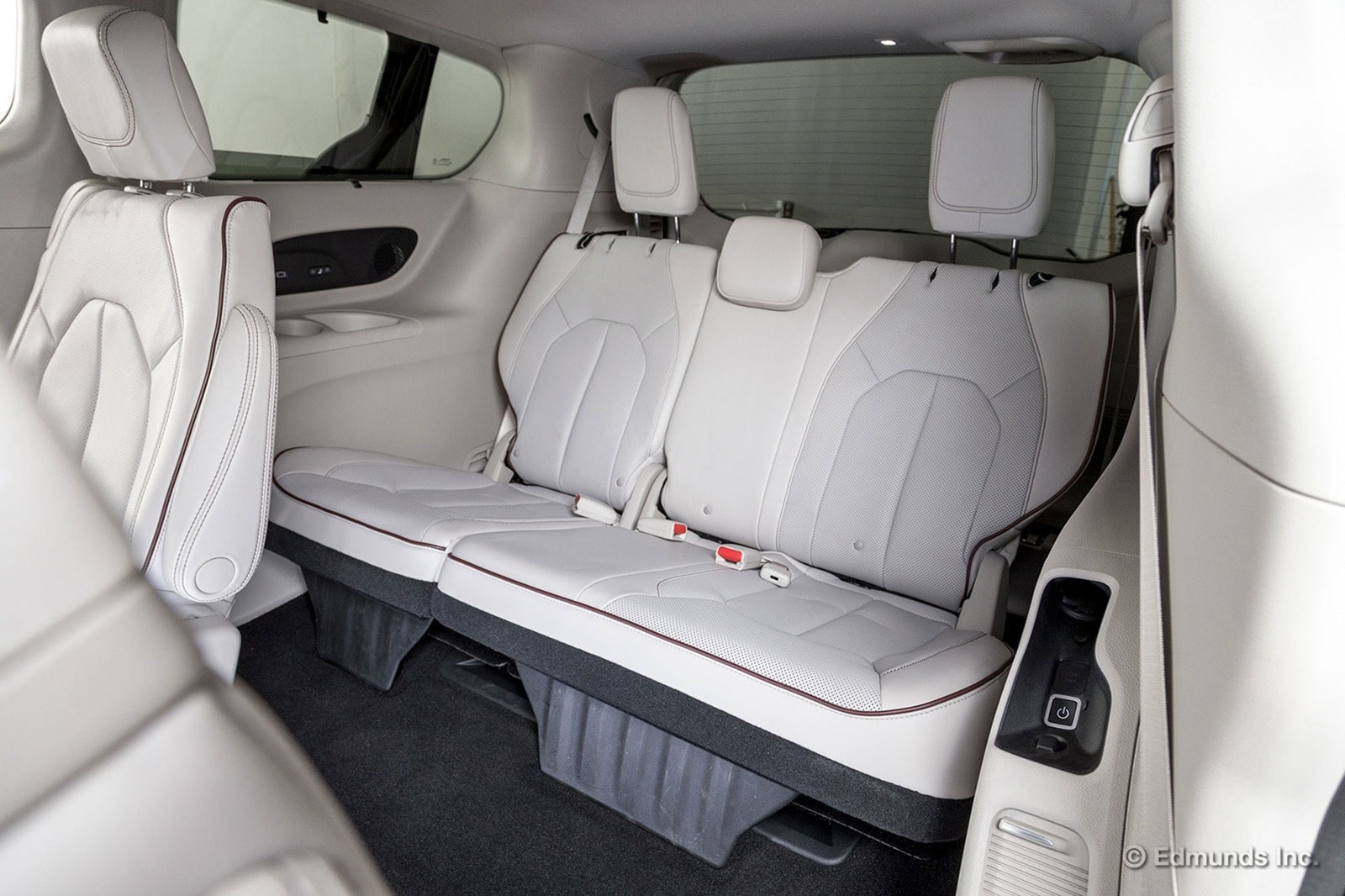
Utility
"I had just lowered the rear seats of the Pacifica to create a flat load floor when I noticed these helpful guides for the first time. There is one on each side. They don't seem like much. But they gave a flat surface that made it easier for me to slide a standard 4-by-8 sheet of drywall into the back of the van." — Mike Schmidt, senior manager, vehicle testing operations
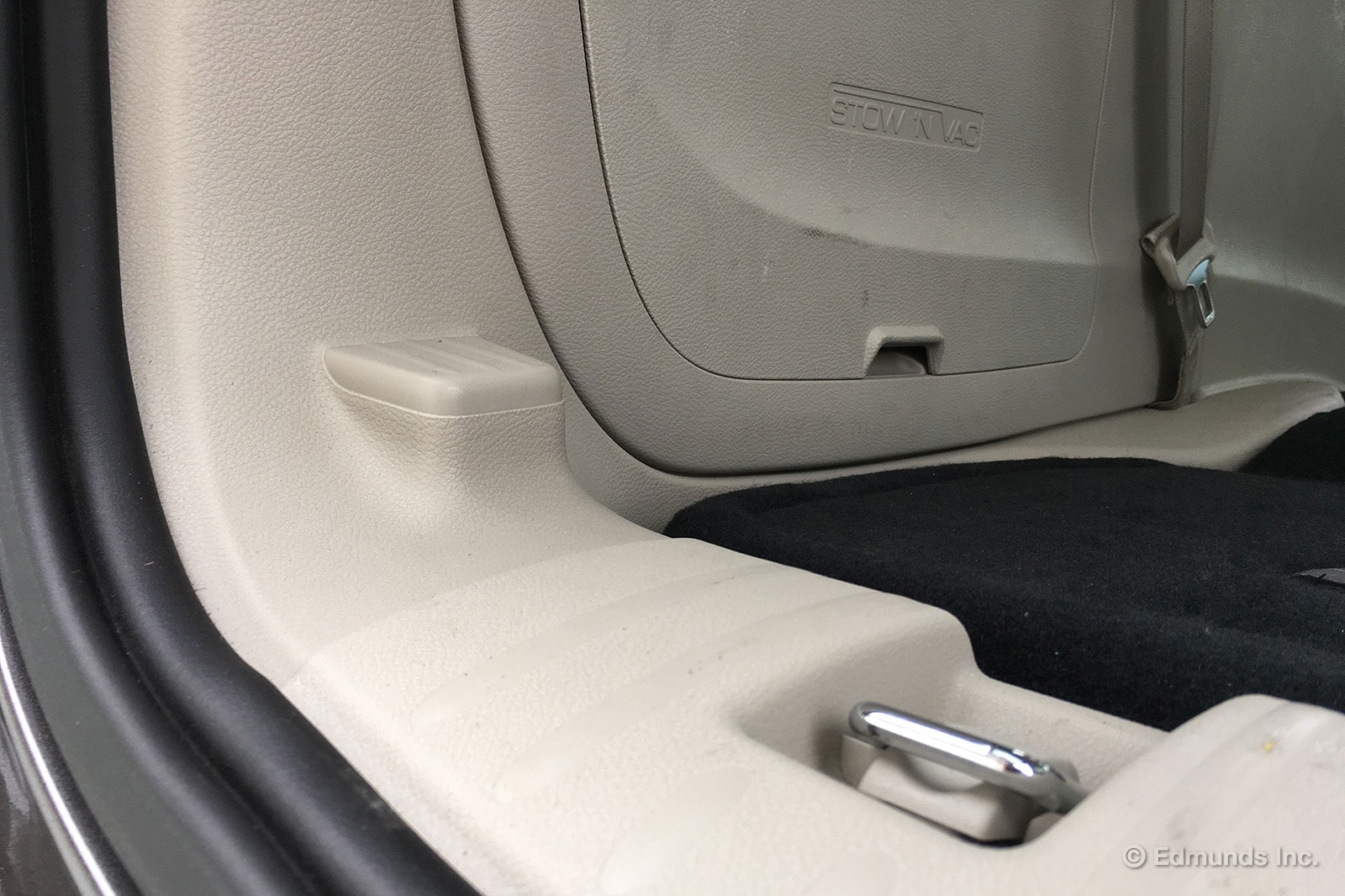
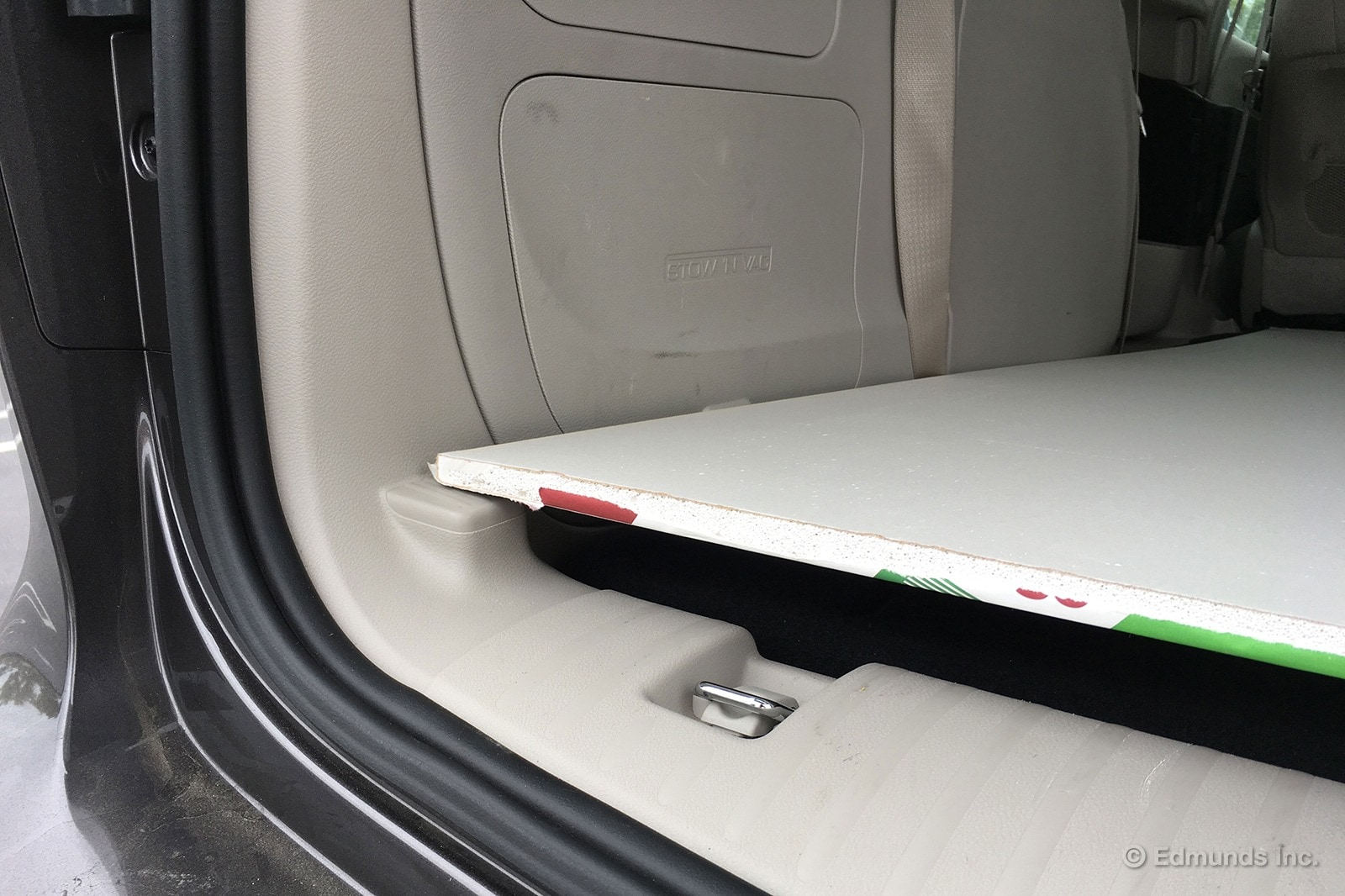
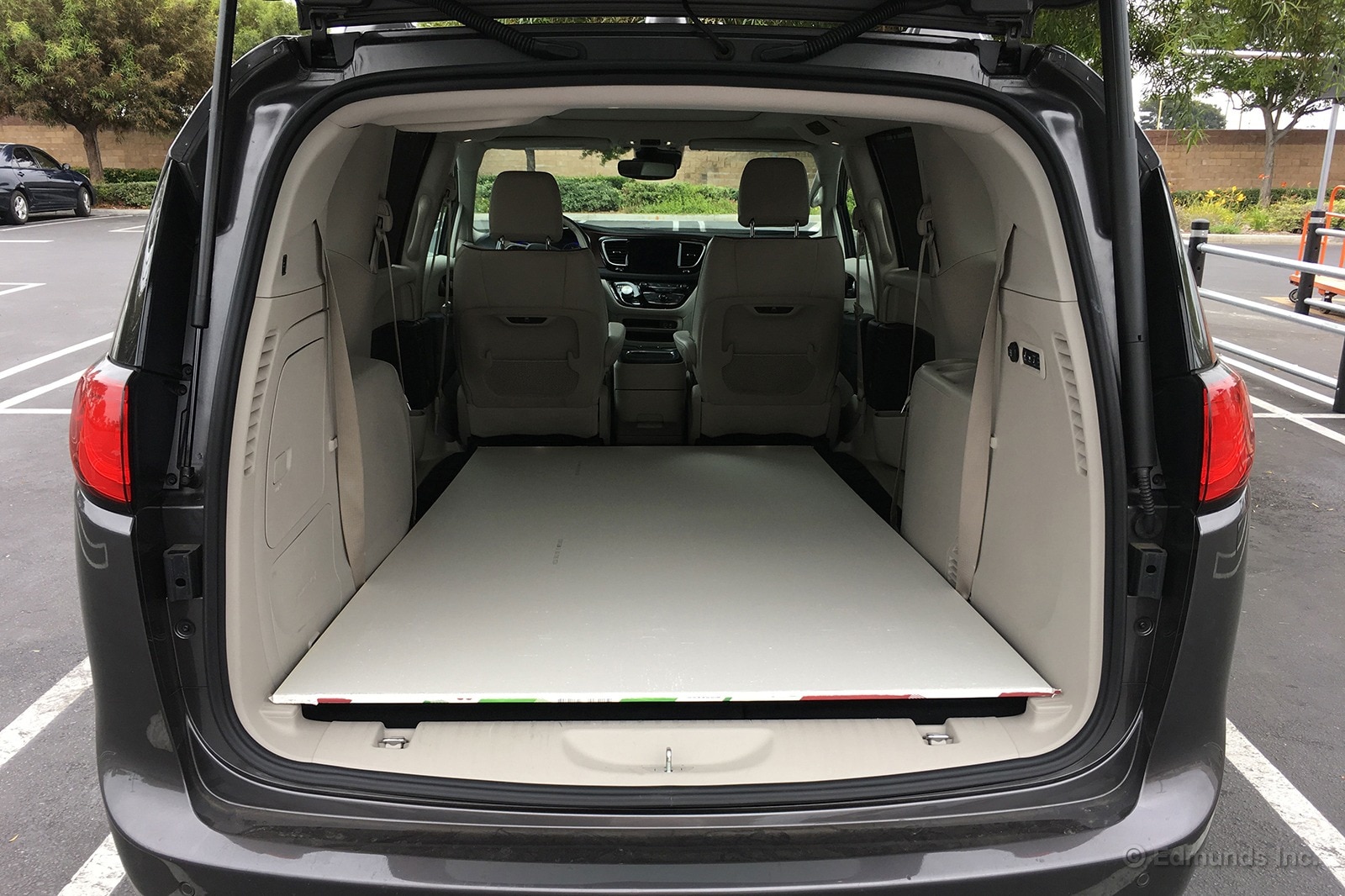
Miscellaneous
"I know the Pacifica is an all-new vehicle, but for those of us who remember the old long-term 2008 Dodge Grand Caravan and its Chrysler Town & Country counterpart, there's quite a stigma to overcome. Those vans did not exactly inspire confidence with their build quality or overall refinement. I'm pleased to report that the Pacifica puts them squarely in the rearview mirror. Nothing jumps out at me as obvious corner-cutting in the Pacifica's interior, and the driving experience is pleasantly smooth. I'd even call it graceful. I genuinely enjoy spending time with this van. It's a huge step forward in an automotive era that's generally defined by incremental progress." — Josh Sadlier
"Every time I drive the Pacifica I am reminded that minivans are simply better everyday vehicles than crossovers. Sure, crossovers have more ground clearance, but that means a higher cargo floor and a less spacious interior. Sure, crossovers look tough (well, sort of), but most of them spend exactly as much time off-roading as our Pacifica. I totally get the appeal of a real SUV; I harbor an unrelenting desire for a previous-generation 4Runner V8, because I want that go-anywhere freedom as much as the next American. But crossovers can't really give you that freedom, and they also can't haul people and stuff nearly as well as minivans. Case closed, for me, at least." — Josh Sadlier

Monthly Update for July 2017
Where Did We Drive It?
July was a highway-heavy month of driving for our 2017 Chrysler Pacifica. I know because most of those miles were spent with my butt in the driver's seat. My kids are still too young to tie their own shoes. So at this age, a minivan is our preferred method for vacation transportation. And we had a road trip in the works.
Summer break is coming to an end, as is our Pacifica's time in the long-term fleet. We decided to celebrate both with a getaway to Mammoth, California. This wasn't my first 1,000-mile jaunt in the Chrysler. Or my second. Yet I still came away from the trip with some new impressions. The van also served as utilitarian, hauling gear to the test track, people and cameras to video shoots, and home decor from, well, the home decor store.
What Kind of Fuel Economy Did It Get?
In one of its busiest months this year, we drove the Pacifica 2,340 miles in July. Lots of cruising increased our lifetime efficiency by one-tenth, to 19.1 mpg. It also contributed to a single-tank fuel economy record of 27.8 mpg, surpassing the previous mark of 26.2 mpg.
Average lifetime mpg: 19.2
EPA mpg rating: 22 combined (18 city/28 highway)
Best fill mpg: 27.8
Best range: 430.6 miles
Current odometer: 19,669 miles
Maintenance and Upkeep
Routine maintenance was limited to a $3 bottle of windshield washer fluid.
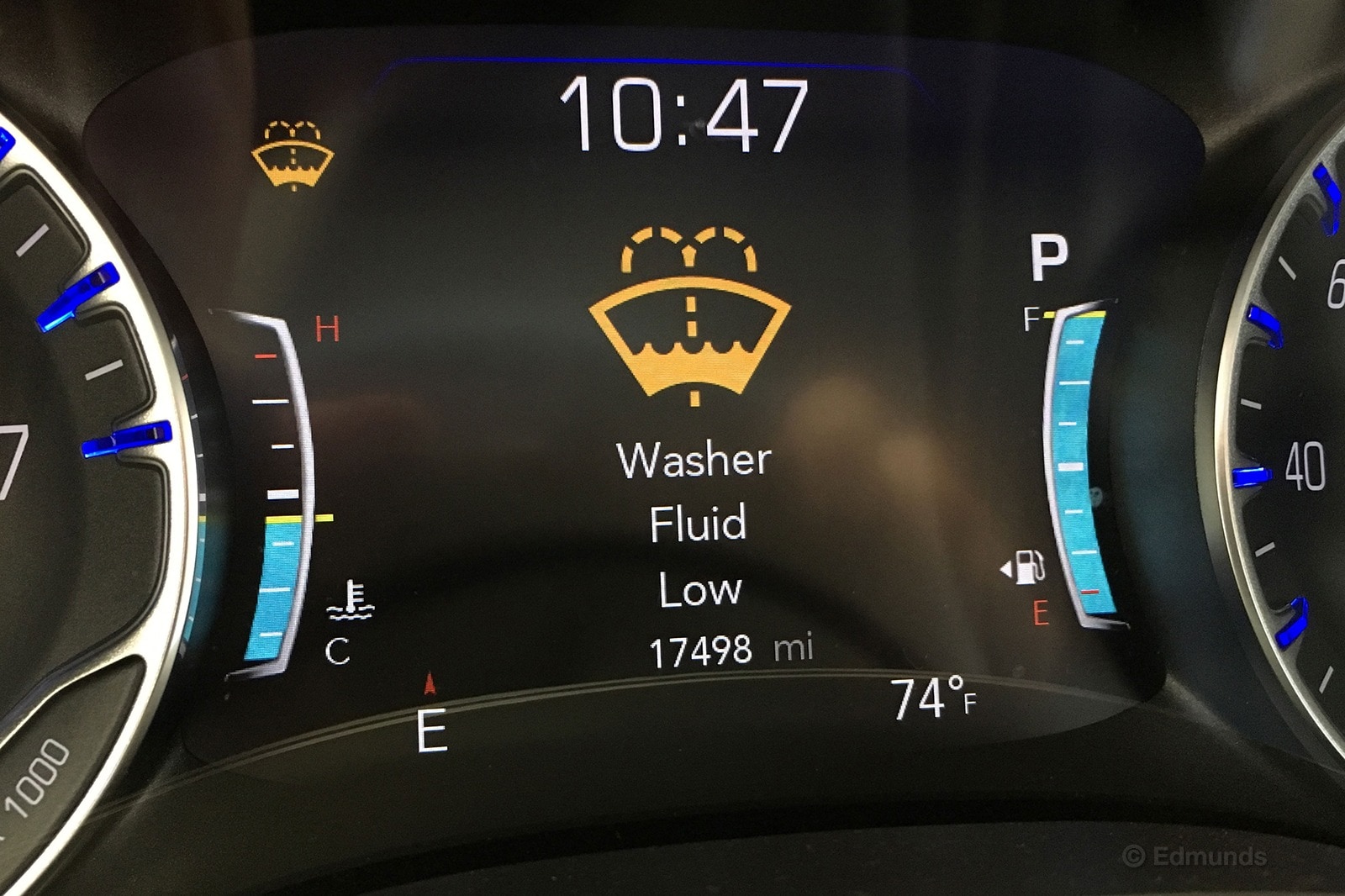
Logbook Highlights
MPG
"The Chrysler Pacifica's fuel economy is surprisingly good. My sister-in-law owns a 2013 Toyota Sienna SE and we took a trip up the coast to Santa Barbara. Our Pacifica returned 19 mpg along the way while her Sienna only managed 16 mpg." — Rex Tokeshi-Torres, vehicle testing technician
Maintenance
"I pulled to a stop in front of my house and looked down. Seeing the odometer at 19,000 miles reminded me of our long-term 2008 Caravan. At this age it was a durability nightmare. Cross a rough patch of asphalt and the cabin became a Dr. Seuss brainstorm session of clunk-plunks, tick-clicks and boing-sproings. This Pacifica is nothing like that. And, nine years later, it better not be. I pressed the button to open the passenger slider and let my kid in. The door responded with a clunk-dunk, clack-crack, pop. Jinx. It still opens and closes. But we'll need to have those noises checked out." — Mike Schmidt, senior manager, vehicle testing operations
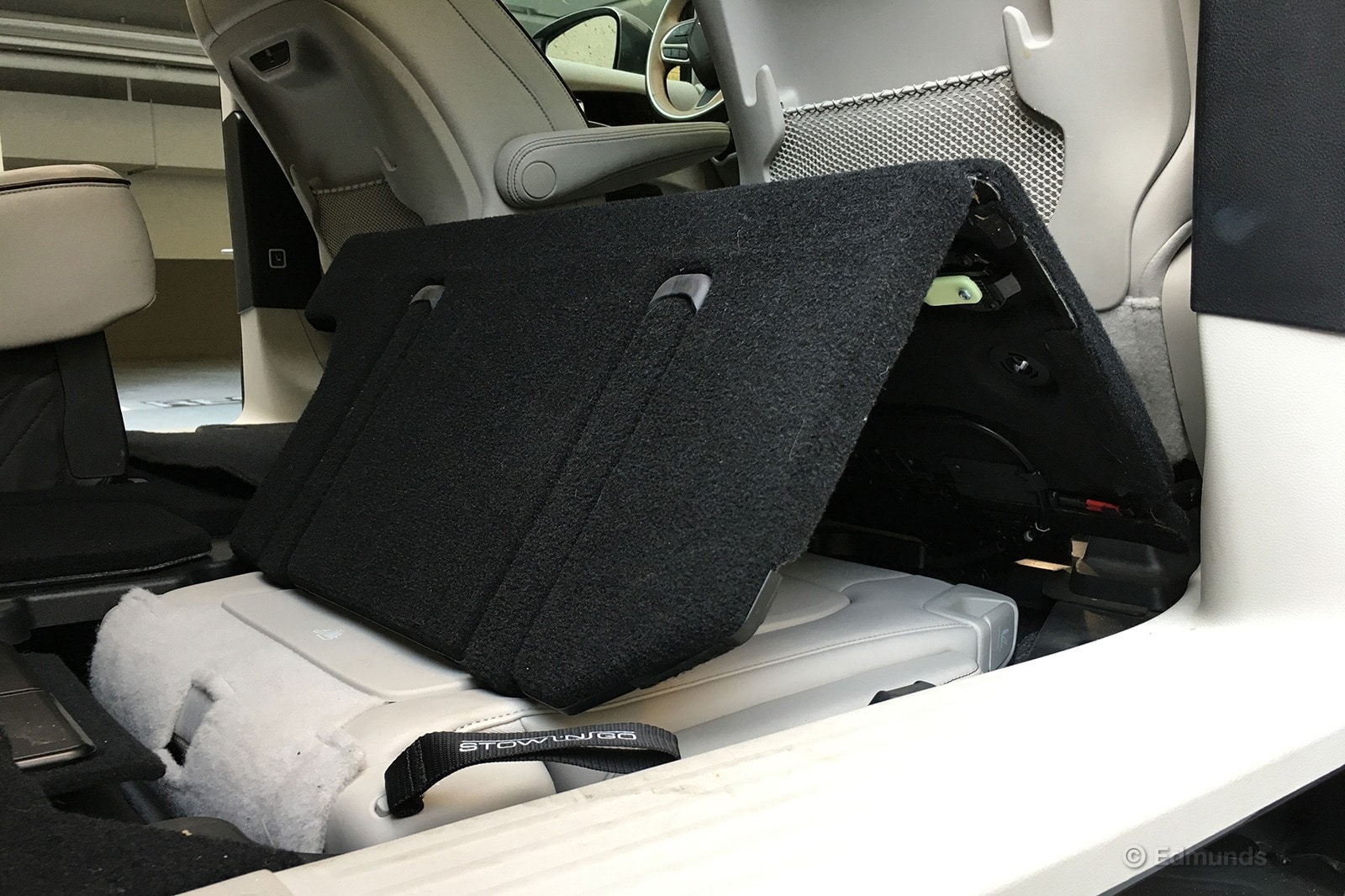
Interior
"When traveling as a video crew, minivans are the best vehicles to get. Easy in, easy out and plenty of power. Stow 'n Go is a must since we don't have the time or space to remove and store 500 pounds of captain's chairs. You might not get street cred, but they work amazingly well as haulers of people and equipment." — John Adolph, senior manager, video content production
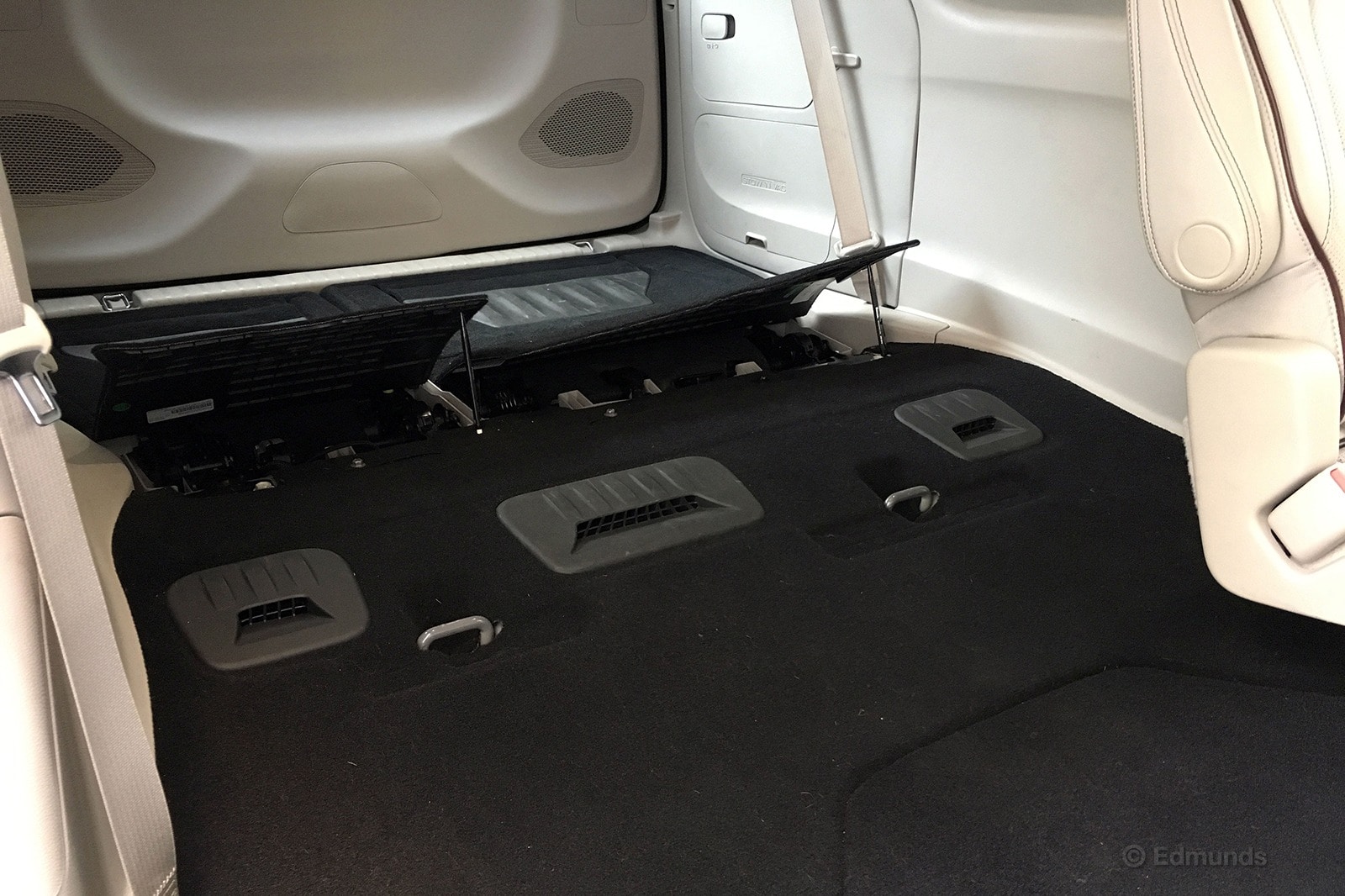
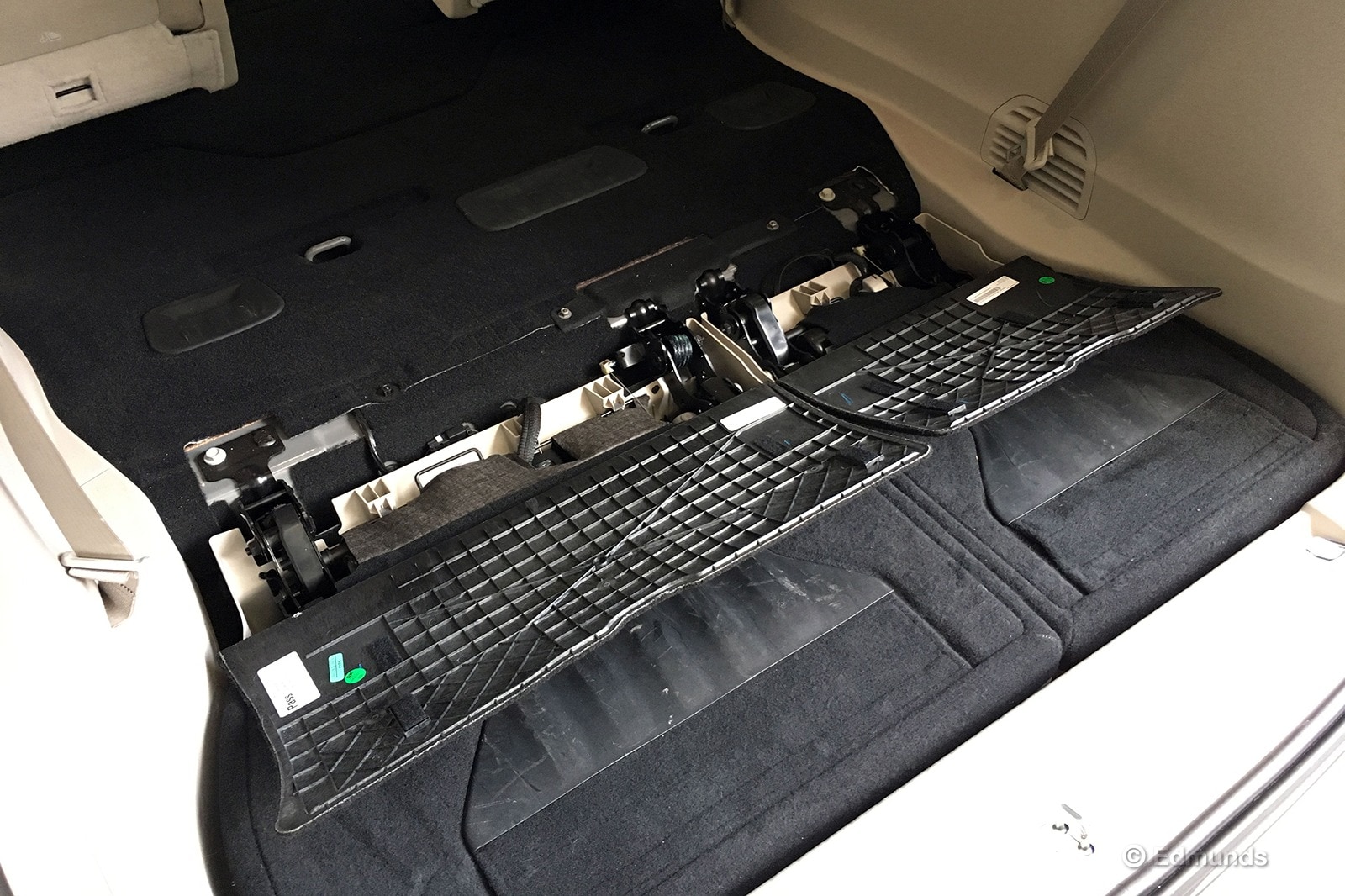
Cargo Space
"It is certainly convenient that the second- and third-row seats of the Pacifica fold into the floor. But the flaps that cover the stowed seats sure are flimsy. I am afraid that I'll break something if I'm not careful about where I step back there." — Mike Schmidt
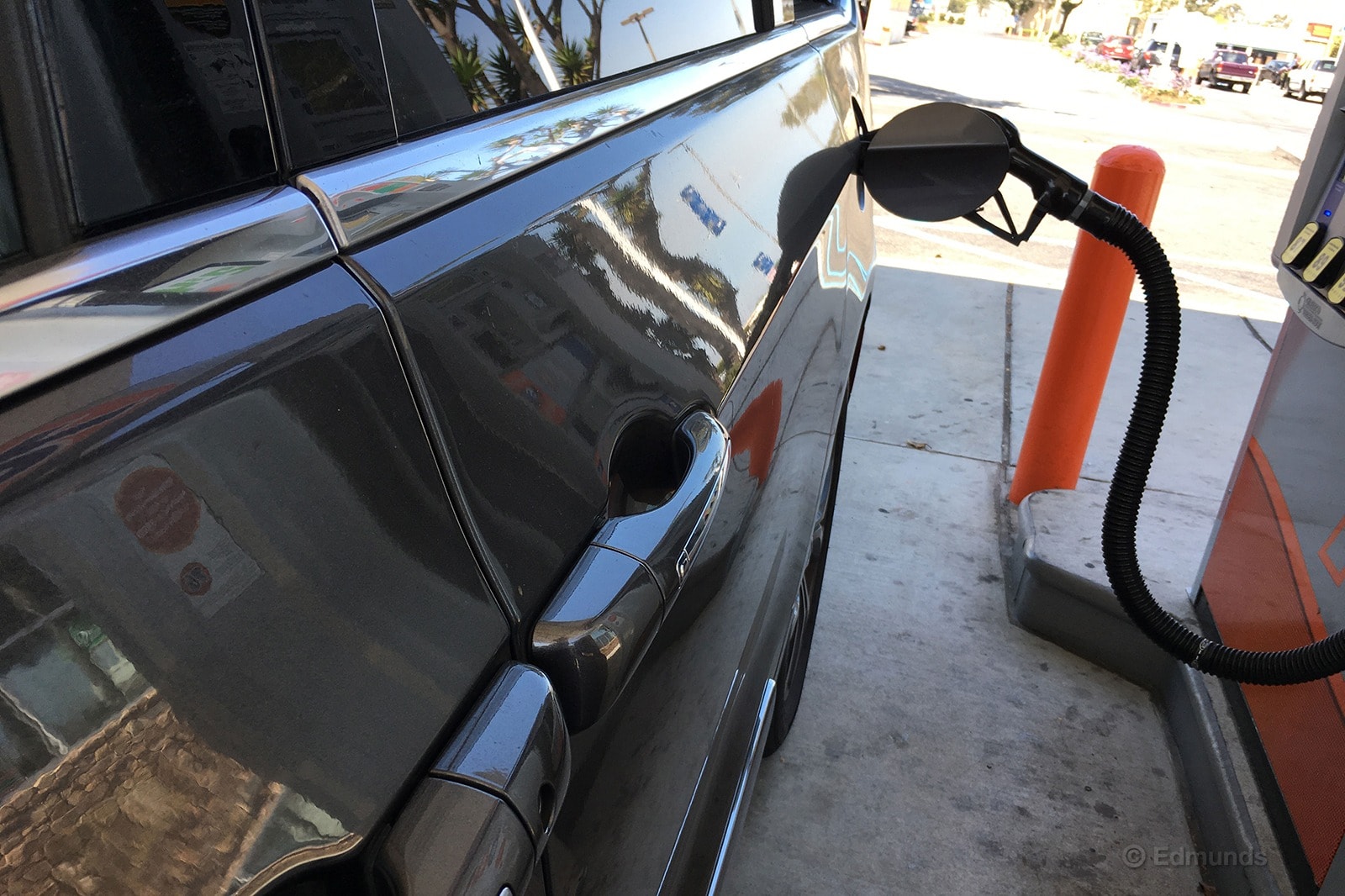
Miscellaneous
"Twice now I've tried to open the driver-side sliding door of the Pacifica while pumping gas. It's a good thing this van is smarter than I am. As if politely suggesting, 'You're a moron,' it lets me crack the door open before tugging the handle back from my hand and closing the door completely." — Mike Schmidt
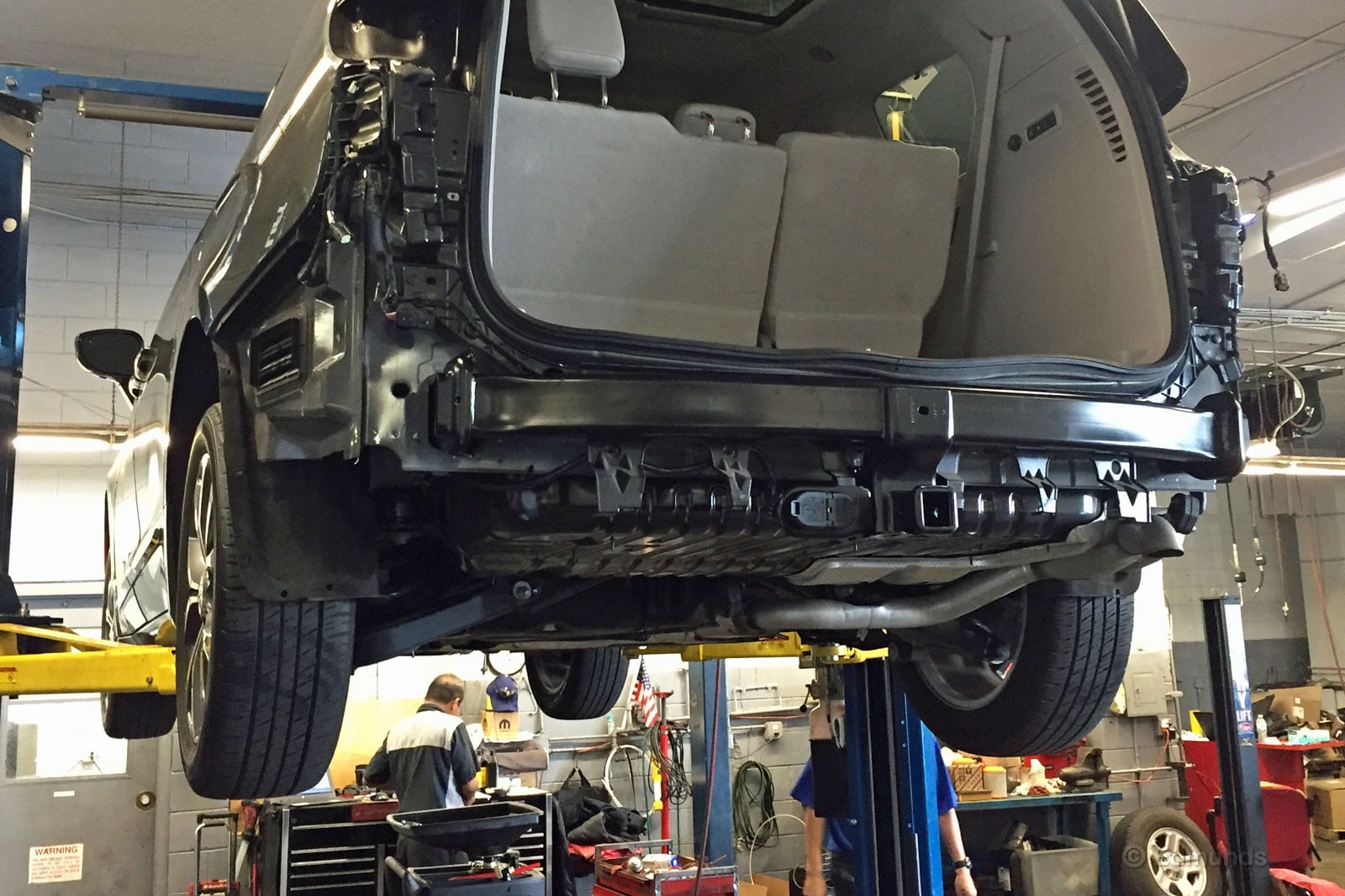
Where did we drive it?
The Pacifica is a great crew vehicle for our video team. It seats seven, gets decent gas mileage, and has enough space and power to haul video and camping equipment. Those are just some of the reasons why we spent a lot of August on the road with the Pacifica, putting more than 2,000 miles on it.
While our staff writer Cameron Rogers did get back in the Chrysler Pacifica in August, much of the van's time was spent in the hands of our video team. The bulk of those 2,000-plus miles came from a seven-day tow-along camping trip we took with Dan Edmunds, our director of vehicle testing. He towed a Happier Camper HC1 trailer with our Tesla Model X from the Edmunds offices in Santa Monica to Tahoe and back.
What kind of fuel economy did it get?
The Pacifica delivered its best single tank ever during its trip with our Model X. On one of the return legs, the Pacifica returned 28.7 mpg, which bested our previous record by almost a full mile per gallon.
In total, we logged 2,301 miles for the month of August and put in 95.7 gallons of 87 octane gas in the tank. That comes out to roughly 24.1 mpg for the month, which helped boost our overall average to 19.6 mpg.
Average lifetime mpg: 19.6 mpg
EPA mpg rating: 22 combined (18 city/28 highway)
Best fill mpg: 28.7 mpg
Best range: 434.8 miles
Current odometer: 22,313 miles
Maintenance and Upkeep
Maintenance was a bear for us this month as we prepped for the long trip to Tahoe and the possibility that we would need to swap the Happier Camper HC1 to the Pacifica should the Tesla Model X run out of juice. We wanted to be sure that we had all the right equipment in place and all the maintenance up to date. We requested the 20,000-mile service, a repair for that nagging squeaky door, a USB port fix and a hitch install.
Here's how it went according to our video production manager, John Adolph, who was in charge of getting everything up to speed before hitting the road:
Thursday, August 17
"I called up my local dealer and asked if they could install a hitch by Saturday, since we were leaving early Monday for a 'family trip.' The service manager had me call [the parts department] to make sure they had the parts in stock. The parts department had the hitch but not the wiring. After a bit of wrangling, the parts manager told me that the wiring could be there by Friday morning. He did mention that there was an additional trim piece that should be installed for aesthetic reasons, but he told me that it wouldn't be essential if we had to leave without it."
Friday, August 18
"We dropped the Chrysler Pacifica off at 7 a.m. Around 4:30 p.m. I got a call from Paul in service who said that it was taking much longer than expected to install the hitch and the Pacifica wouldn't be ready till midday Monday. For obvious reasons that wasn't going to work for us, so I decided to swing by the dealership. After waiting for 20 minutes, I finally got to take a look at the van.
"It was a bit of a disaster. The Pacifica was on the lift, parts were strewn on the floor, and it didn't look like much had happened since I dropped it off. I explained that I was leaving Monday and that they had all day Saturday to finish it up.
"Since it was taking so long to install the hitch, I also asked about the potential cost of labor for such a job. The service manager quoted $1,000. I was astounded. It would have been nice to know that the labor was going to be almost double the cost of the hitch ahead of time.
"As it turns out, this was the service department's first time installing a hitch on the Pacifica. At this point it was late in the day, and the dealer was getting ready to close up. The service manager said he would give me a discount since it had been such a bear and that someone would call me first thing in the morning to keep me updated. The tech working on the hitch would stay late and come in on his day off to finish."
Saturday, August 19
"The service department never called. I went by at noon and waited for 30 minutes to talk to someone. Eventually a steward came to get me to take me back to the van. The tech who had stayed late and worked through his Saturday was great. He was cheerful about the Saturday work, gave me the original parts, and explained the install process for the hitch.
"It turns out the install was a bit trickier than everyone had expected. The hitch replaced the aluminum bumper and was bolted to the frame. The tech had to enlarge the holes and wait for the aforementioned 'trim part' because, as it turned out, it was an essential piece of the puzzle. It didn't show up until that morning.
"I was ready to hit the road and pay the bill. My file went to the desk and they handed me a bill for more than $1,500, far more than I'd expected. I asked about the promised 'adjustment' to labor and was told that that had already been accounted for. There was 'nothing else' they could do. After a bit of haggling they offered to knock off another hundred bucks and discount the parts.
"I asked for a more detailed breakdown of the totals and was told that it wasn't possible. In looking at the bill, there are no actual hours of labor listed, and it appears that they changed the oil twice and charged us for it. All in, it cost a whopping $1,228.03.
"The USB was never fixed because they ordered the wrong unit and, as is typical of any squeak or rattle, I couldn't replicate the issue when we went in for service.
"All that being what it is, the Pacifica was great during our trip north. It turns out we didn't need to utilize the new hitch setup on the trip, and the USB port magically fixed itself."
Logbook Highlights
Comfort
"After spending a few days in a short-term 2017 Toyota Sienna, I decided to jump in the Pacifica for a back-to-back comparison. A major difference between the two was obvious from the moment I dropped into the Pacifica's driver seat. Man, this seat is uncomfortable. My primary complaint is with the leather upholstery; it's far too stiff to be comfortable for more than a couple hours at a time. Not only does this eventually introduce pressure points over a lengthy road trip, it doesn't allow you to sink into the seat. It would be a cliche to say that you sit on the seat rather than in it, but this is a fairly apt description of the Pacifica's throne.
"This generation of the Sienna has been on sale since the 2011 model year. Six years was plenty of time for Chrysler to benchmark its developing Pacifica against the competition. In the area of seat comfort, the Pacifica is outclassed by the segment's elder statesman.” — Cameron Rogers, associate staff writer
Wrap-Up
What We Got
After decades of offering two different minivans, Chrysler consolidated its lineup into a single model for 2017. The Chrysler Pacifica replaced both the Dodge Grand Caravan and the Chrysler Town & Country, bringing with it a host of innovations and a dramatic new design. This was a big deal for Chrysler, and as such, it was at the top of our list of vehicles that deserved a place in our long-term fleet.
We opted for the top-level Limited to test every available bell and whistle. Our Pacifica had power-sliding rear doors and a power rear liftgate, rear parking sensors, an 8.4-inch infotainment and navigation touchscreen, dual sunroofs, an onboard vacuum cleaner, 13-speaker sound system, heated and ventilated front seats, heated rear seats and even a heated steering wheel.
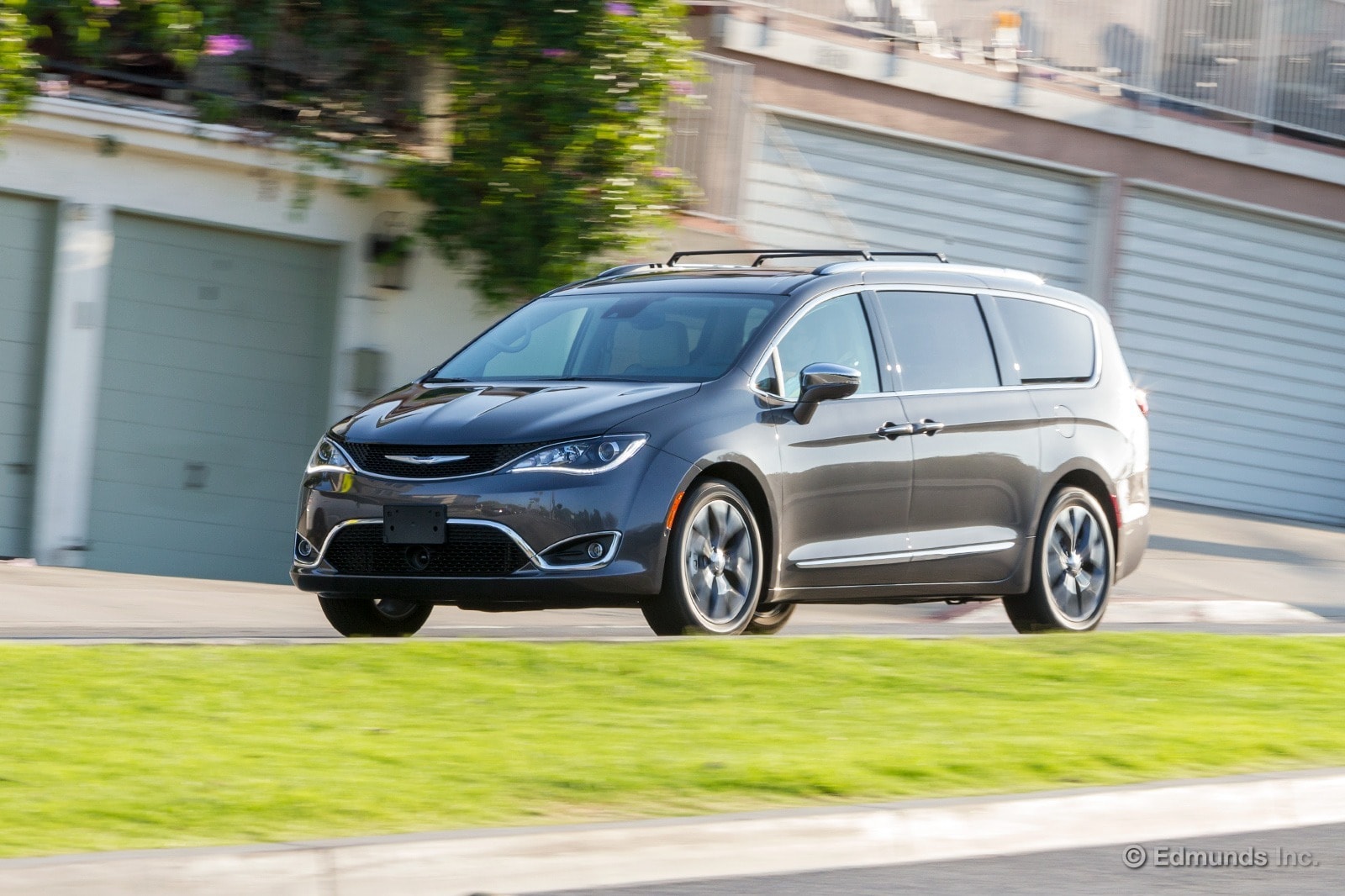
We added some optional equipment, too. The Tire and Wheel package ($995) got us 20-inch wheels that we found to be far more attractive than the stock design. The Advanced SafetyTec package ($1,995) added many high-tech driver assistance features. It included forward collision warning, forward collision mitigation with automatic braking, adaptive cruise control, automatic wipers, automatic high-beams, lane departure warning and intervention, and an around-view camera system. Another $175 for the KeySense teenage-driver key rounded out the last of the options on our van.
After we added our options, our Pacifica listed at $46,460. After some negotiating with the Russell Westbrook Chrysler dealership in Van Nuys, California, we paid $43,289 and the test began. Here's how the Pacifica fared during its 12-month stay.
Performance
"From the driver's seat, the sound this engine makes over 5K rpm is addictive. It also goes down the road pretty well. I'm also impressed that the transmission will hold revs for a moment if you've been giving it the beans — no Sport mode needed." — Will Kaufman, associate staff writer
"We've had our Pacifica in our long-term fleet for about nine months now. As Josh Sadlier noted in our December update, the nine-speed automatic transmission, though potentially suspect, works just fine. Maybe there are others on our staff who are more critical and just haven't voiced their complaint. But in my opinion the tranny upshifts smoothly in normal driving and downshifts when I need it to." — Brent Romans, senior editor
MPG
"The Chrysler Pacifica's fuel economy is surprisingly good. My sister-in-law owns a 2013 Toyota Sienna SE and we took a trip up the coast to Santa Barbara. Our Pacifica returned 19 mpg along the way while her Sienna only managed 16 mpg." — Rex Tokeshi-Torres, vehicle testing technician
"Twice now I've tried to open the driver-side sliding door of the Pacifica while pumping gas. It's a good thing this van is smarter than I am. As if politely suggesting, 'You're a moron,' it lets me crack the door open before tugging the handle back from my hand and closing the door completely." — Mike Schmidt, senior manager, vehicle testing operations
Comfort
"I can't get comfortable in the front seat. It's certainly not the worst, but the backrest is built in a way that made it hard for me to find a balance between too upright and too reclined. My upper back was starting to ache a little by the end of my 1.5-hour commute, and I can't think of a worse feature in a minivan than giving Dad a backache a few hours into the family road trip to the Grand Canyon." — Will Kaufman
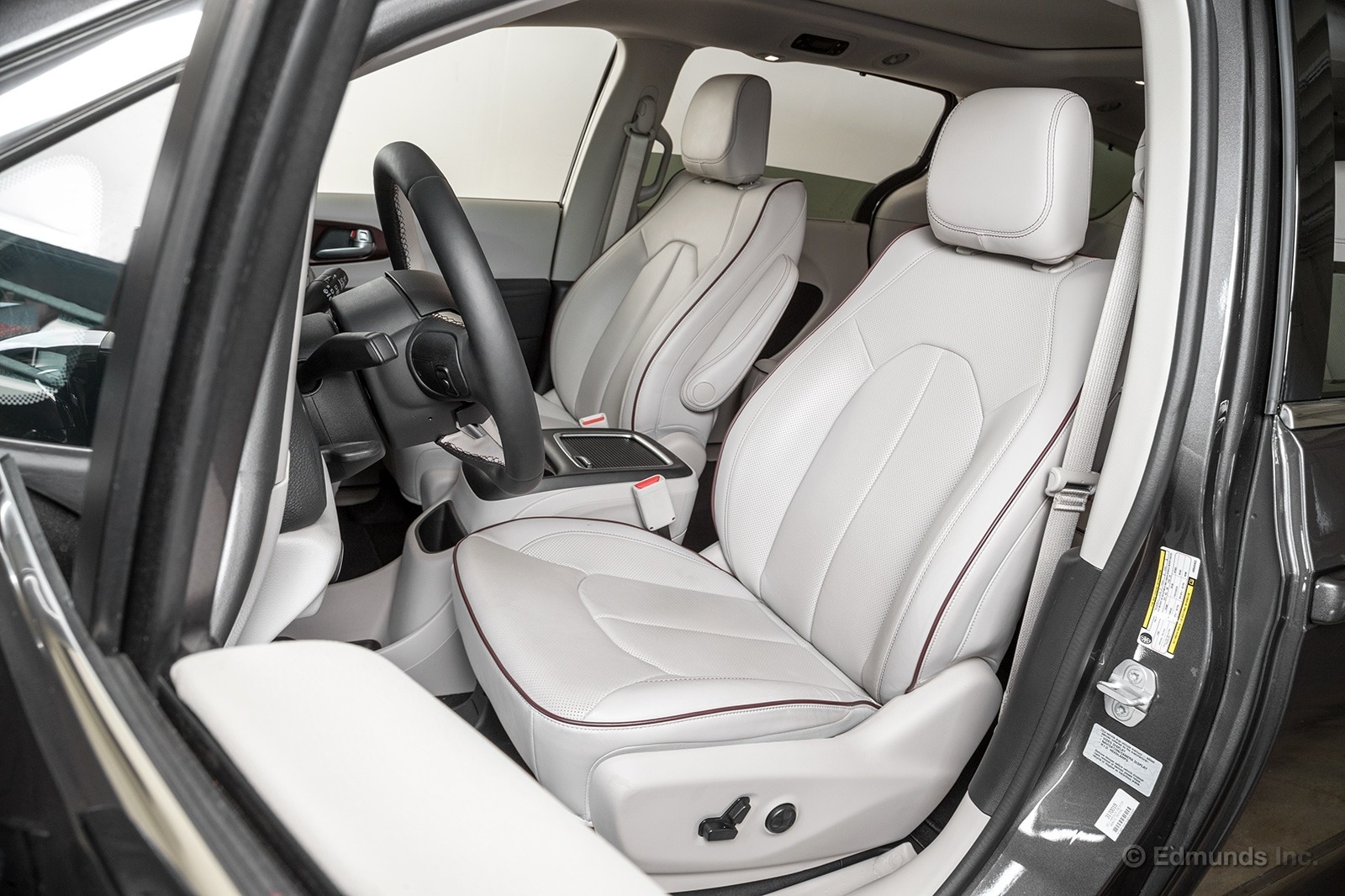
"Really impressed by the third-row accommodations in this van. Legroom, under-thigh support, headroom, you name it. That's pretty much expected of a modern minivan of course, but, man, I could ride back here all day and feel pampered the whole time. In the Pacifica, even the third row is first-class." — Josh Sadlier, senior manager, content strategy
Cargo Space
"Our Pacifica has a roof rack with stowable cross rails. It only takes a minute or two to change it from full crossbars to no crossbars at all. And no tools are required because it's all done with thumbscrews. Also, note the molded-in tie-down hooks. Well done." — Dan Edmunds, director of vehicle testing
"It is certainly convenient that the second- and third-row seats of the Pacifica fold into the floor. But the flaps that cover the stowed seats sure are flimsy. I am afraid that I'll break something if I'm not careful about where I step back there." — Mike Schmidt, senior manager, vehicle testing operations
Interior
"These vans might be designed for hauling kids, but they're equally adept at carrying adults in perfect comfort. Drove with another couple to an Anaheim Ducks game, and they were pleasantly surprised with the interior of the Pacifica. 'This looks and feels like a luxury car' was just one of their comments from the trip. 'The navigation screen in this car makes my BMW's system look ancient' was another." — Ed Hellwig, senior editor
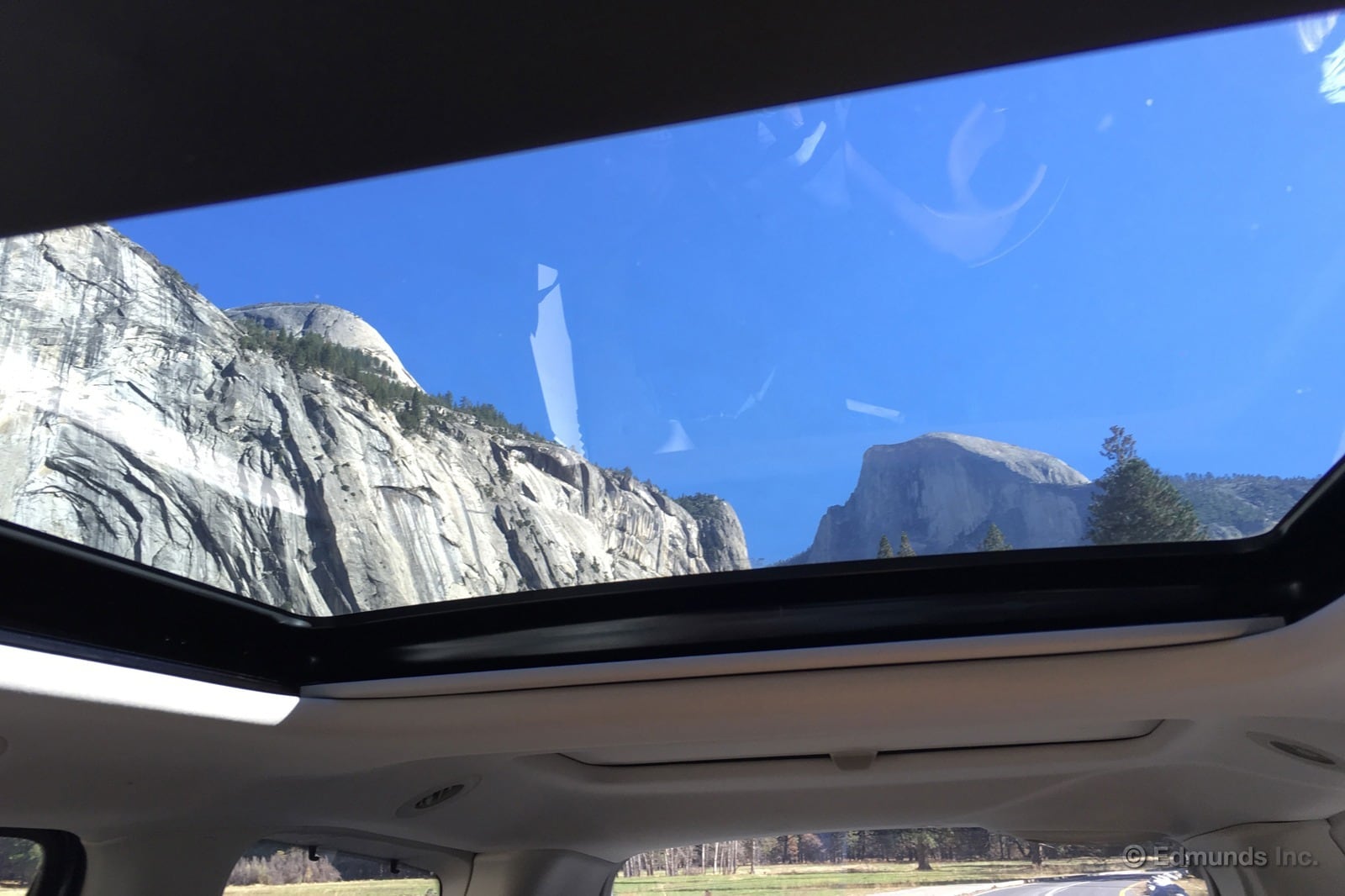
"I drove the Pacifica to Yosemite National Park last weekend. One feature of our Pacifica Limited that added a special element to the trip was its dual sunroof. So much of the scenery down in the valley is vertical, so the ability to look through the roof rather than crane our necks to see out of the side windows made the views that much more memorable." — Mike Schmidt
Audio and Technology
"It's funny to see what kids latch onto in cars these days. While picking up two of the grommets from school the other day, the 11-year-old neighbor boy hopped into the second row and proclaimed, 'Whoa, USB in the seat!' referring to the USB ports in the Pacifica's front seatbacks. ... Granted, it's a bit much to expect kids to get pumped on minivan design or whatever six-cylinder is under the hood. But, hey, the promise of uninterrupted power to your tablet is a powerful draw for a kid, I suppose." — Dan Frio, automotive editor
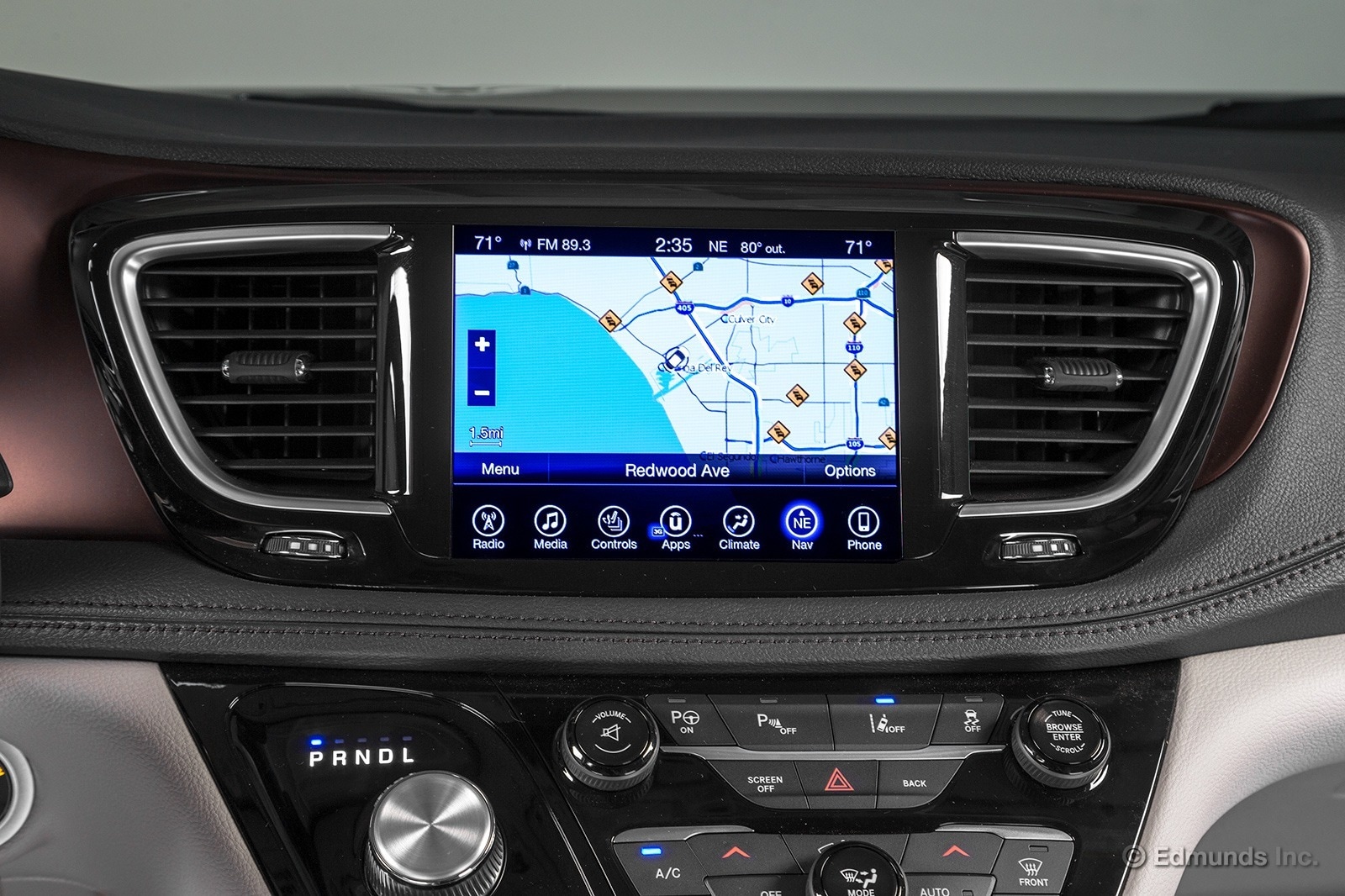
"As much as I like the crisp and clear navigation display on the Pacifica, the touchscreen controls are a little too slow to respond for my taste. I often zoom the display screen in and out to see what kind of traffic is up ahead. The '+' and '-' buttons are sometimes hard to hit just right. I always prefer a hard button or knob for that function." — Ed Hellwig
"This is not a refined adaptive cruise control system. It's as if it slows down in two stages. Stage one is smooth. It reacts well to the vehicle ahead and initially squeezes the brakes lightly. Stage two is frantic. As the car ahead continues to slow, the Pacifica waits too long and then grabs the brakes heavily to compensate. It uses a similar logic when accelerating back up to speed. It waits a bit too long then surges abruptly." — Mike Schmidt
Maintenance
"After I arrived and met with my service tech, he alerted me to a few technical updates [sliding-door module reflash and TSBs for the air conditioning and missing vacuum warning labels]. ... These things required a specialized technician, which meant the dealership would need the Pacifica all day versus the previously agreed-upon two hours. 'All day' subsequently turned into 'First thing tomorrow morning.' … Total cost for this experience was $122.82." — Michael Massey, vehicle testing assistant

"After six weeks, the Pacifica saga was over. We now have two fully functional standard Chrysler fobs, one KeySense fob that works as intended and more keys in various states of operation. Here's the full breakdown:
Current key count: 7
Chrysler-branded keys (fobs don't work; keys don't work): 2
KeySense-branded keys (fob works in KeySense mode; key works): 1
KeySense-branded keys (fob works in Normal mode; keys don't work): 2
Chrysler-branded keys (fob works in Normal mode; keys work): 2
Finally." — Cameron Rogers, staff writer
Miscellaneous
"Only one thing prevented me from getting a good night's sleep in our Chrysler Pacifica ... the air mattress I forgot to bring. Spacewise, it's a great minivan for car-camping because of its Stow 'n Go middle-row seats." — Dan Edmunds
"I know the Pacifica is an all-new vehicle, but for those of us who remember the old long-term 2008 Dodge Grand Caravan and its Chrysler Town & Country counterpart, there's quite a stigma to overcome. Those vans did not exactly inspire confidence with their build quality or overall refinement. I'm pleased to report that the Pacifica puts them squarely in the rearview mirror. Nothing jumps out at me as obvious corner-cutting in the Pacifica's interior, and the driving experience is pleasantly smooth. I'd even call it graceful. I genuinely enjoy spending time with this van. It's a huge step forward in an automotive era that's generally defined by incremental progress." — Josh Sadlier
Maintenance & Repairs
Regular Maintenance:
Routine service for the Pacifica came in 10,000-mile intervals. That made for just two routine dealer visits during our test: one at 10,000 miles and another at 20,000 miles. But scheduled items weren't the only ones addressed at these appointments. And those weren't the only times we had to see a dealer for maintenance. We spent a total of $267 for regular service.
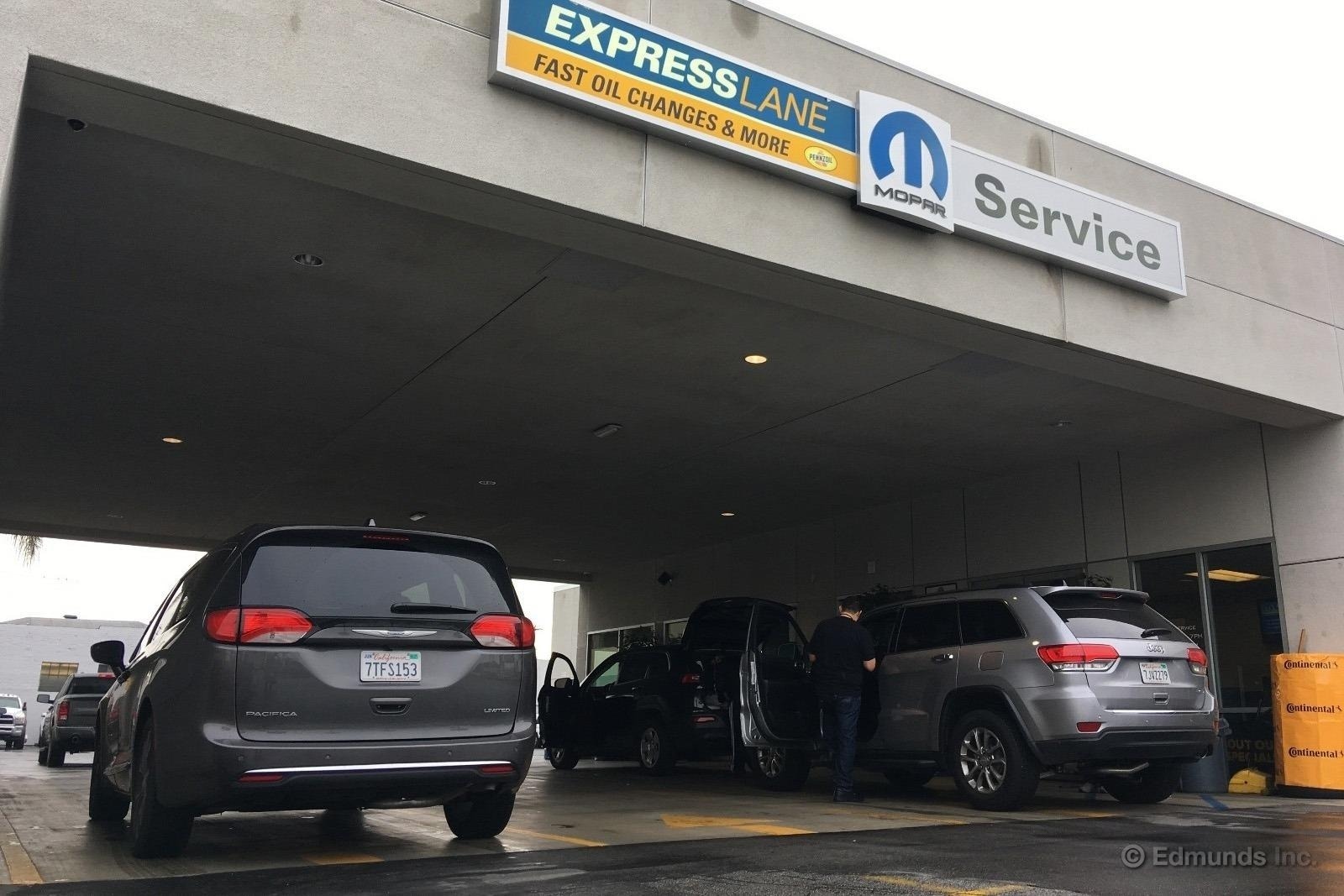
Service Campaigns:
Before the Pacifica asked for its first oil change or tire rotation, we had a bit of a debacle with key fobs. At the time of purchase our van had three keys. One was labeled KeySense and designated to limit some features for teen drivers. The other two allowed normal operation. In our case they were mixed up, and it took five dealer visits and six weeks of phone calls and part-ordering to make it right.
In the past year our Pacifica also had some technical service bulletins (TSBs) addressed. One included a reflash to improve the operation of both sliding doors. The right side later needed further attention when it started groaning each time it opened. A second TSB checked for air-conditioning leaks, of which ours had none. The third was issued to affix missing vacuum warning labels. None of these repairs required a separate dealer visit. The only unresolved issue during our test was that of a failed USB port in the dash. Parts were ordered under warranty. The van spent a total of six days out of service in some state of repair.
Fuel Economy and Resale Value
Observed Fuel Economy:
The EPA estimates 22 combined mpg (18 city/28 highway) for the Pacifica. Our lifetime average was 19.5 mpg, with a best single tank of 28.7 mpg. The longest distance traveled between fuel fill-ups was 435 miles.
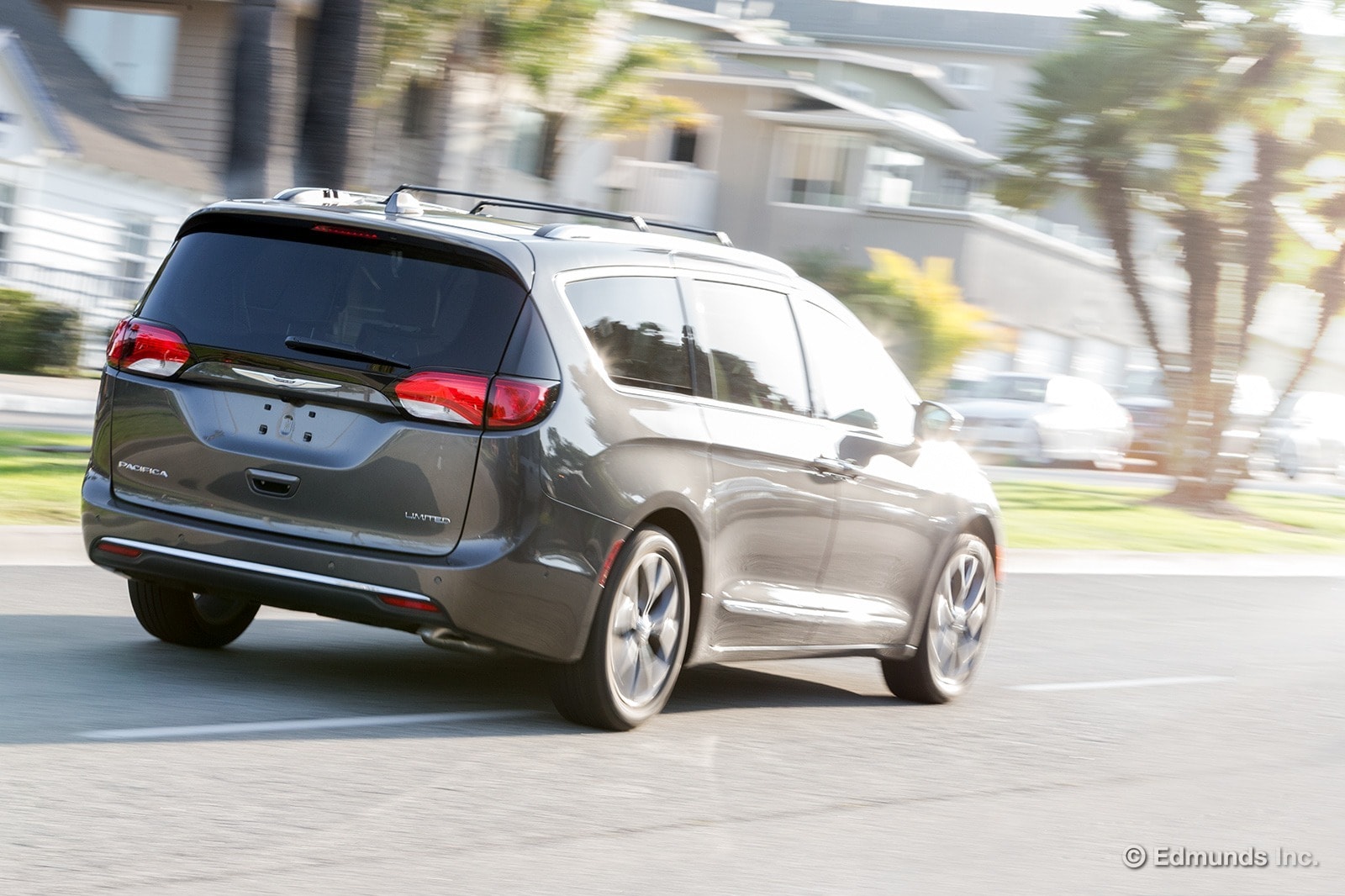
Resale and Depreciation:
We purchased our Pacifica for $43,289 one year ago. Now 22,532 miles later, Edmunds TMV Calculator valued the Chrysler at $34,235 based on a private-party sale. Our video team had it sights set on the minivan due to its exceptional functionality as a support vehicle, so the sale was easy. This car was retired from editorial service and sold to another department inside Edmunds for exactly the TMV price. That marked 21 percent depreciation.
Summing Up
Pros:
Strong engine and smooth-shifting transmission. Capable of delivering up to 28 mpg and 430 miles on a tank. Stow 'n Go seating has definite advantages over the seat-storage model of its competitors. Easy-to-configure roof rails for added storage.
Cons:
Driver's seat didn't feel comfortable for all drivers. Many of the electronic driver assistance features felt as if they could use another round of refinement. Our dealer service experiences were hit-and-miss. Flaps covering the stowed seats are flimsy.
Bottom Line:
Solid all-around performance, a spacious and flexible cabin, and a long list of useful features make the Pacifica one of the best minivans on the road today.
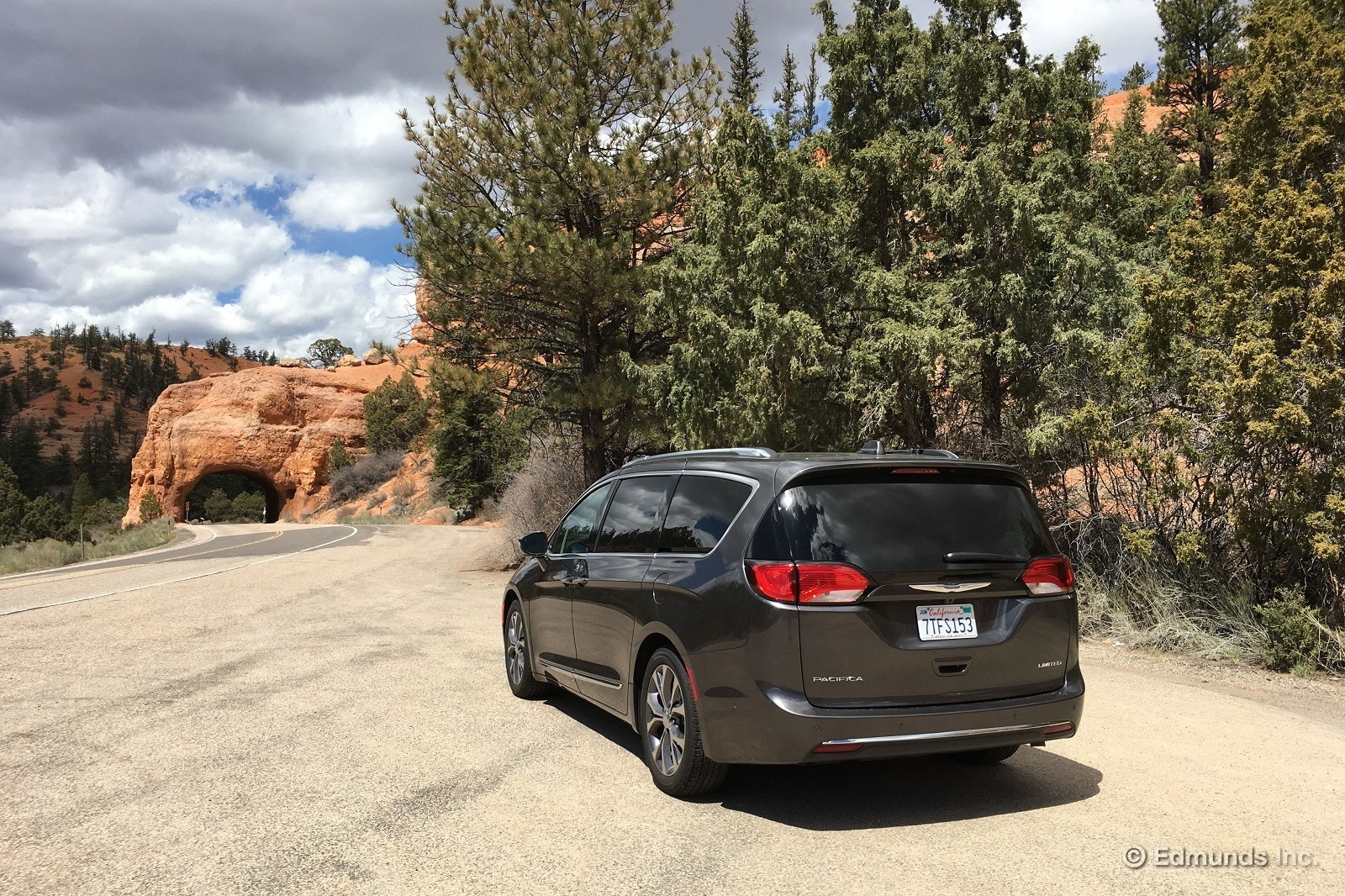
| Total Body Repair Costs: | None |
| Total Routine Maintenance Costs: | $266.53 (over 12 months) |
| Additional Maintenance Costs: | $3 for a jug of windshield wiper fluid |
| Warranty Repairs: | TSB repairs: reflash power-sliding doors; add lubrication for right-rear door latch; check for air-conditioning leaks; affix missing vacuum warning labels. Replace nonfunctioning USB port. |
| Non-Warranty Repairs: | None |
| Scheduled Dealer Visits: | 2 |
| Unscheduled Dealer Visits: | 5 |
| Days Out of Service: | 7 |
| Breakdowns Stranding Driver: | None |
| Best Fuel Economy: | 28.7 mpg |
| Worst Fuel Economy: | 10.2 mpg |
| Average Fuel Economy: | 19.5 mpg |
| Best Range: | 435 miles |
| True Market Value at service end: | $34,235 (private-party sale) |
| What it Sold for: | $34,235 |
| Depreciation: | $9,054 (21% of paid price) |
| Final Odometer Reading: | 22,532 miles |
Disclaimer:
Edmunds purchased this vehicle for the purposes of evaluation.